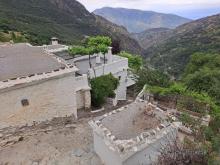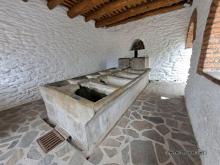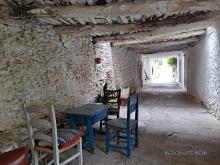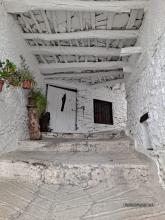The Alpujarra of Granada.
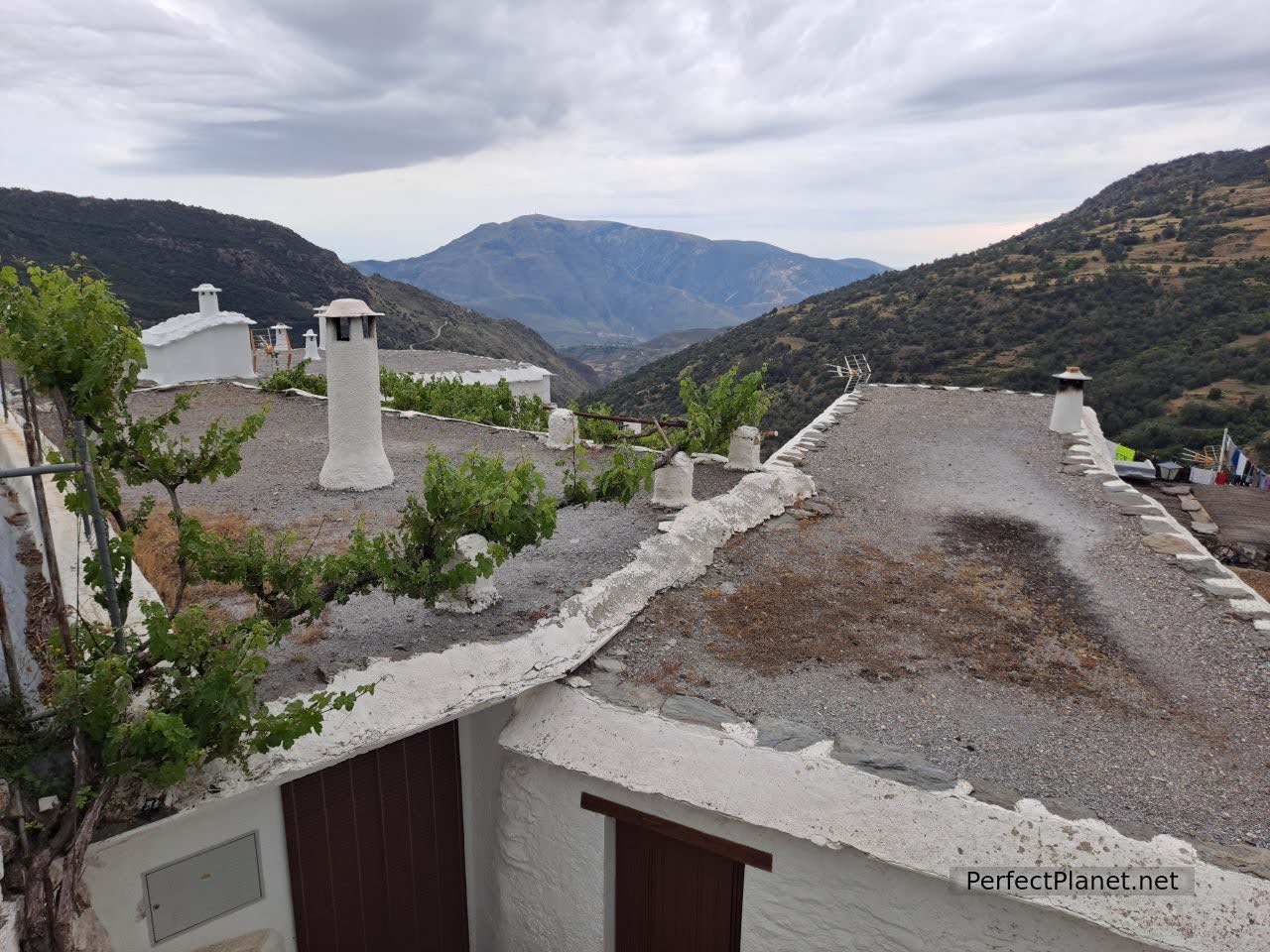
Terraos
Situated at the foot of the Sierra Nevada National Park, is one of the most beautiful and picturesque areas of the province of Granada.
Its white villages, recognised as some of the most beautiful villages in Spain, stand out among the beautiful rugged landscape. Its winding roads and lush vegetation make this area unique.
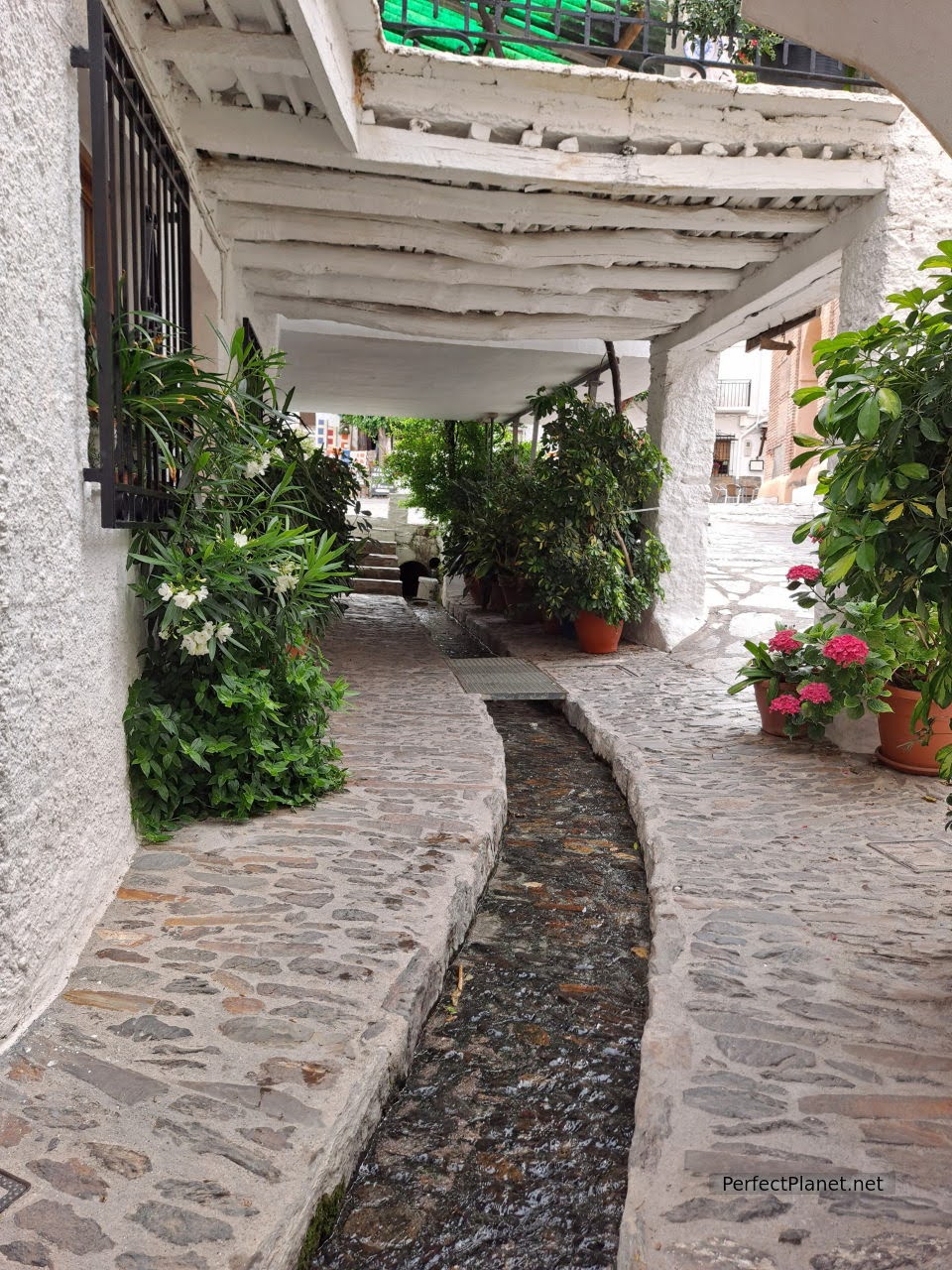
Veronica Street Pampaneira
The use of water through ancient irrigation ditches, an ancient and traditional irrigation system dating back to the Visigothic and Arab times, allows, thanks to the irrigation ditches, every last drop of rainwater and meltwater from the Altas Cumbres to be used, thus preventing the desertification of the area.
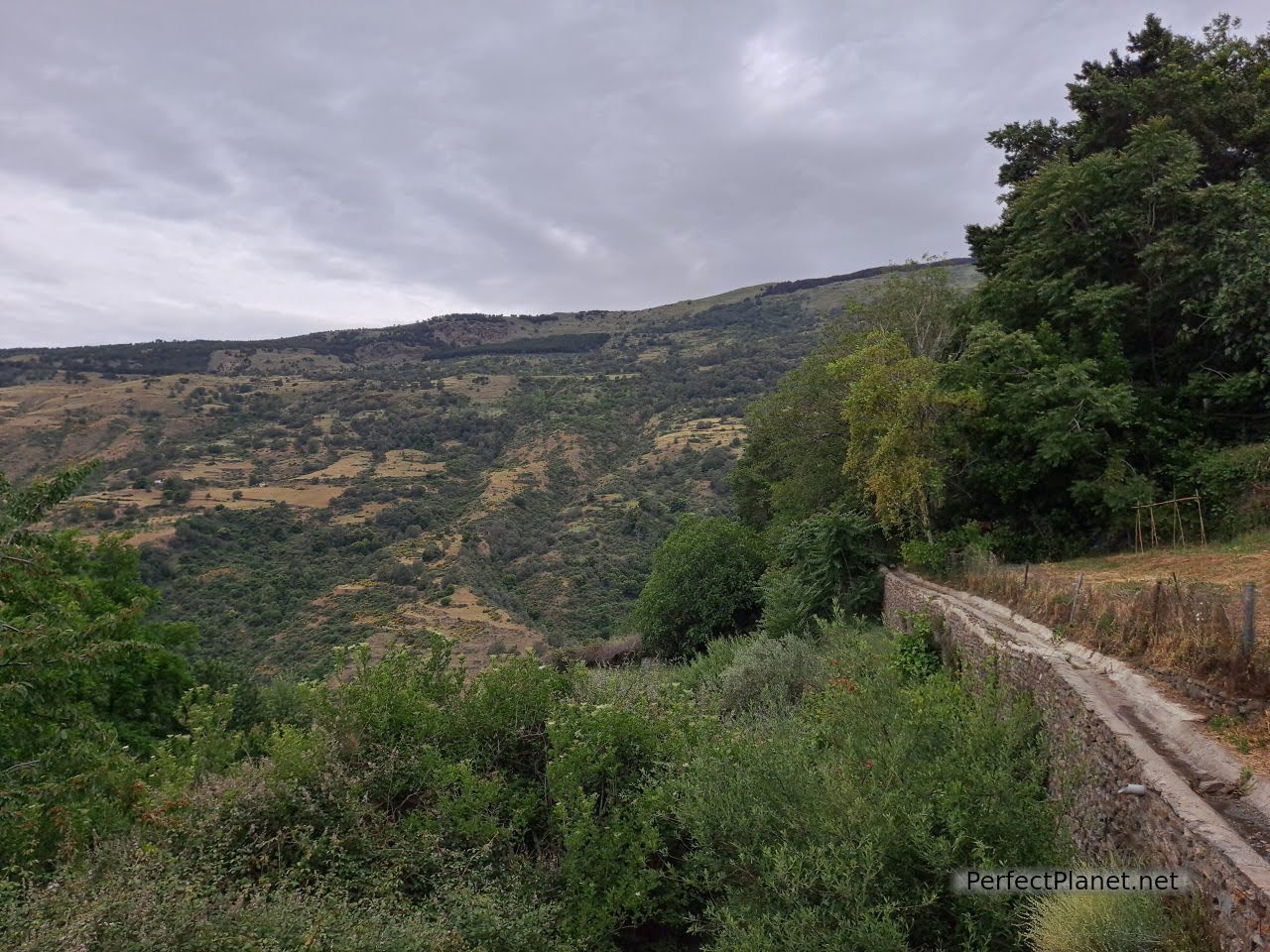
Ditches
Its people, its gastronomy, there is no excuse for not coming to visit it.
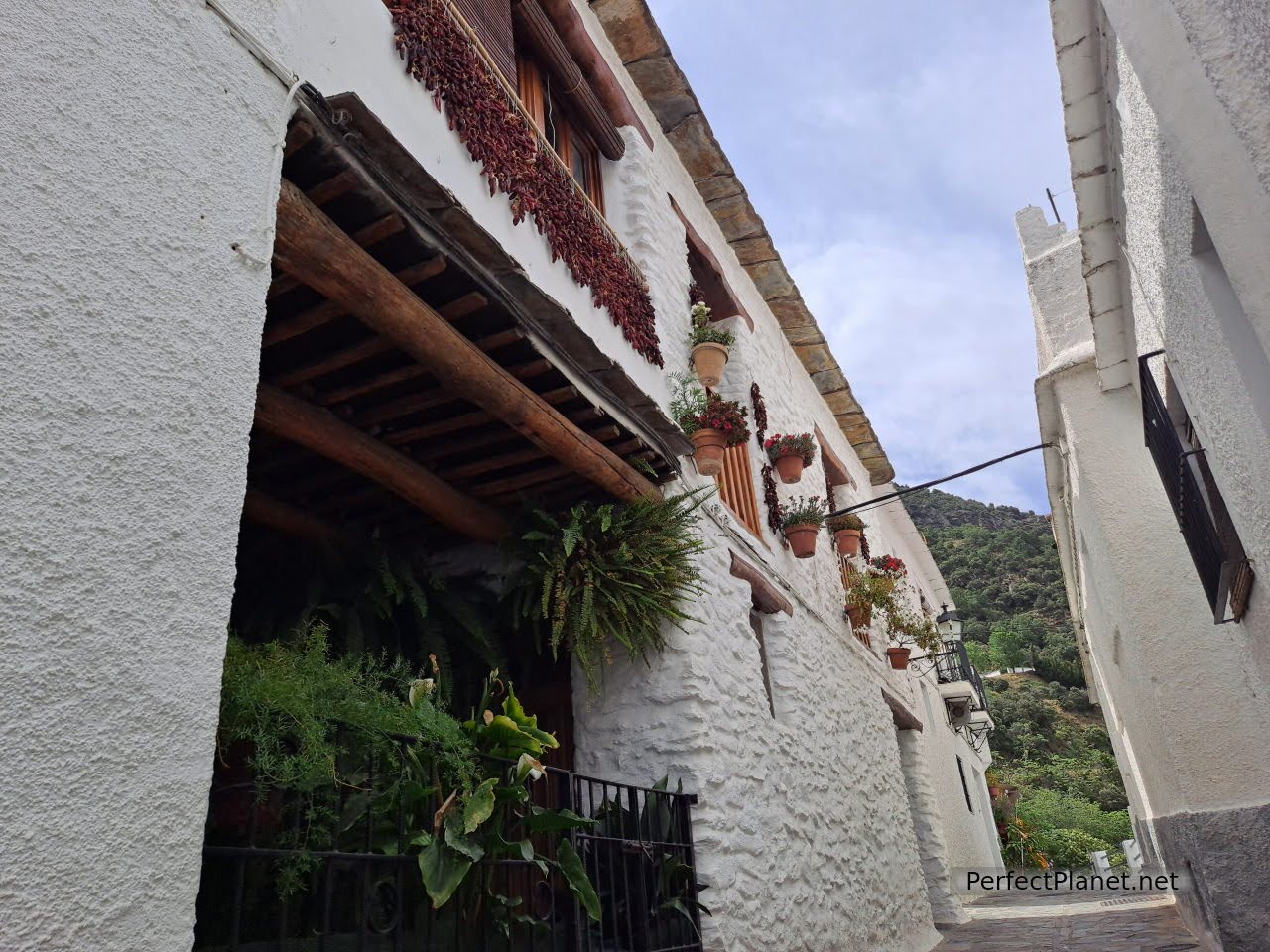
Pampaneira streets
What to see and do in the Alpujarra of Granada, essential:
7. Acequias de regadío y de careo
1. Capileira
Undoubtedly the most beautiful and authentic of all the villages of the Alpujarra of Granada. It has preserved its original architecture intact, whitewashed houses, flat clay roofs, cylindrical chimneys with slate umbrellas, arcades and the tinaos.
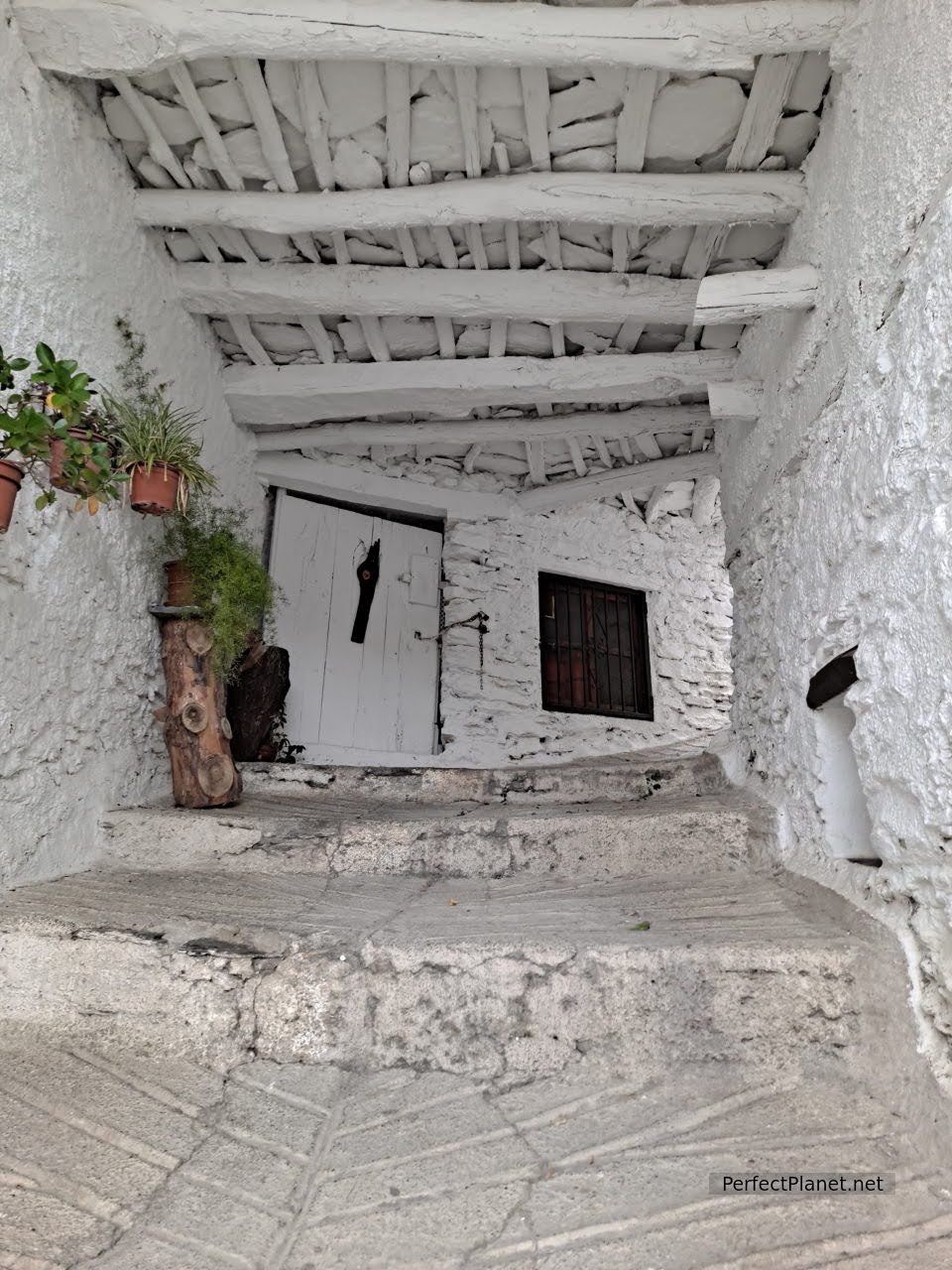
Tinaos
The tinaos are typical architectural solutions of this region that are used to join buildings to form characteristic passages in the area. They are of great historical value.
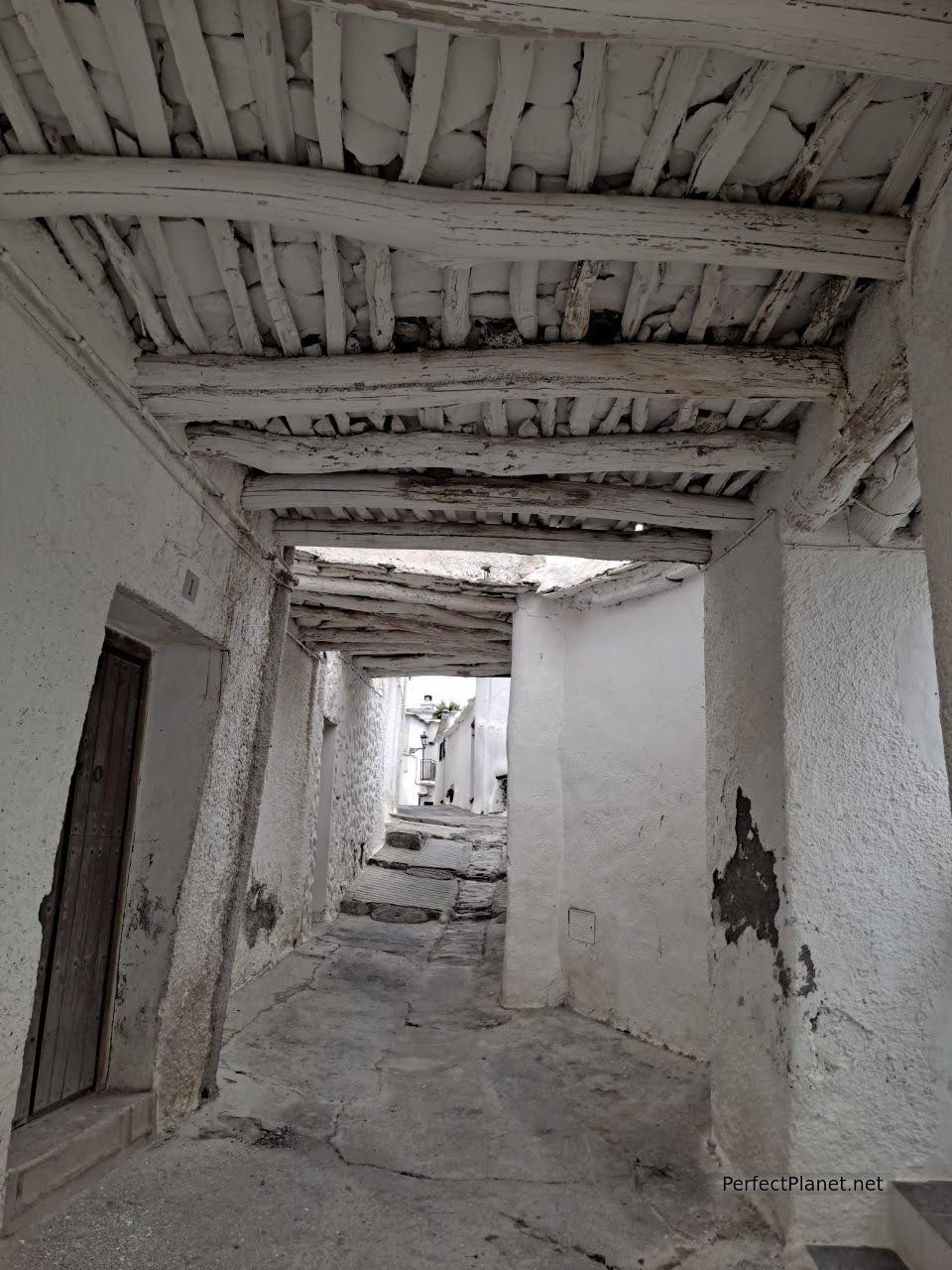
Tinaos
The steep streets still preserve the irrigation ditches that divide them into two pavements. The decoration of the houses with colourful jarapas and beautiful flowers is also remarkable.
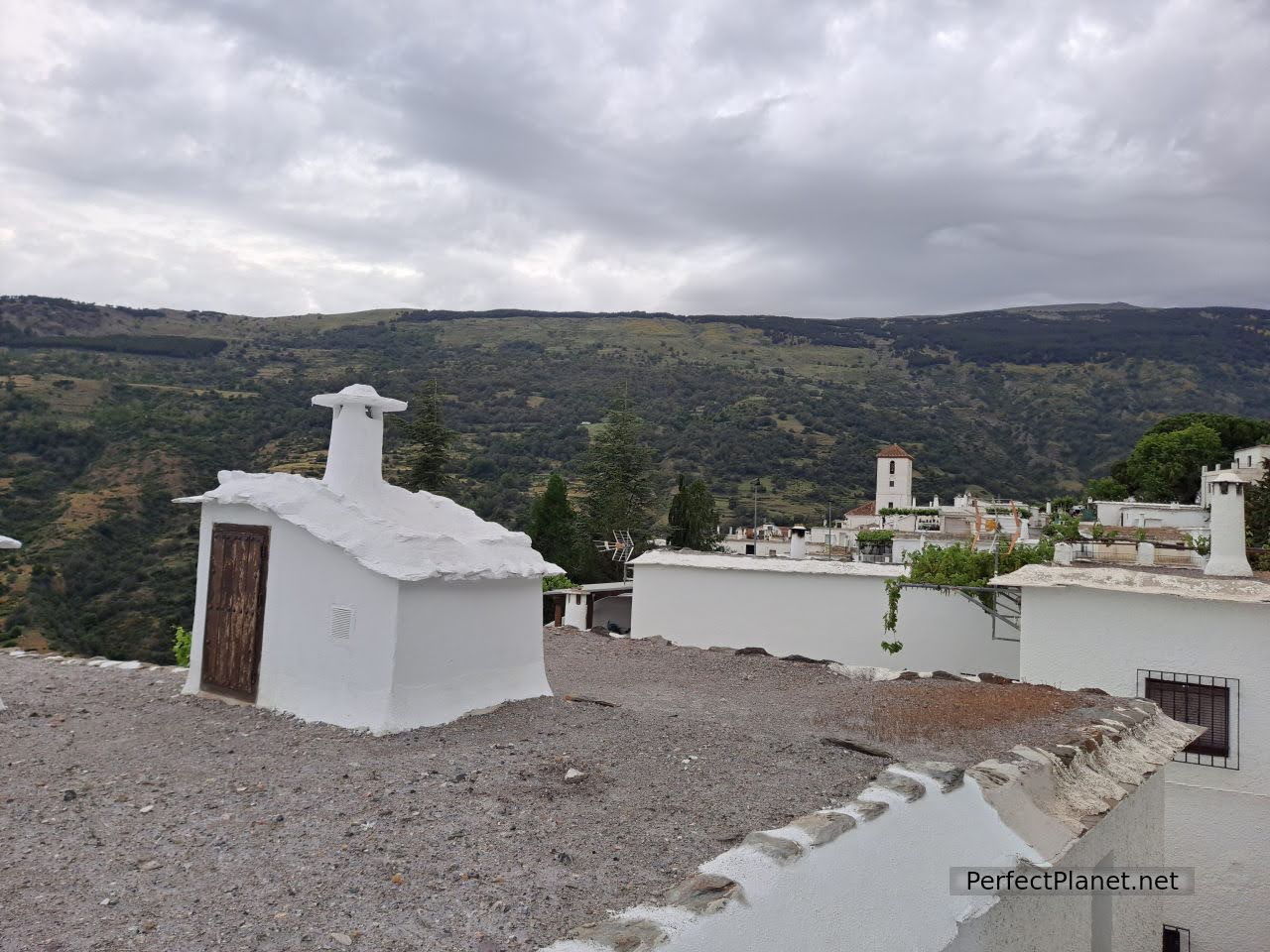
Terraos
It has all services such as supermarkets and bakeries, including a cash dispenser. At the entrance to the village is SIACSUR, the High Peaks Interpretation Service. Capileira is also the starting point to visit the Sierra Nevada National Park and climb some of its most famous peaks such as Mulhacen Peak, Alcazaba or Veleta.
Eight must-see places in Capileira.
1. Whasing places
There are three main ones, the Plaza Vieja and the Oldest. Don't miss any of them, they are very interesting.
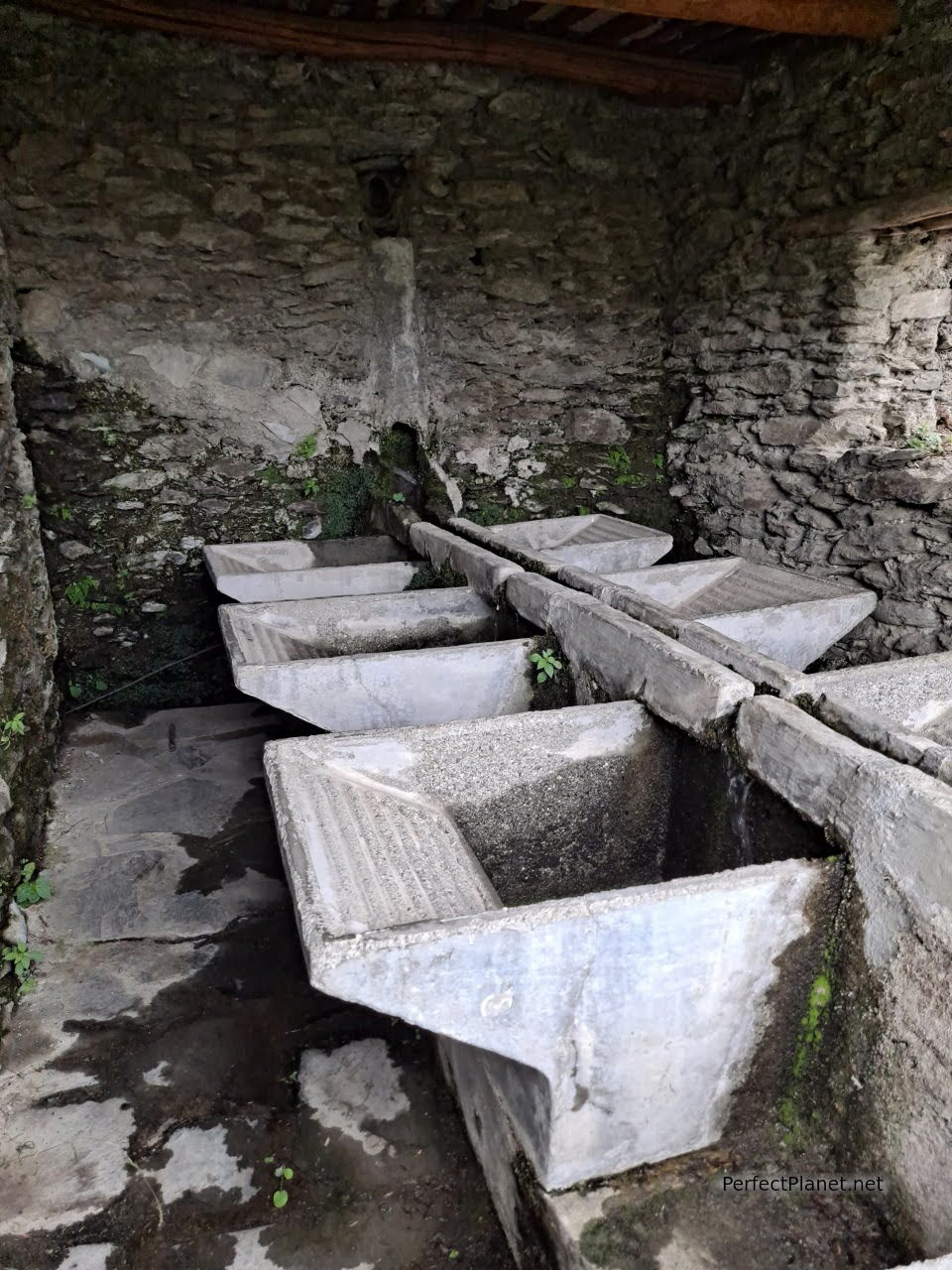
Old washhouse
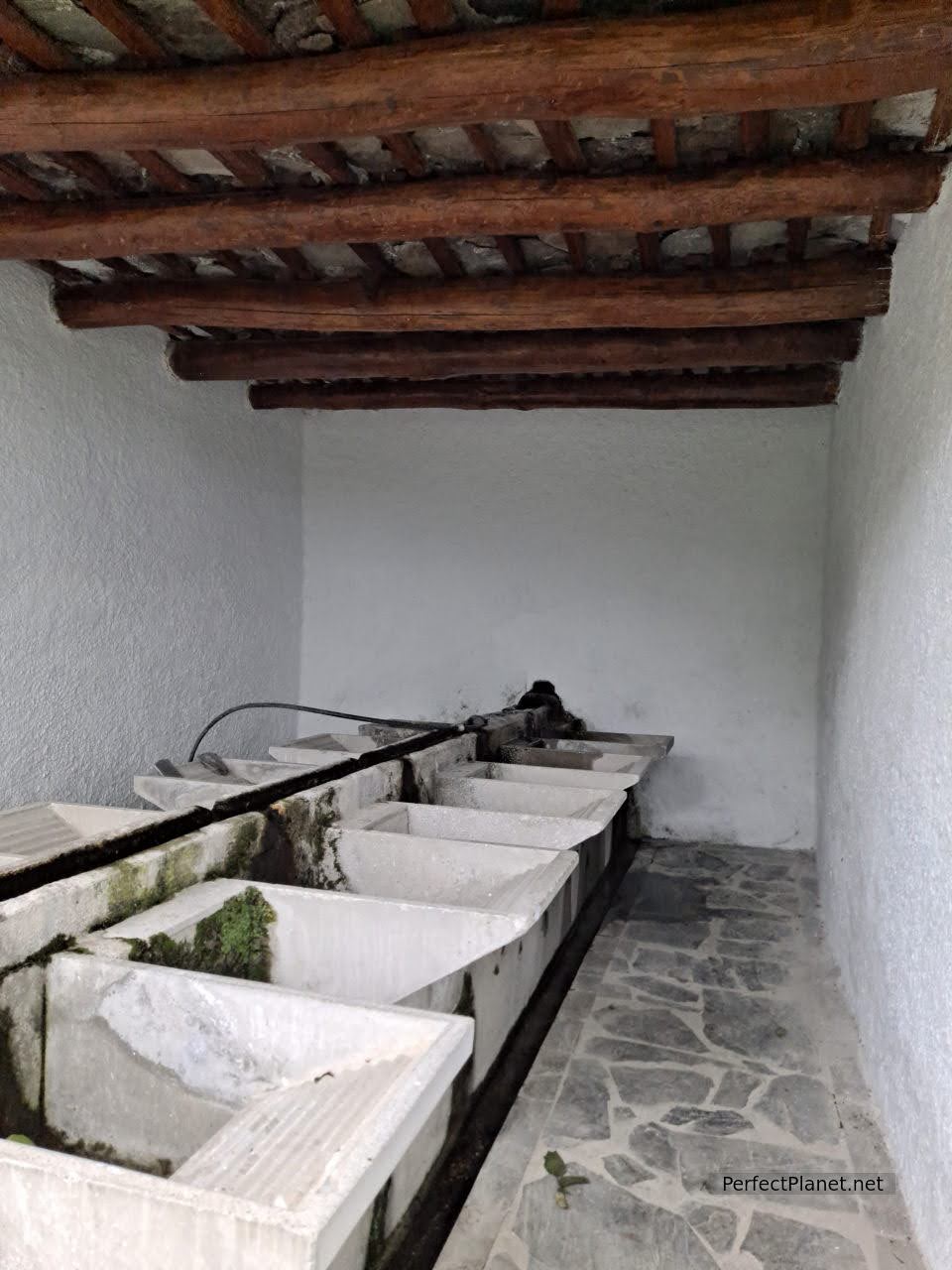
Washhouse Plaza Vieja
2. Santa María la Mayor church
From the 17th century, its bell tower stands out.
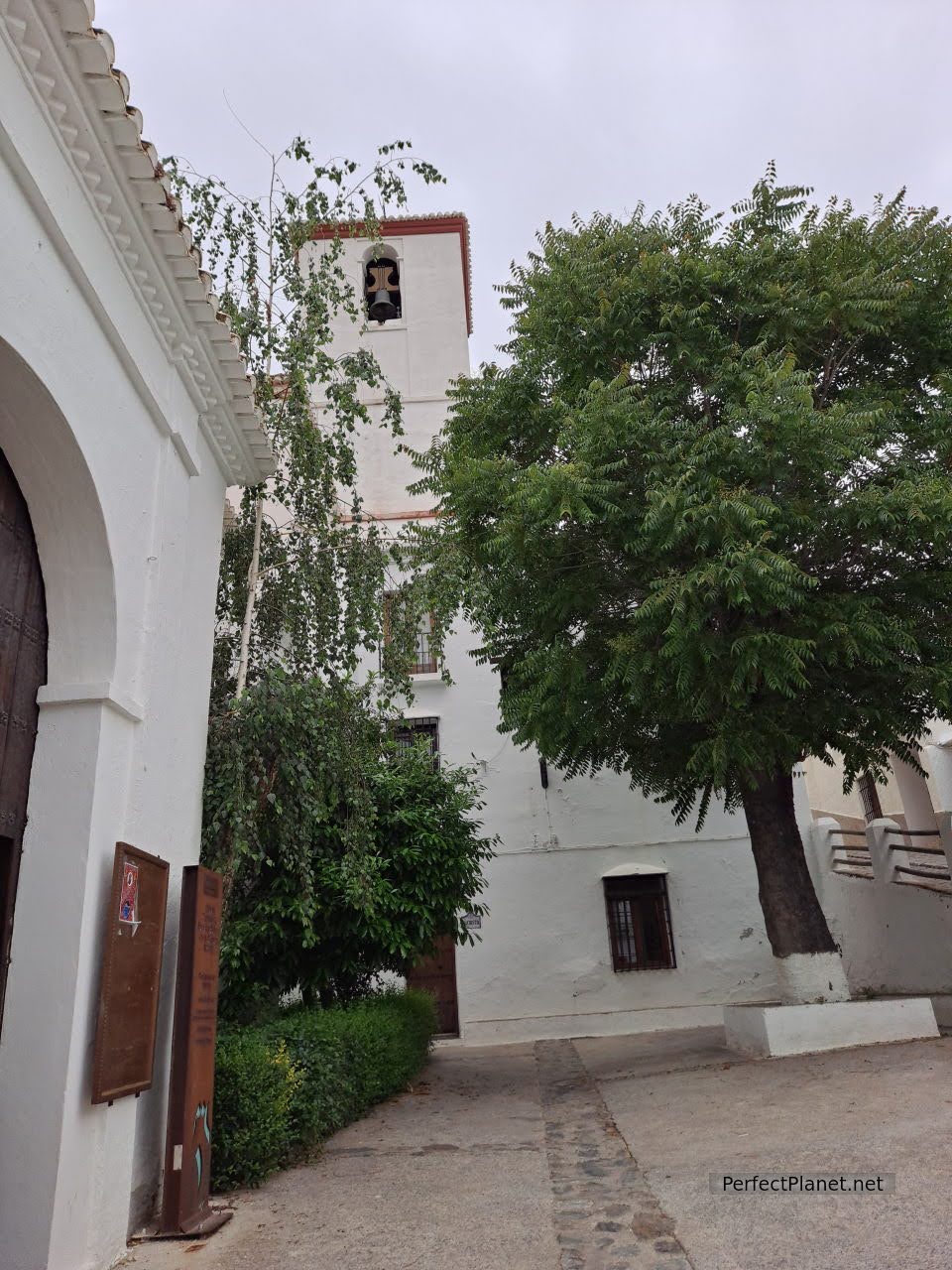
Church
3. Casa Museo Pedro Antonio de Alarcón
In which tools and belongings from the region are exhibited. Most of them are donations from the neighbours.
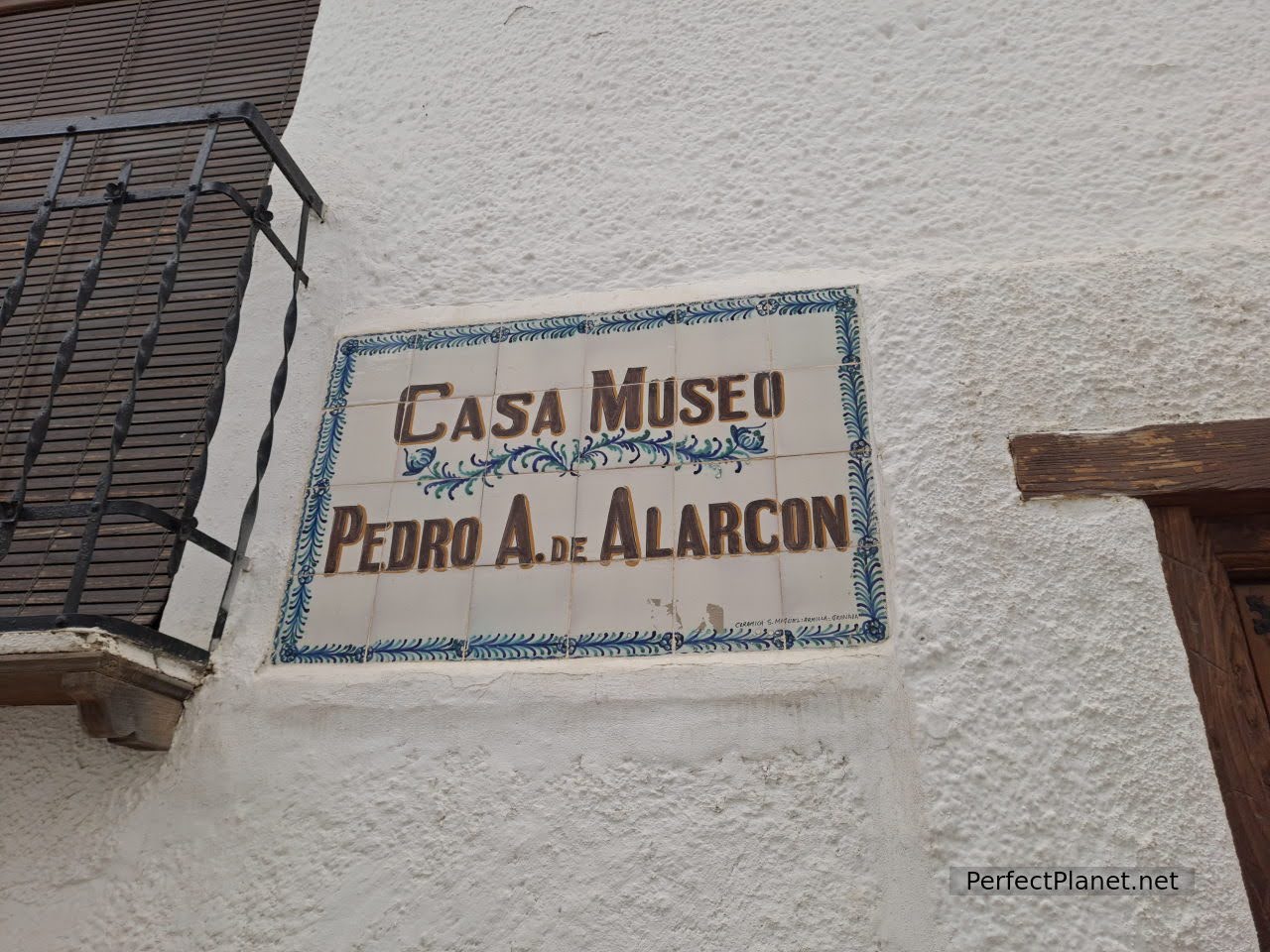
House museum
4. Streets
Cerezo street or Mentidero street are some of the impressive streets that make up Capileira. But any of them is a perfect excuse to get lost in this wonderful town and admire its unique architecture.
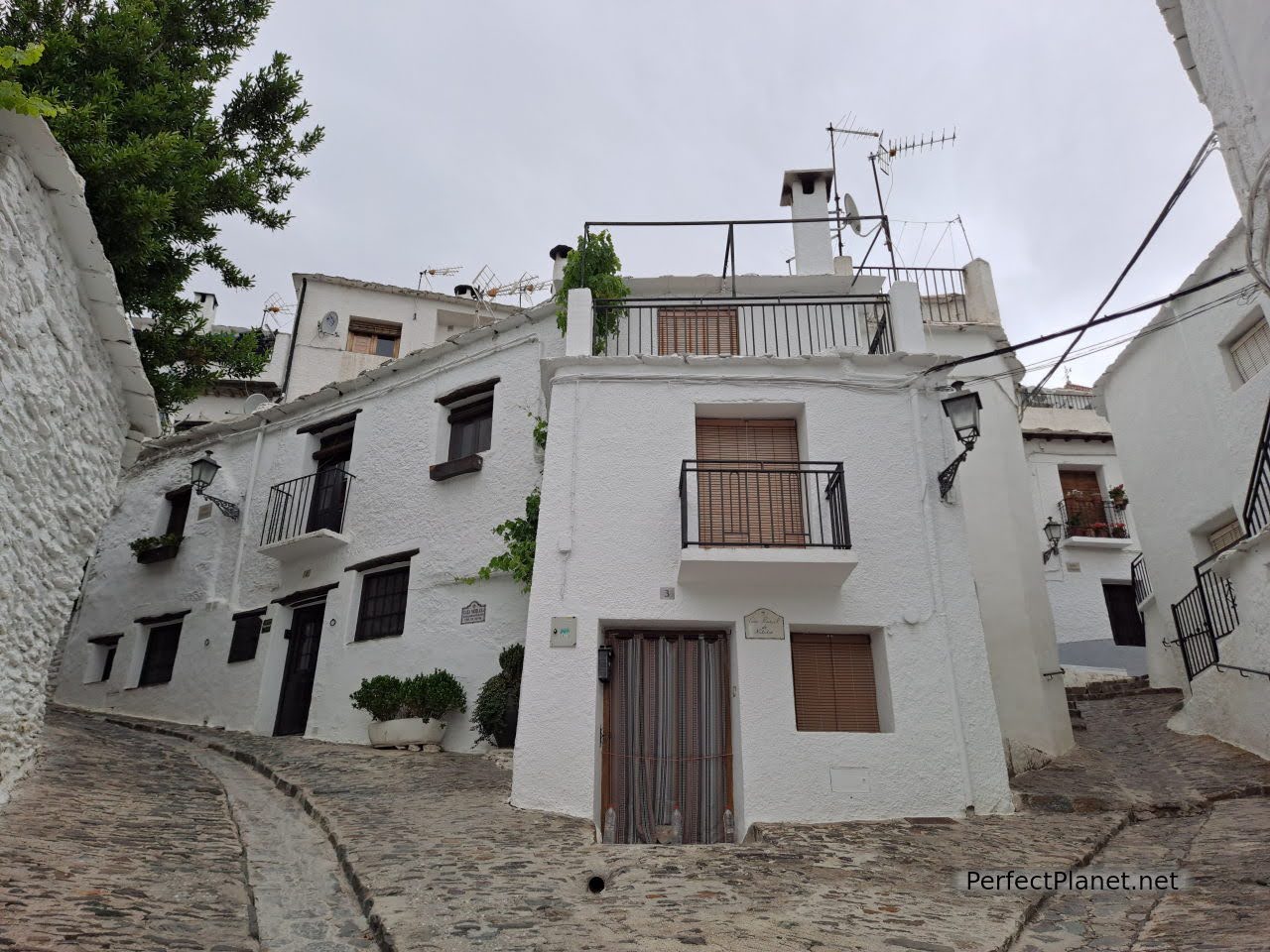
Capileira streets
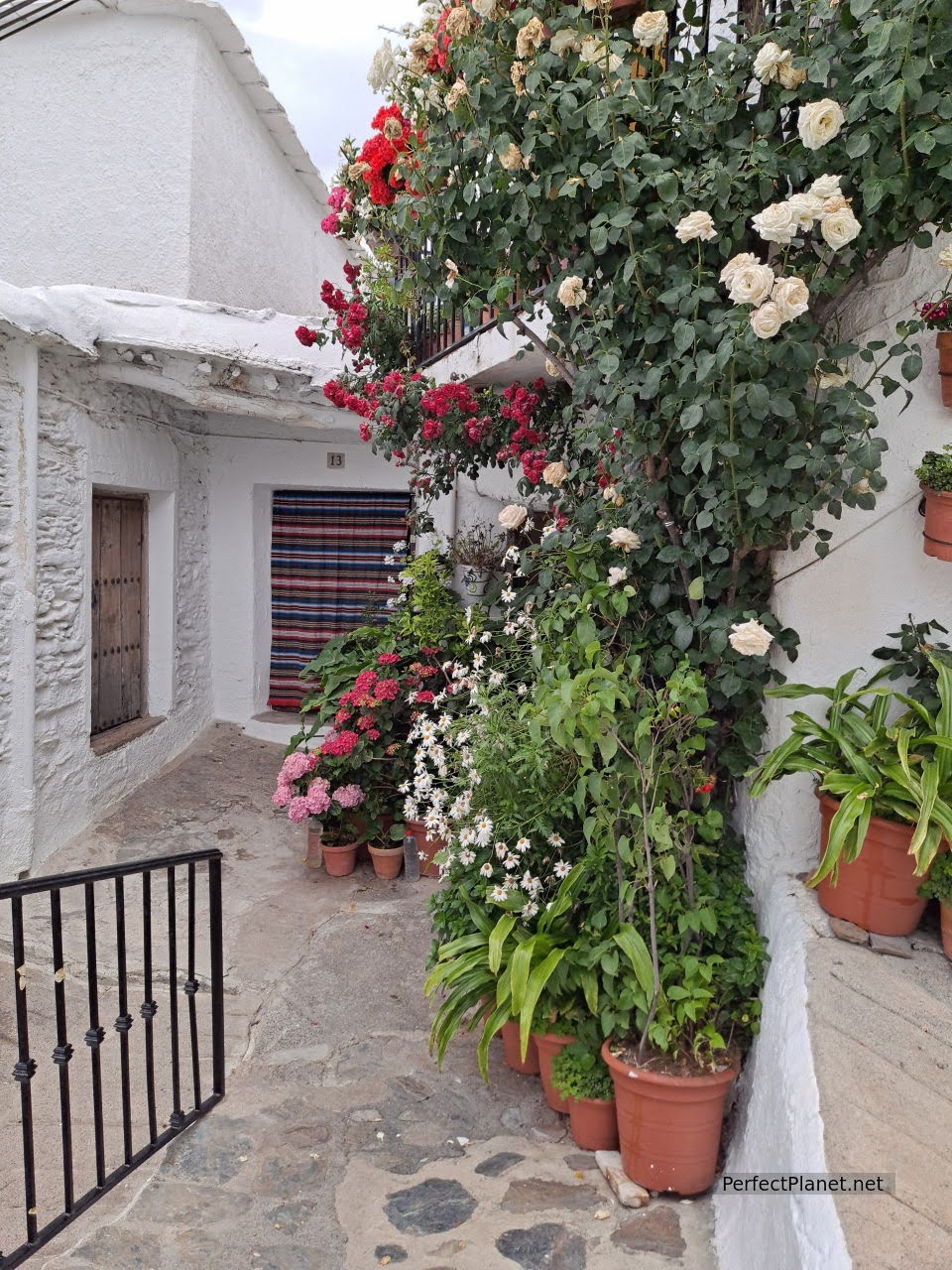
Capileira streets
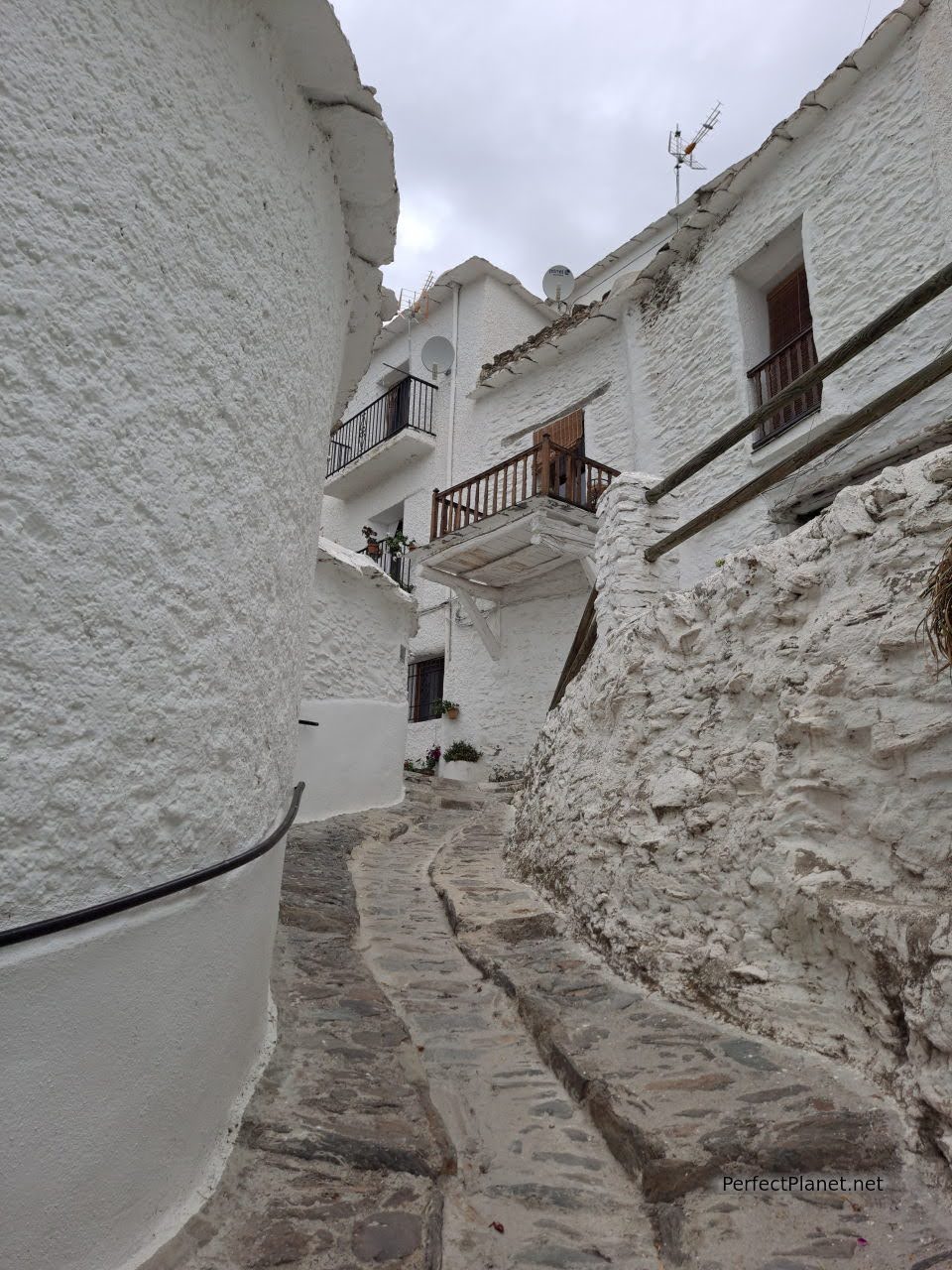
Capileira streets
Curiosities as interesting as the Postigo del Pan. We meet a woman who tells us her story: more than half a century ago, when women were widowed, they used to bake and sell bread and, as they were alone and afraid, they used this small window to deliver the bread when the neighbours called.
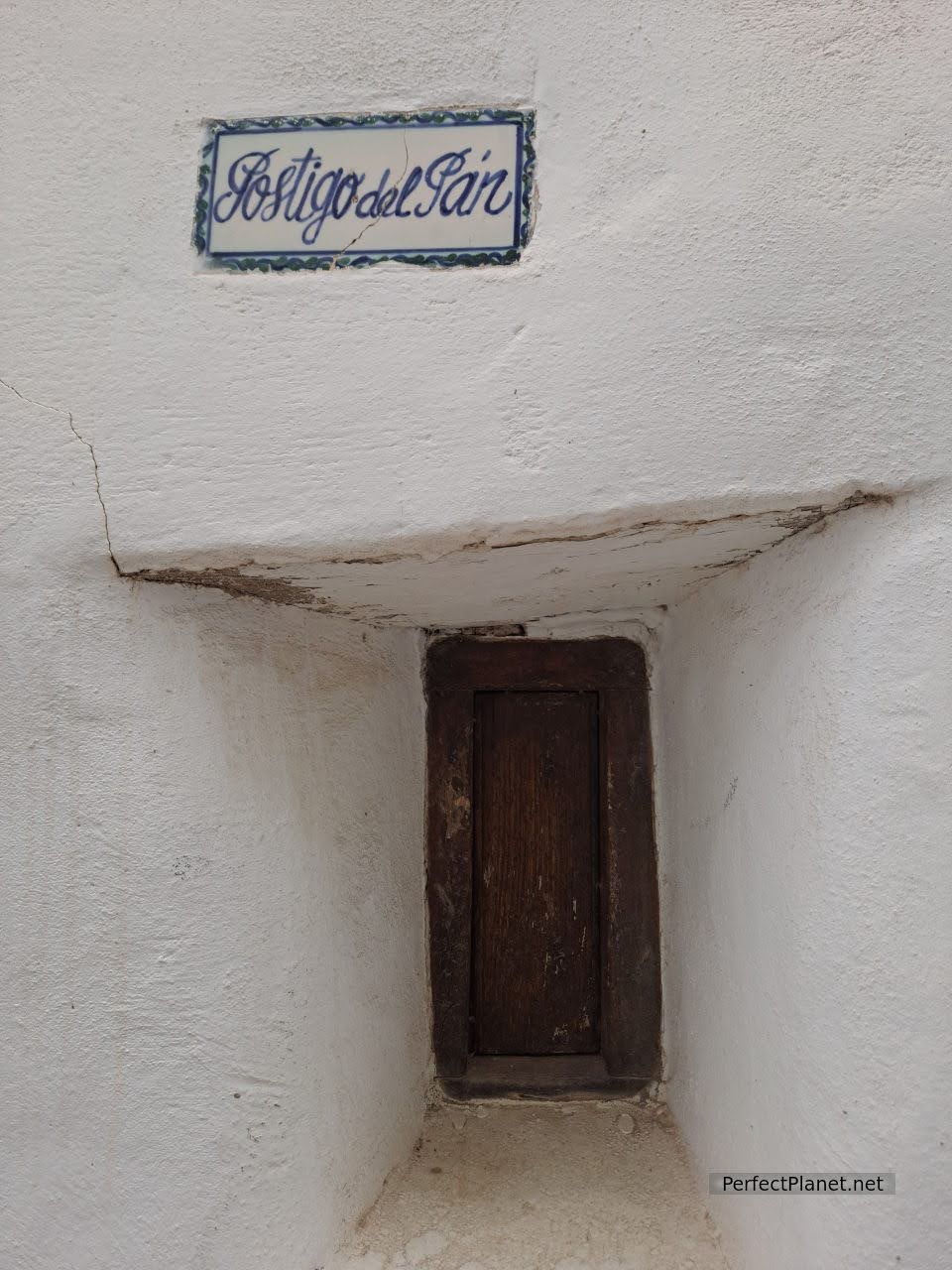
Breas door
Close to the Calvario Square there is a replica of a berraco (pig).
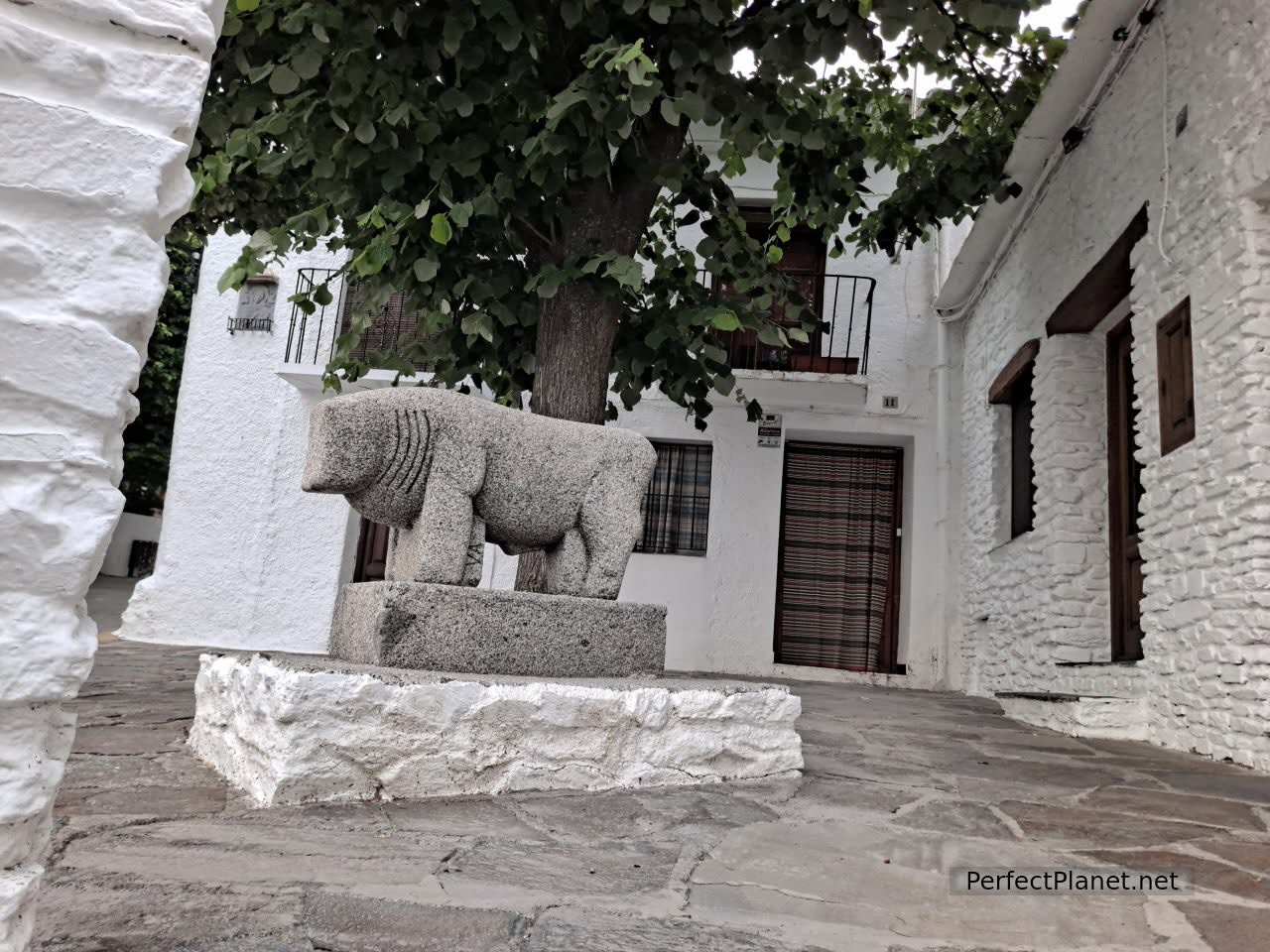
Berraco
5. Fountains
There are a dozen fountains such as Cubo, Calvario and Hondera, highlighting the importance and abundance of water in the area.
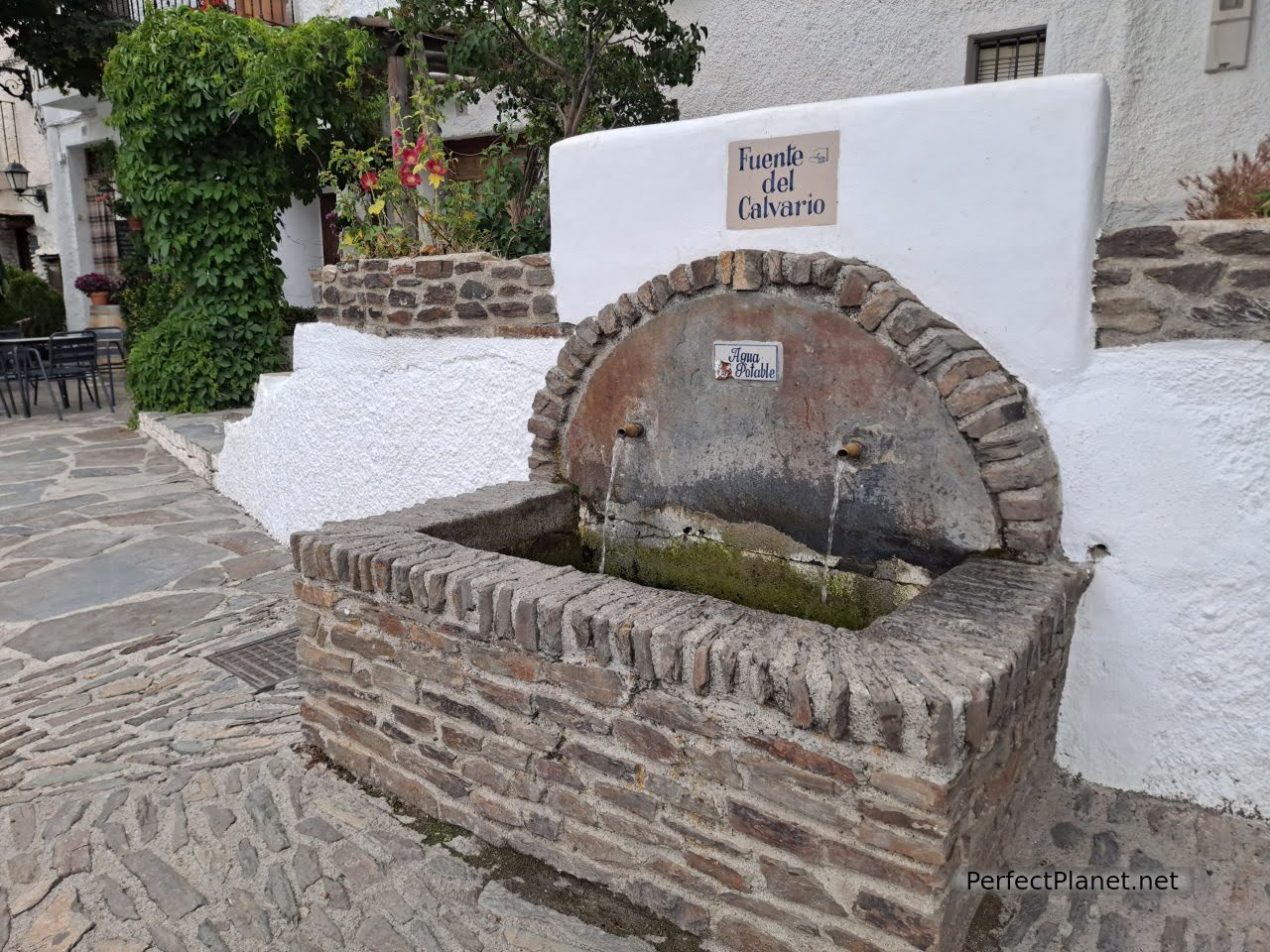
Calvario fountain
We invite you to follow the so-called Water Route, which runs through the twelve historic fountains of Capileira.
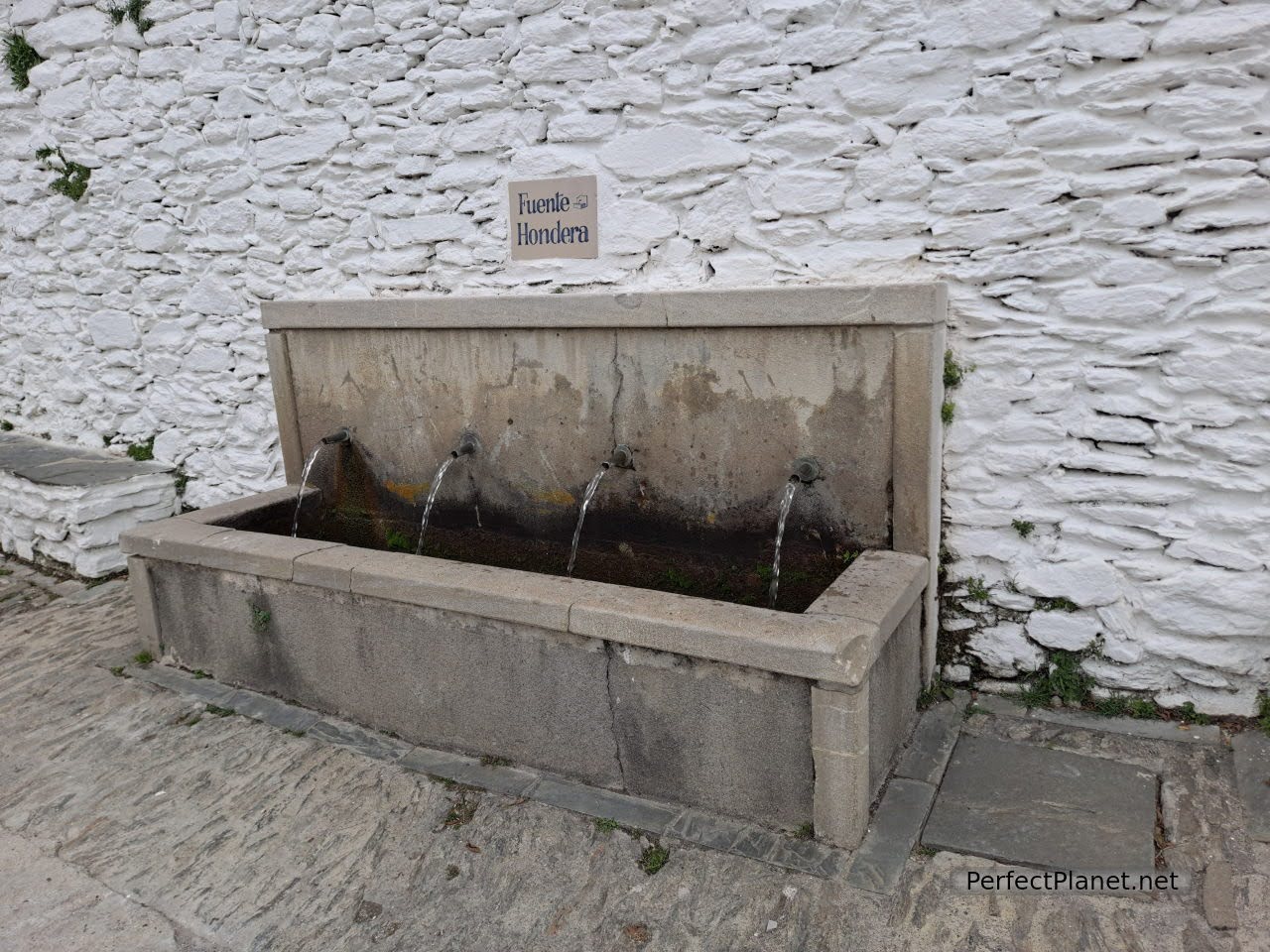
Hondera fountain
6. Viewpoints
There are two of them, the Sierra Nevada viewpoint and the Capileira viewpoint.
The Sierra Nevada viewpoint, located to the north of the village, offers impressive views of the Poqueira Gorge ravine and the Veleta peak.
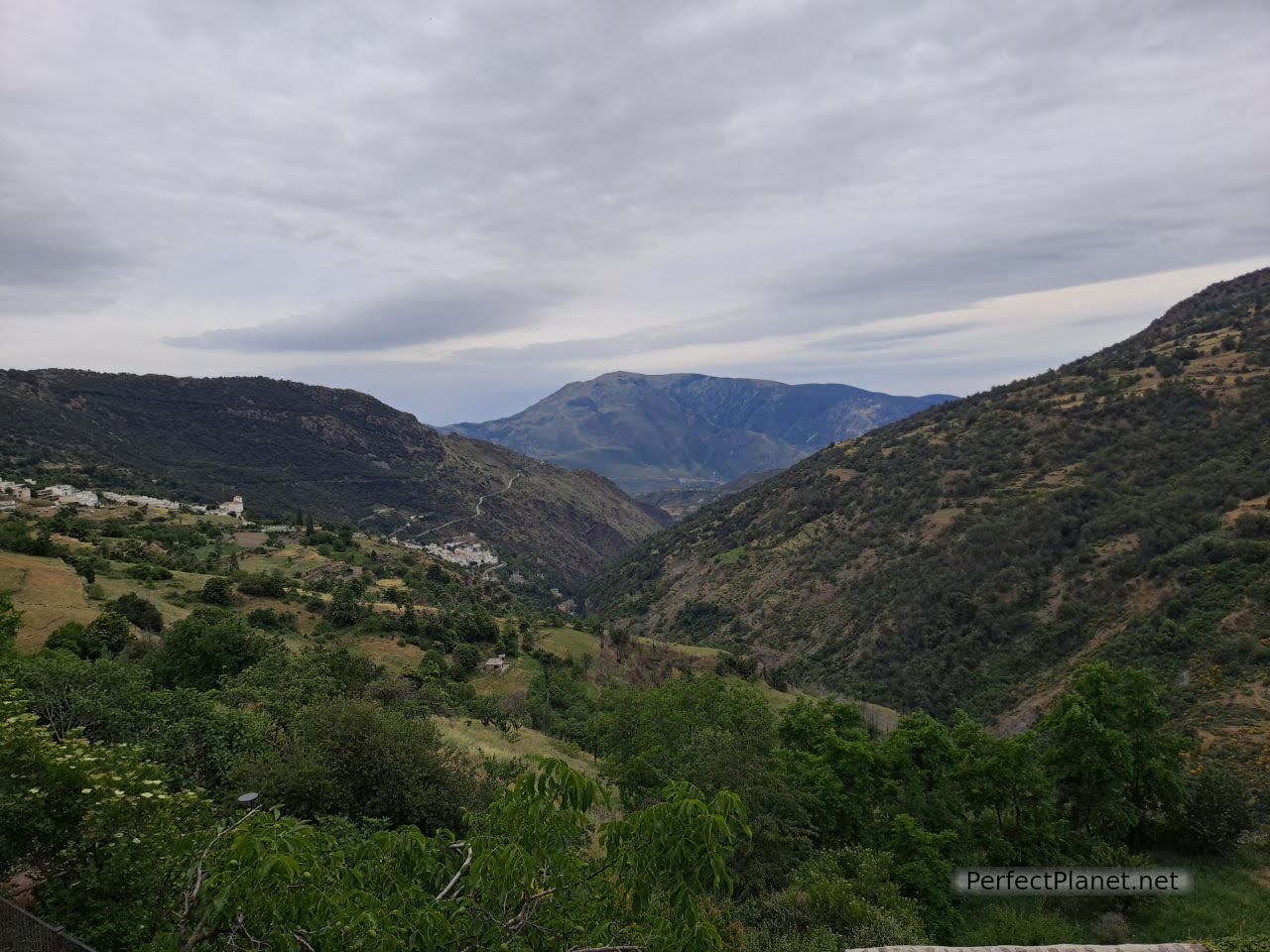
Views from Capileira viewpoint
From the Capileira viewpoint at the entrance to the village we have a spectacular panoramic view of the Alpujarra of Granada, even on clear days you can see the sea.
7. Paths and routes
The Cebadilla, the Poqueira Ditches or the one that takes you to Bubión are easy routes that start from Capileira.
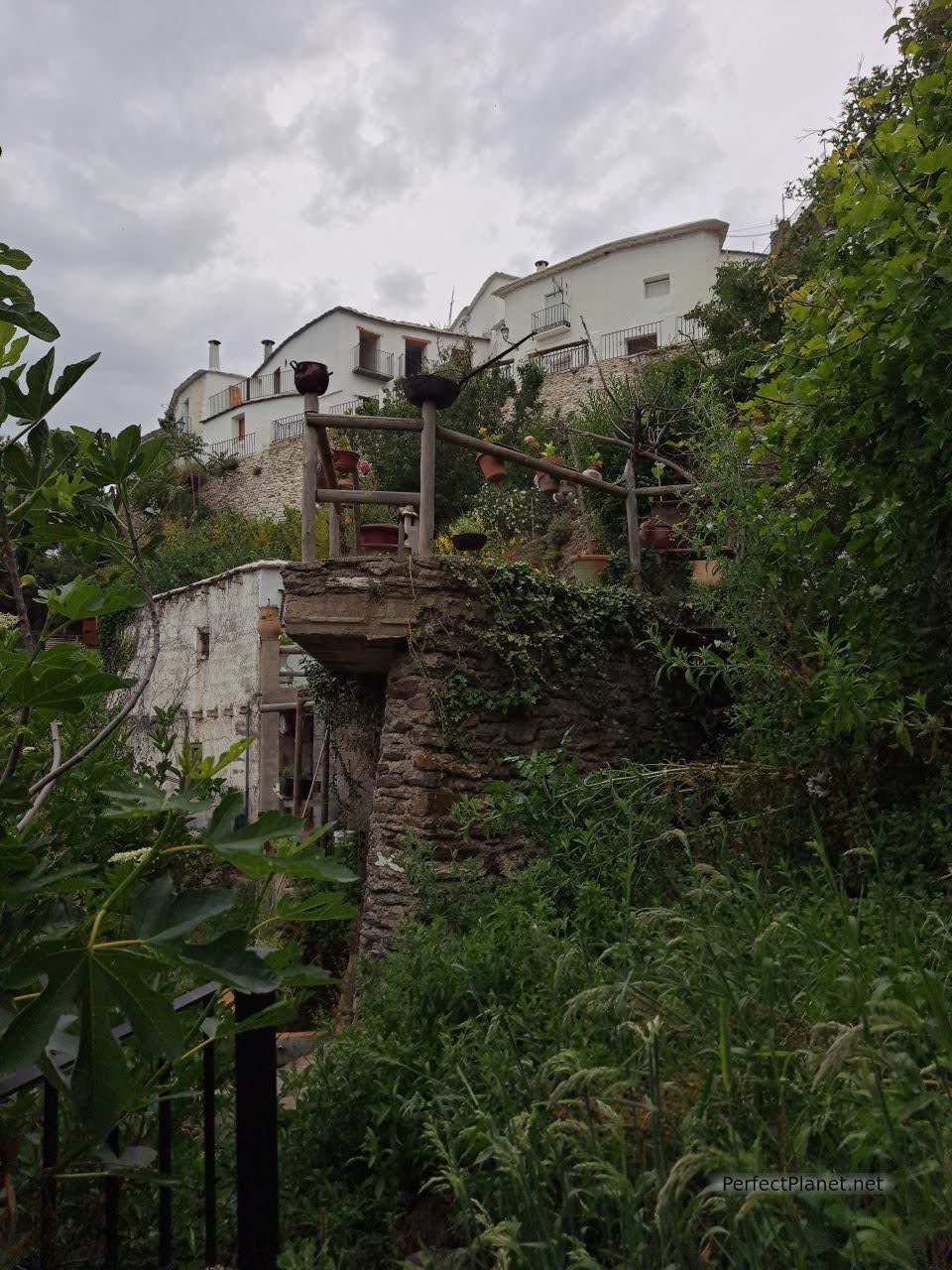
Capileira
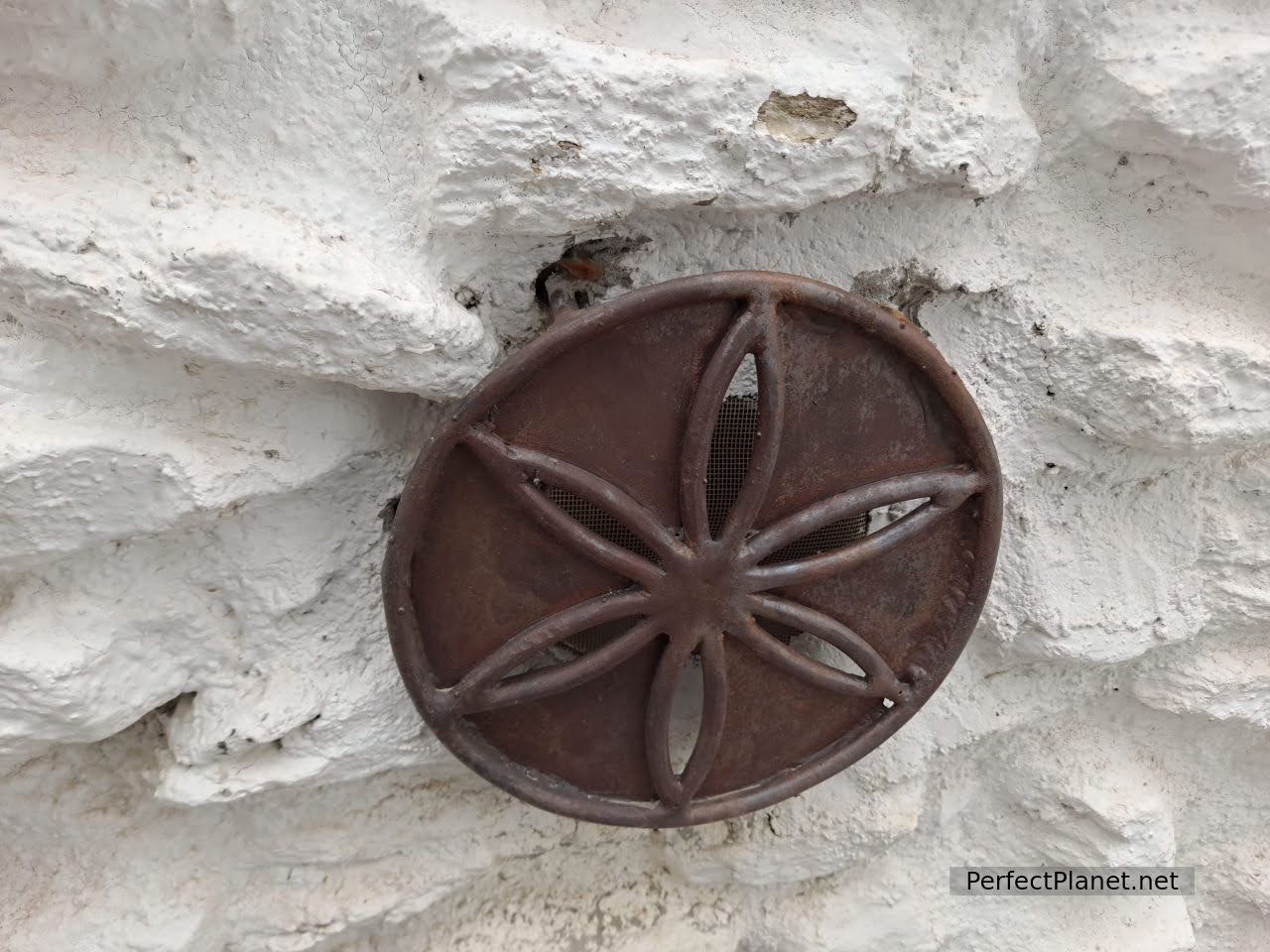
Capileira
8. Tapeo (snacking)
In Capileira there are several places where you can enjoy the excellent tapas of the Alpujarra, and the sausages and cheeses are very typical. We recommend the following:
Trastienda de la Monja, Bodega el Atroje, Tinao restaurant or the bodega shop La Alacena where we had a spectacular local wine, at 3€/glass, inside is beautiful, it's like an old house.
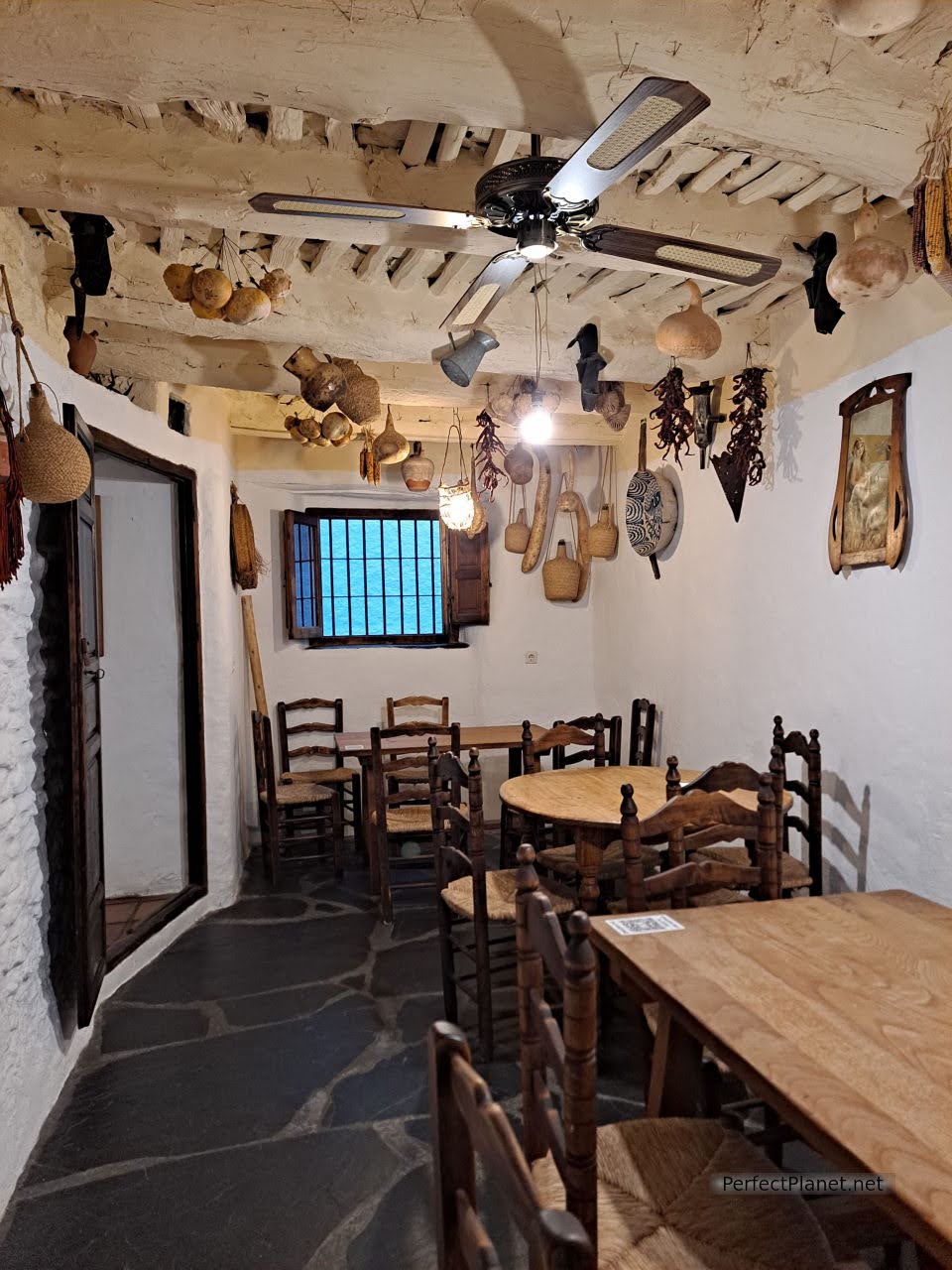
Alacena interior
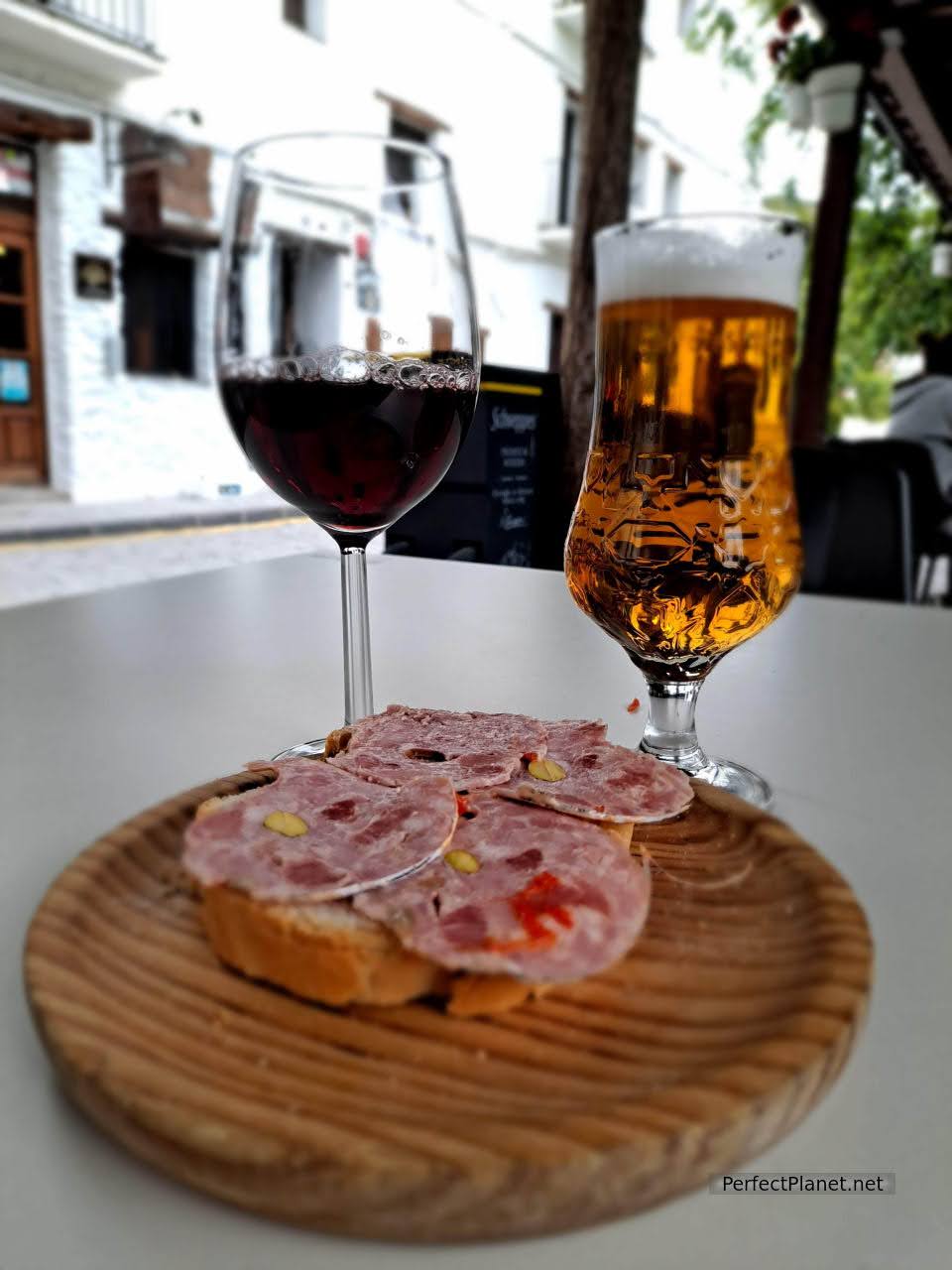
Tapeo
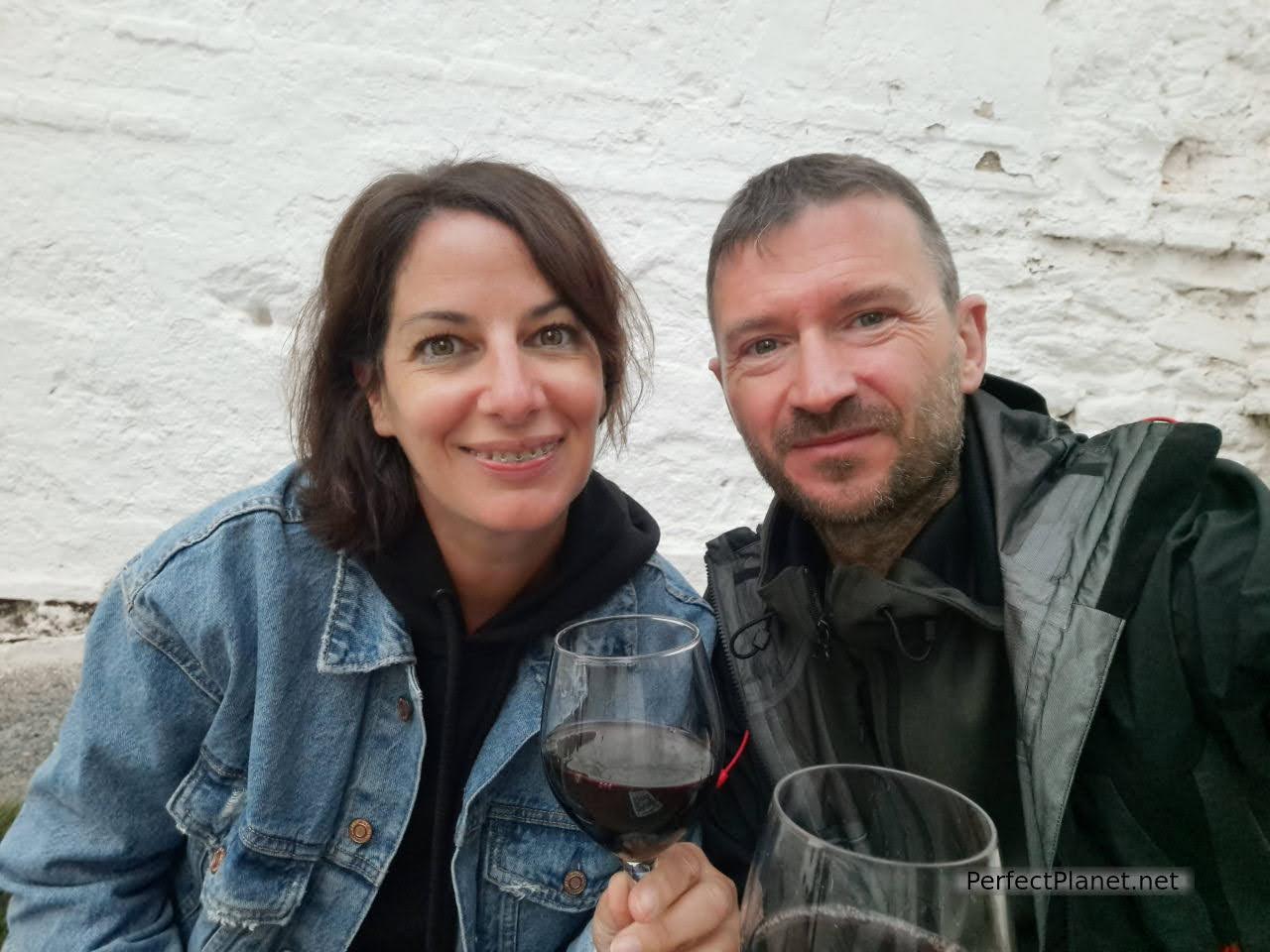
Tapeando
Accommodation. Rural guesthouse Atalaya. Double room with bathroom and views of the mountains 38€/night for two people. Cleanliness and excellent treatment.
Parking. There are several public car parks in Capileira although in summer it is better to go up early as they fill up. At the end of the village towards Hoya de la Mora there is parking for vans.
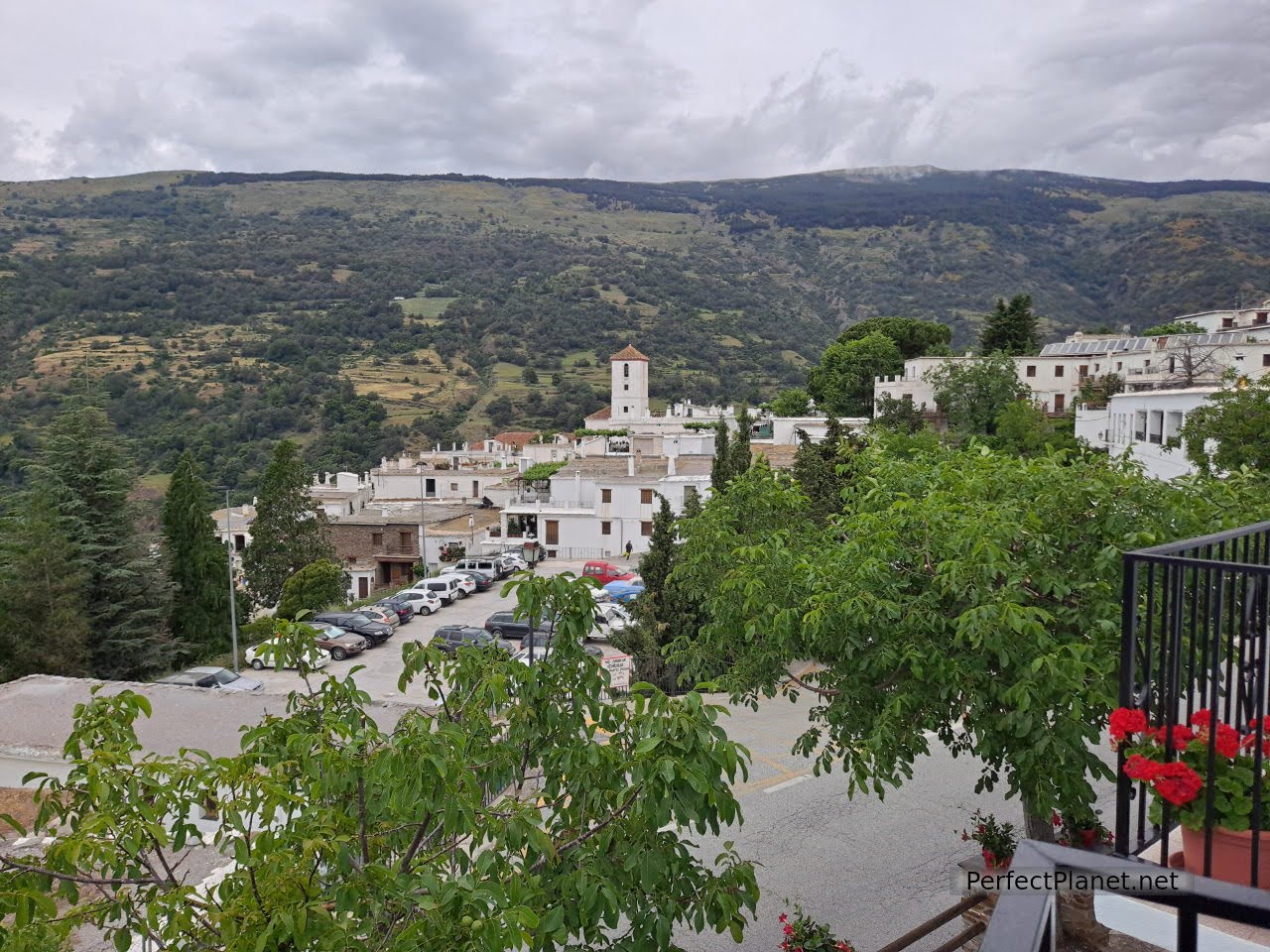
Views from the Guesthouse
Breakfast. Moraima Restaurant. Impressive breakfasts, the best place in Capileira and the whole region for breakfast at a very good price. We ate some toast with tomato and oil (actually half a bar for 1.60€/each) brutal. Totally recommendable. The menu of the day is very tasty at 10€/pax. Closed on Wednesdays. (it is also a hostel).
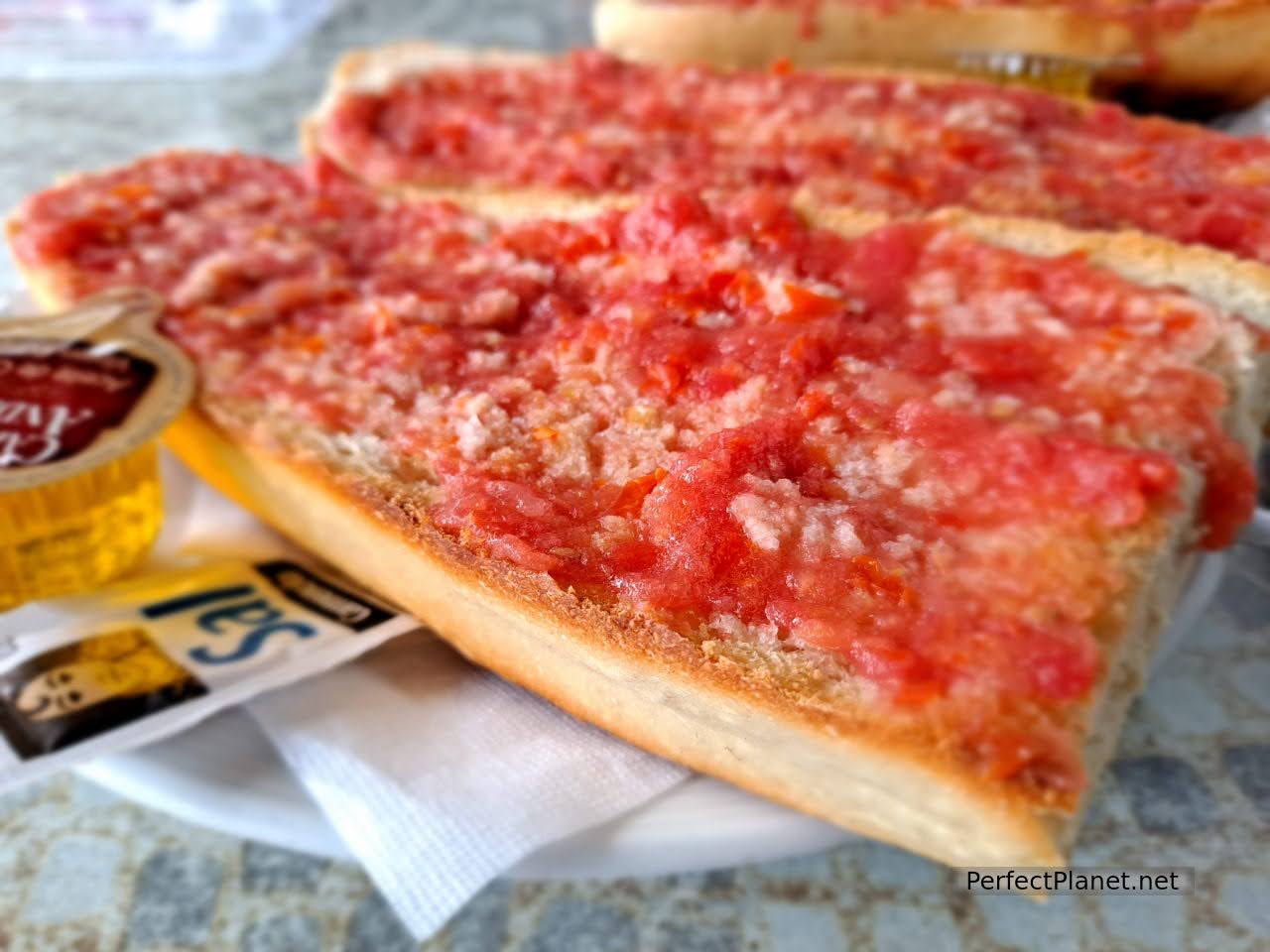
Breakfast
Lunch and dinner. Restaurant El Corral del Castaño. Excellent Alpujarran dishes. The dishes (as in the whole area) are quite large and two people can eat, so don't ask for too much. Delicious.
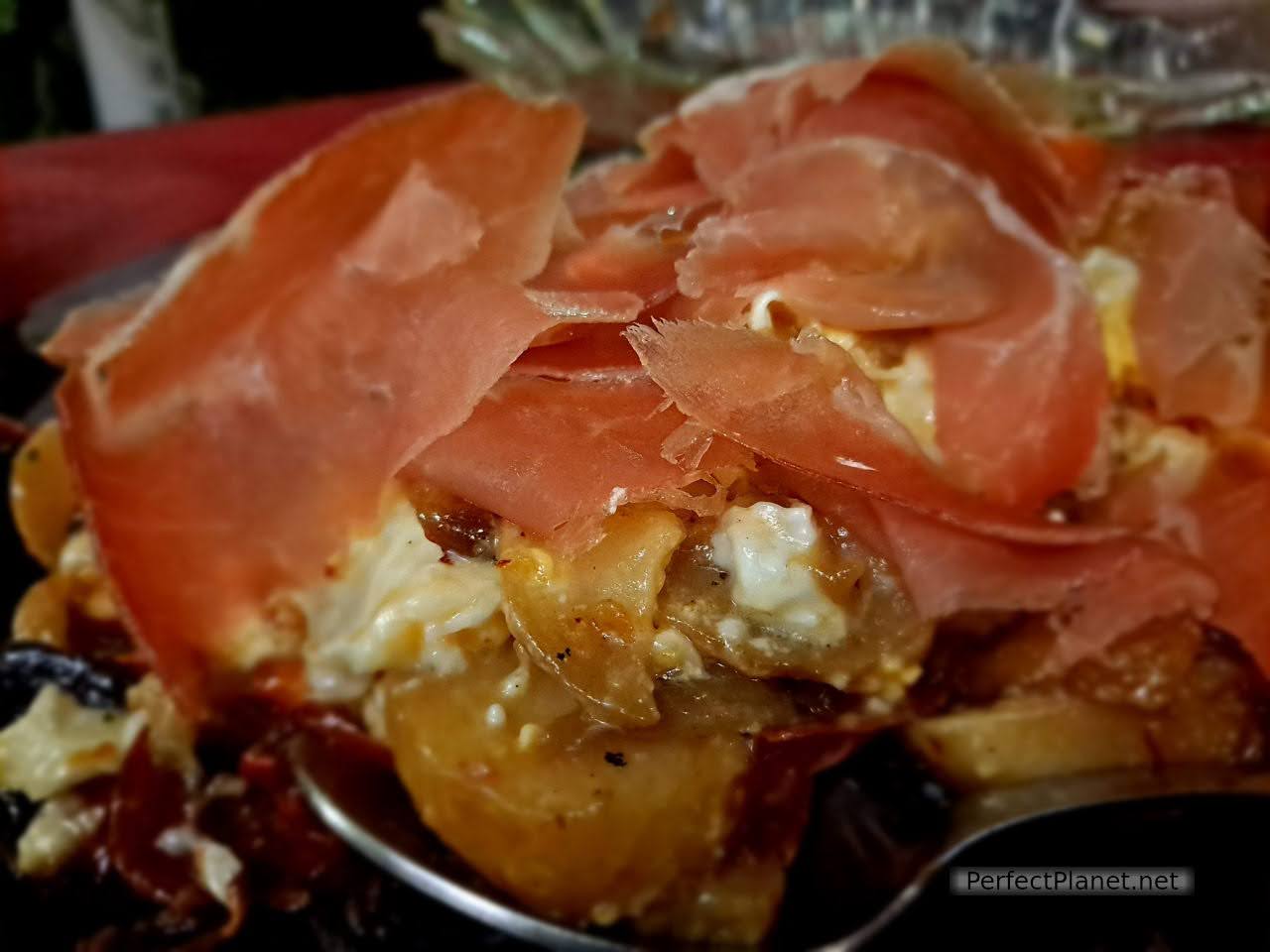
Alpujarreño dish
Don't miss in this area the typical Alpujarreño dish of potatos a lo pobre, fried eggs, black pudding and longaniza sausage.
If you want raciones or sandwiches in front of the Moraima is the bar Javi Alpujarra. Beautiful views and excellent food at a good price.
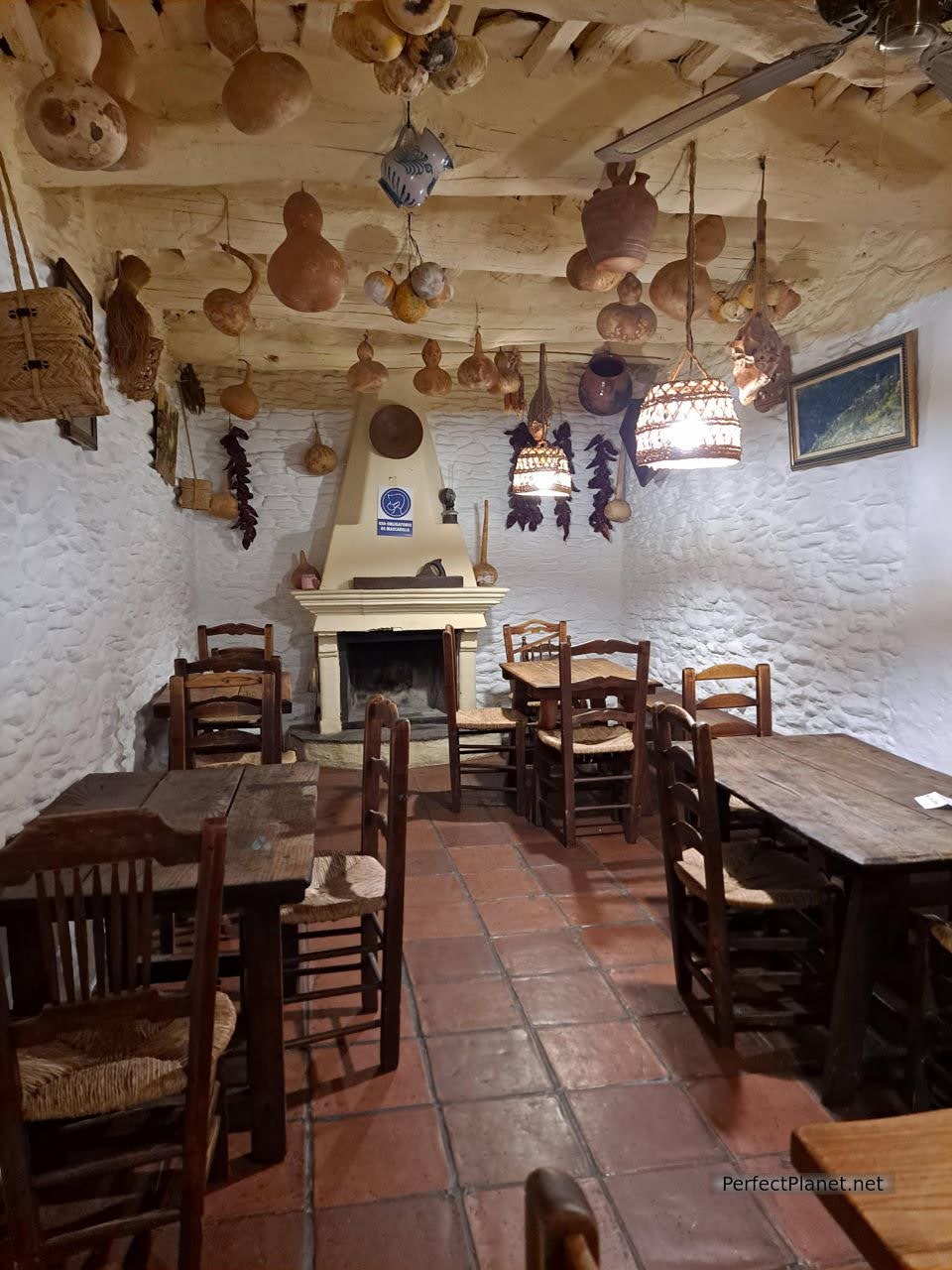
Alacena Interior
2. Bubión
This small town in the Alpujarras is also a must-see. Although it is much smaller than its neighbours, it retains its traditional architecture and is less touristy. It has a large car park and several areas near the road for parking.
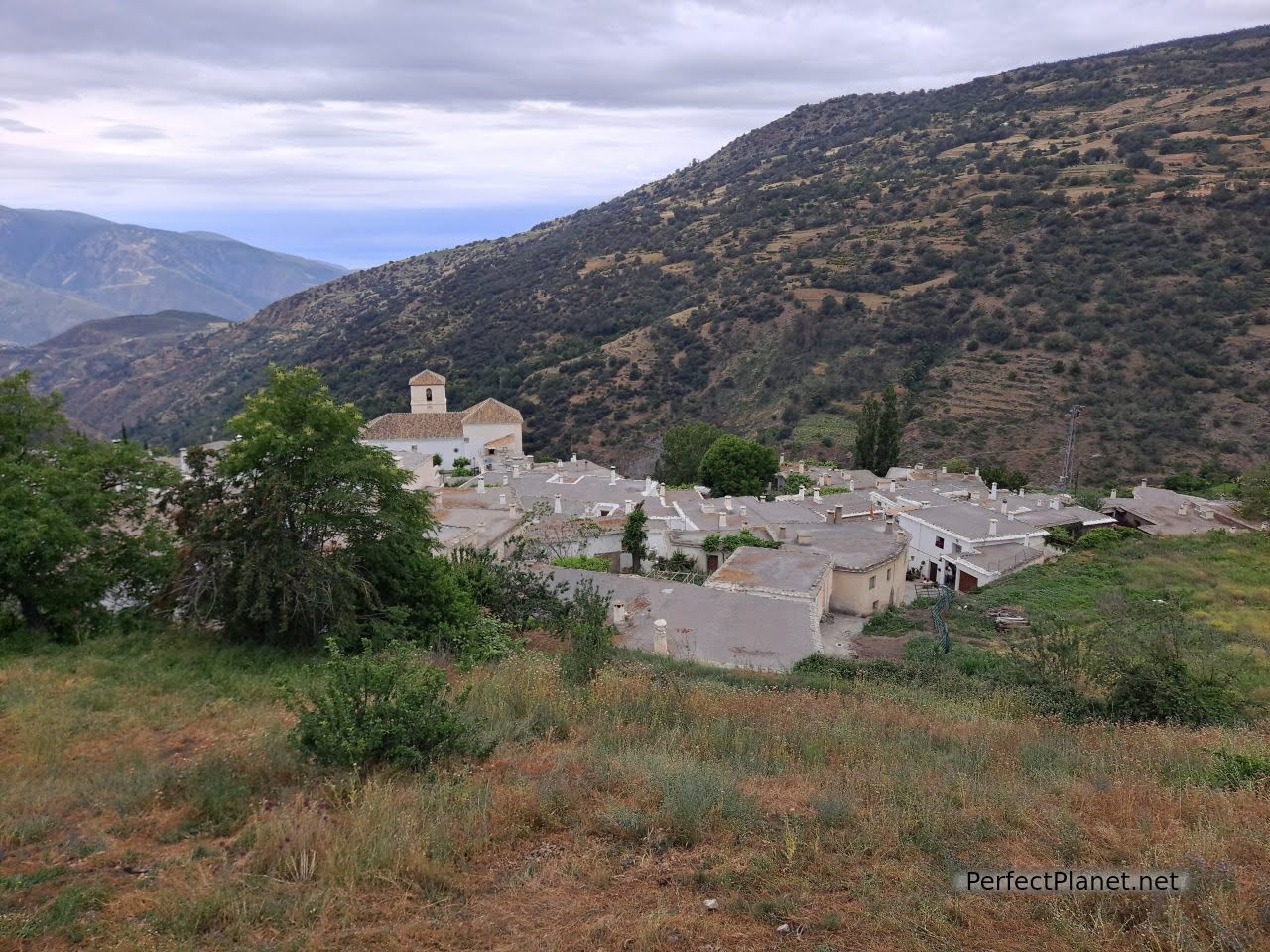
Bubión
Essential:
1. Alpujarreña House Musum
Here you can soak up the history of the traditional houses of the Alpujarra.
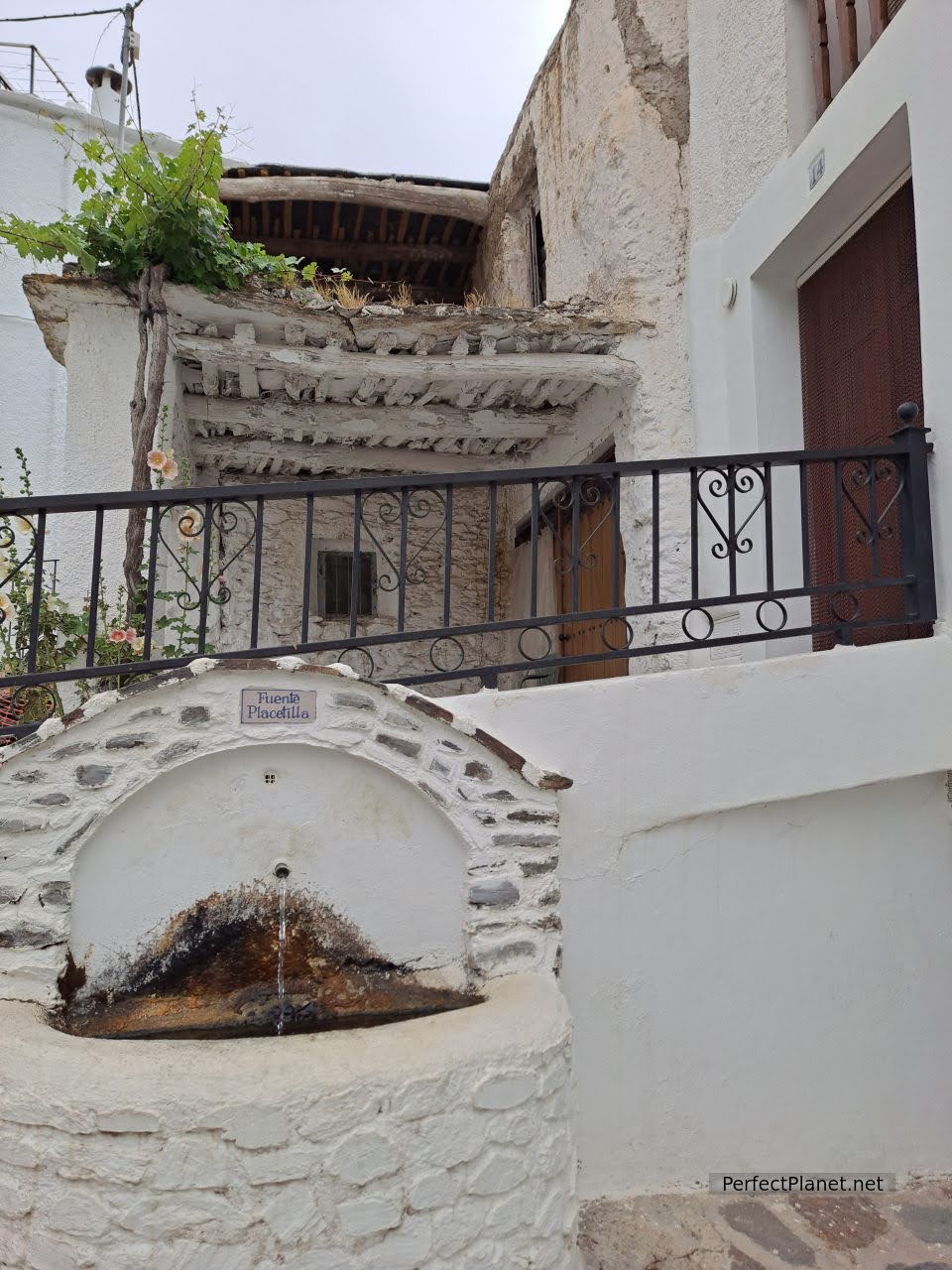
Placetilla Fountain
2. Vírgen del Rosario church in the Council Square.
Its façade bears the legend of an impossible love between the Moorish captive in the Poqueira Tower and a Christian during the Reconquest.
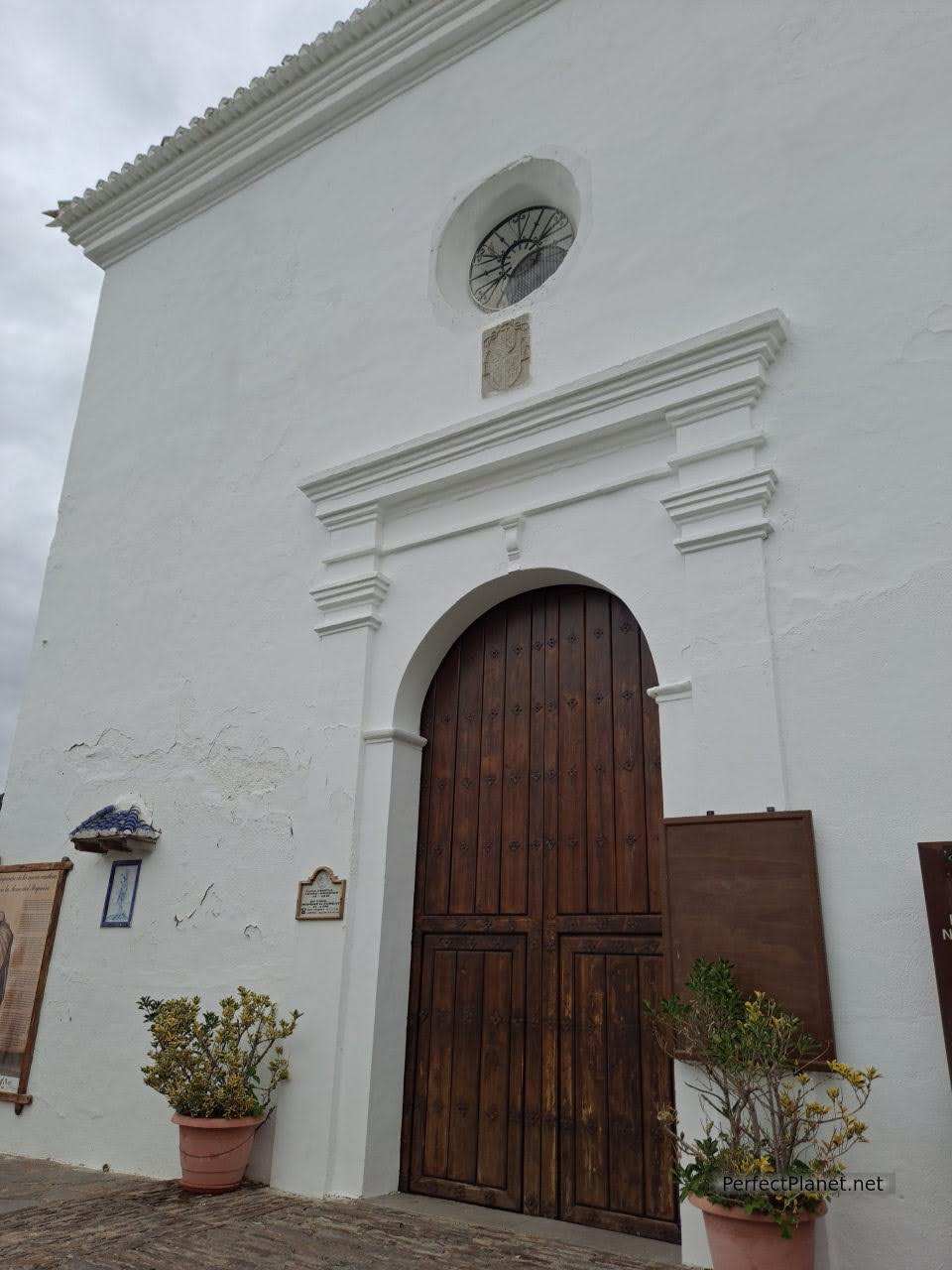
Church
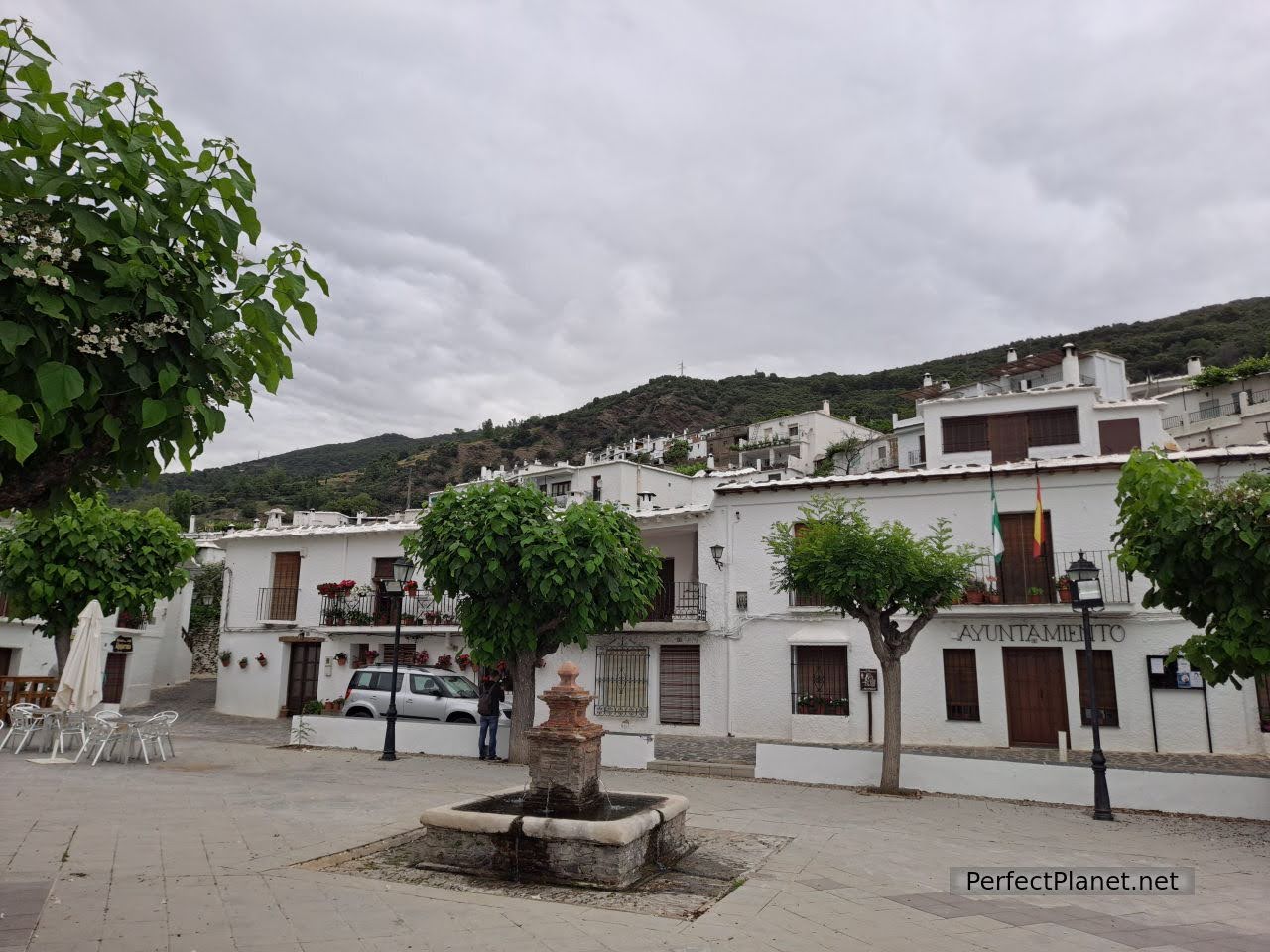
Council
3. Viewpoints
There are several, and every corner has beautiful views of the region.
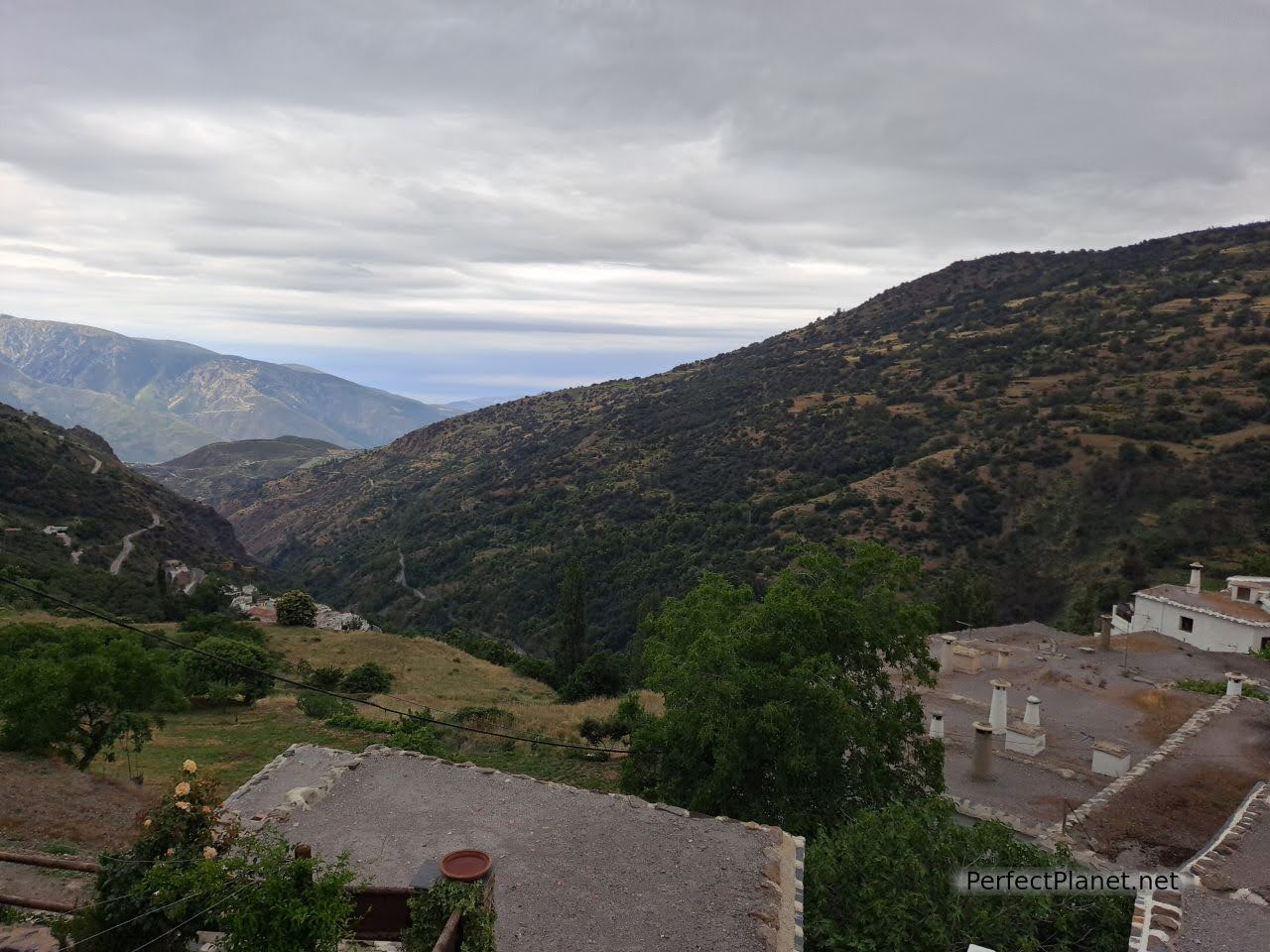
Views from Bubión
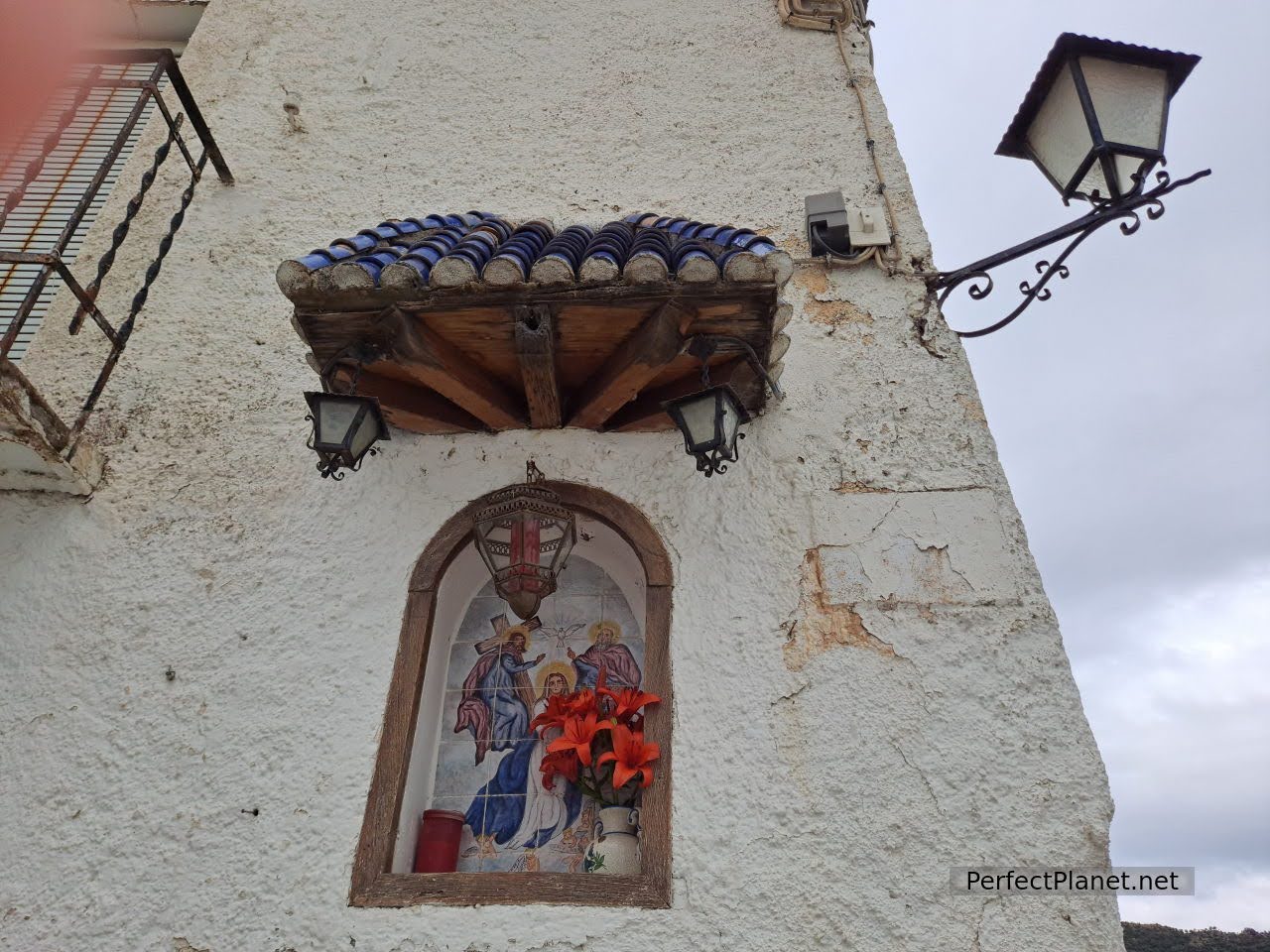
Bubión streets
4. Washing places and public fountains
There are two very interesting ones, one in Lavadero street, Lavadero Alto, and the other in the lower part of the Iglesia square, the Hondera Fountain.
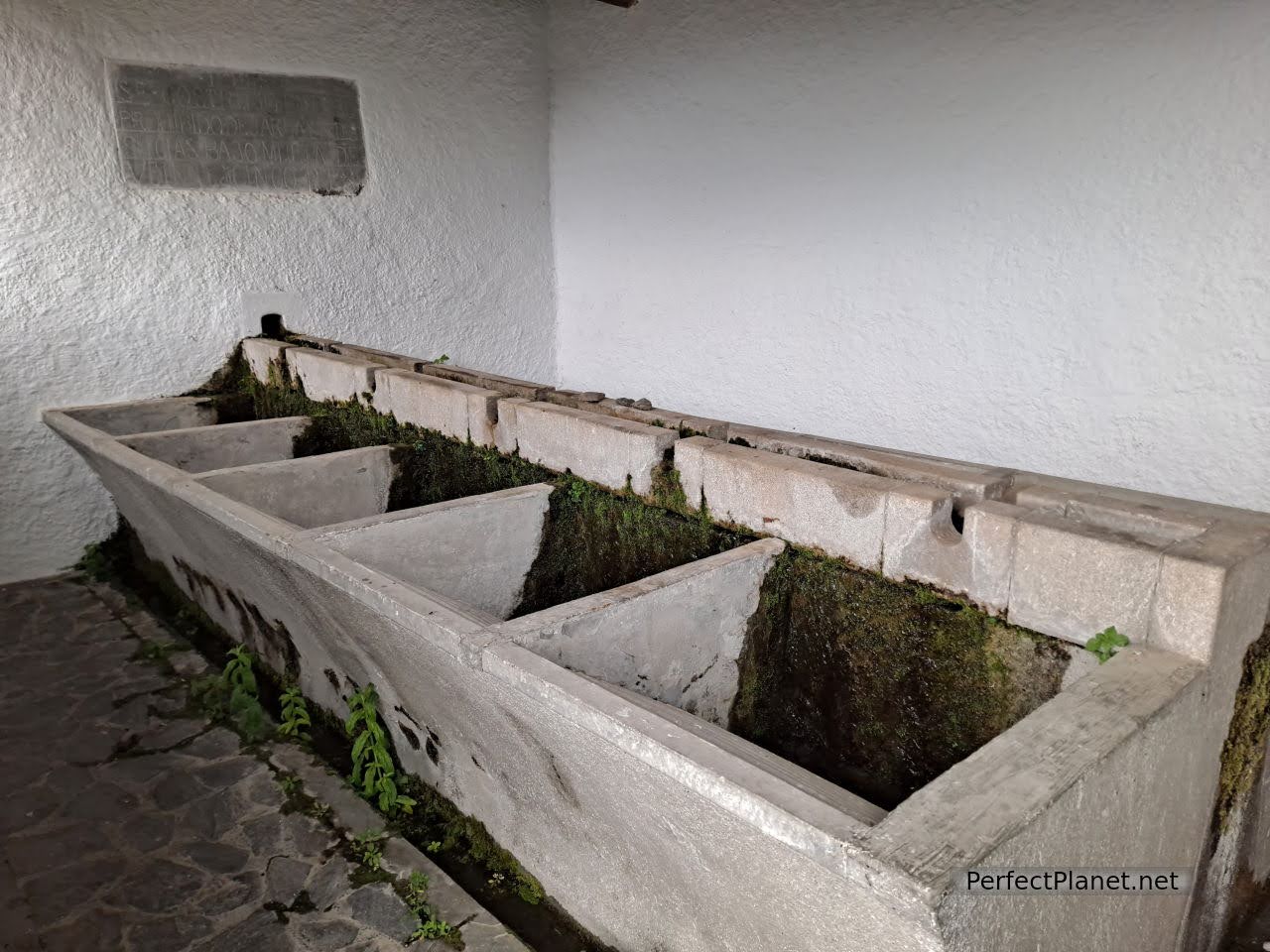
Lavadero Alto
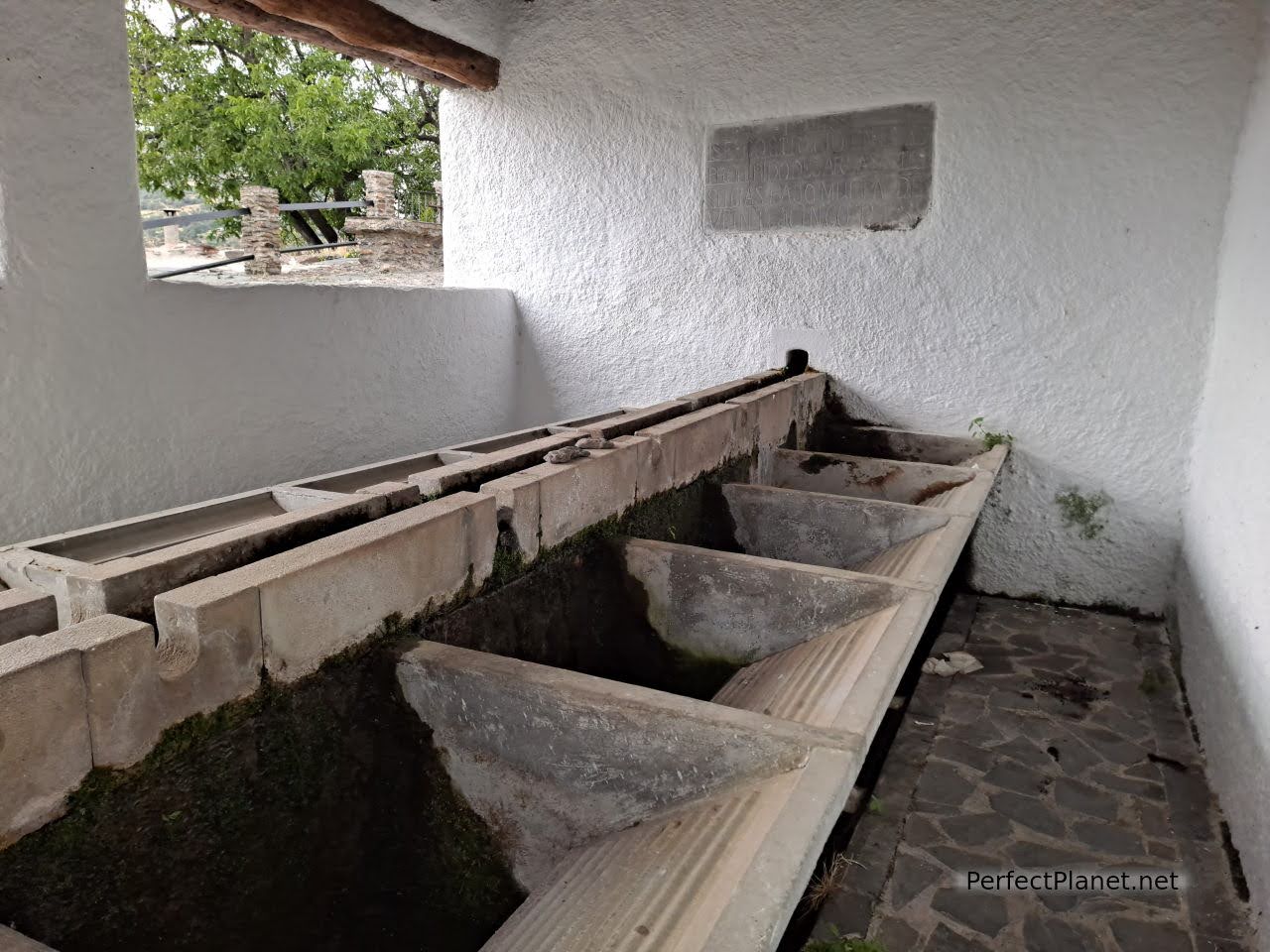
Lavadero Alto
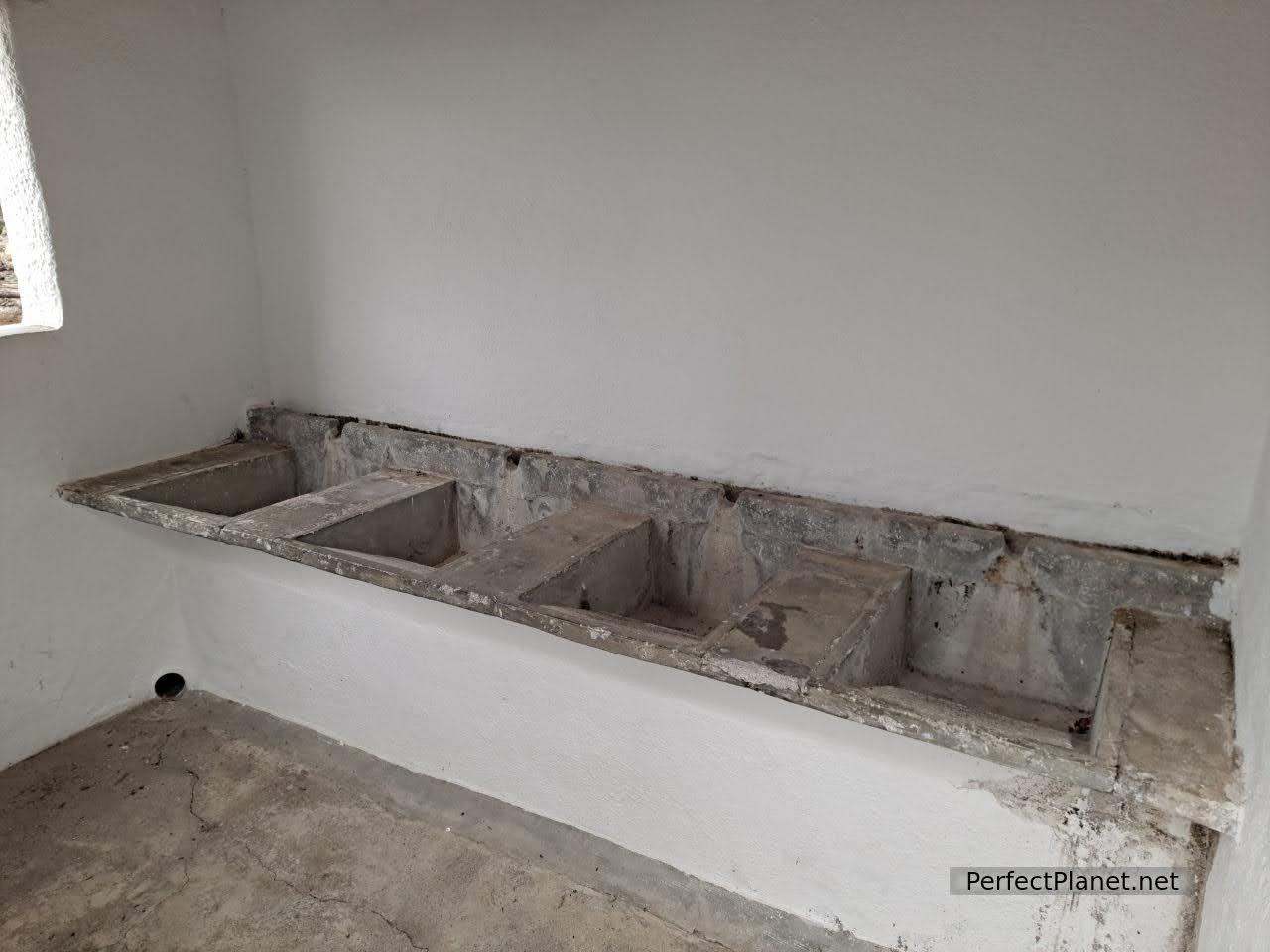
Washhouse of Hondera Fountain
5. Loom workshop
There is a Loom workshop but it is being sold due to retirement. You can still see its beautiful old looms.
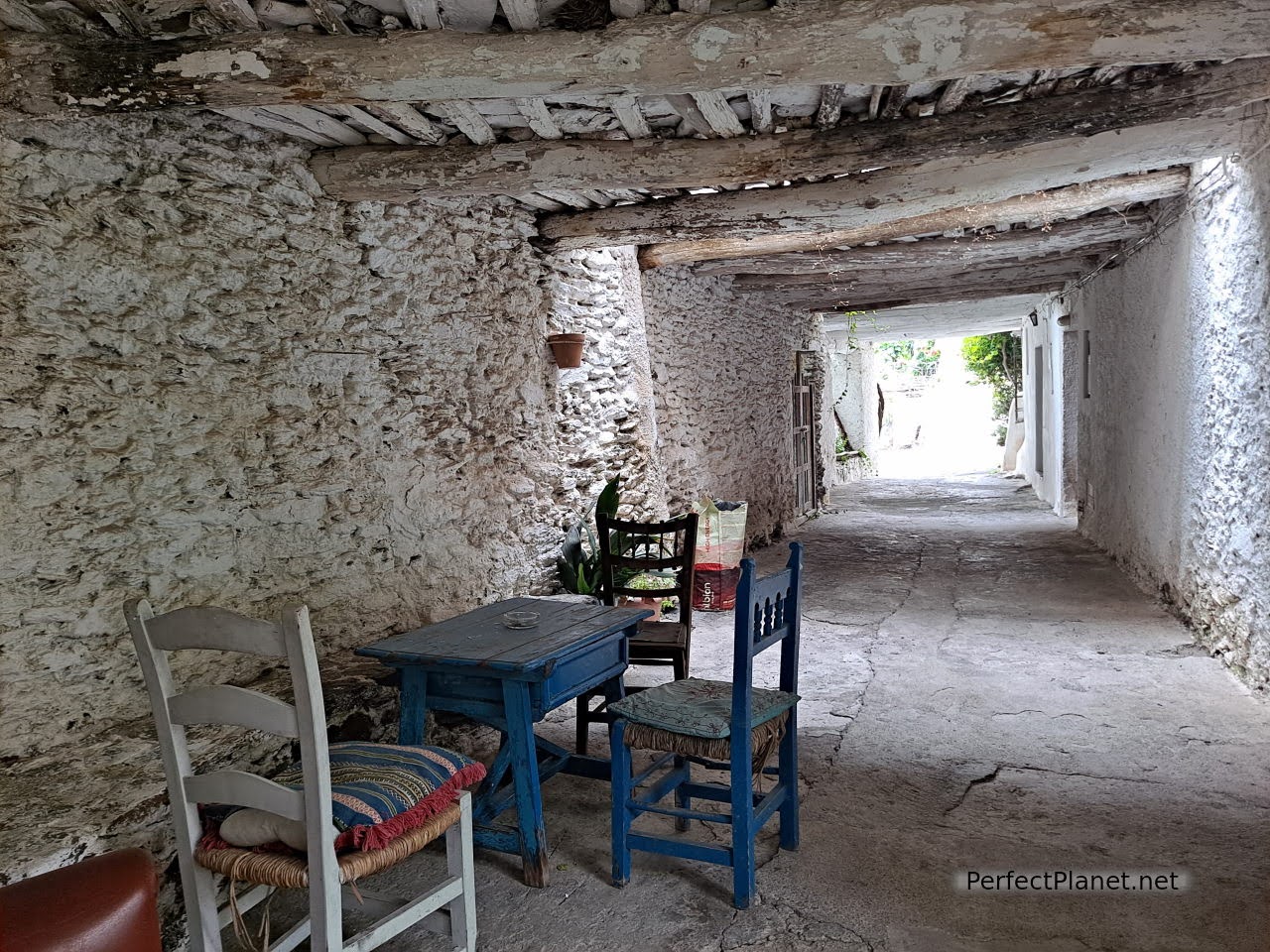
Tinao
Lose yourself in its streets. As in the neighbouring villages, enjoy the tinaos, the narrow, steep streets, with their white buildings filled with pots of brightly coloured flowers.
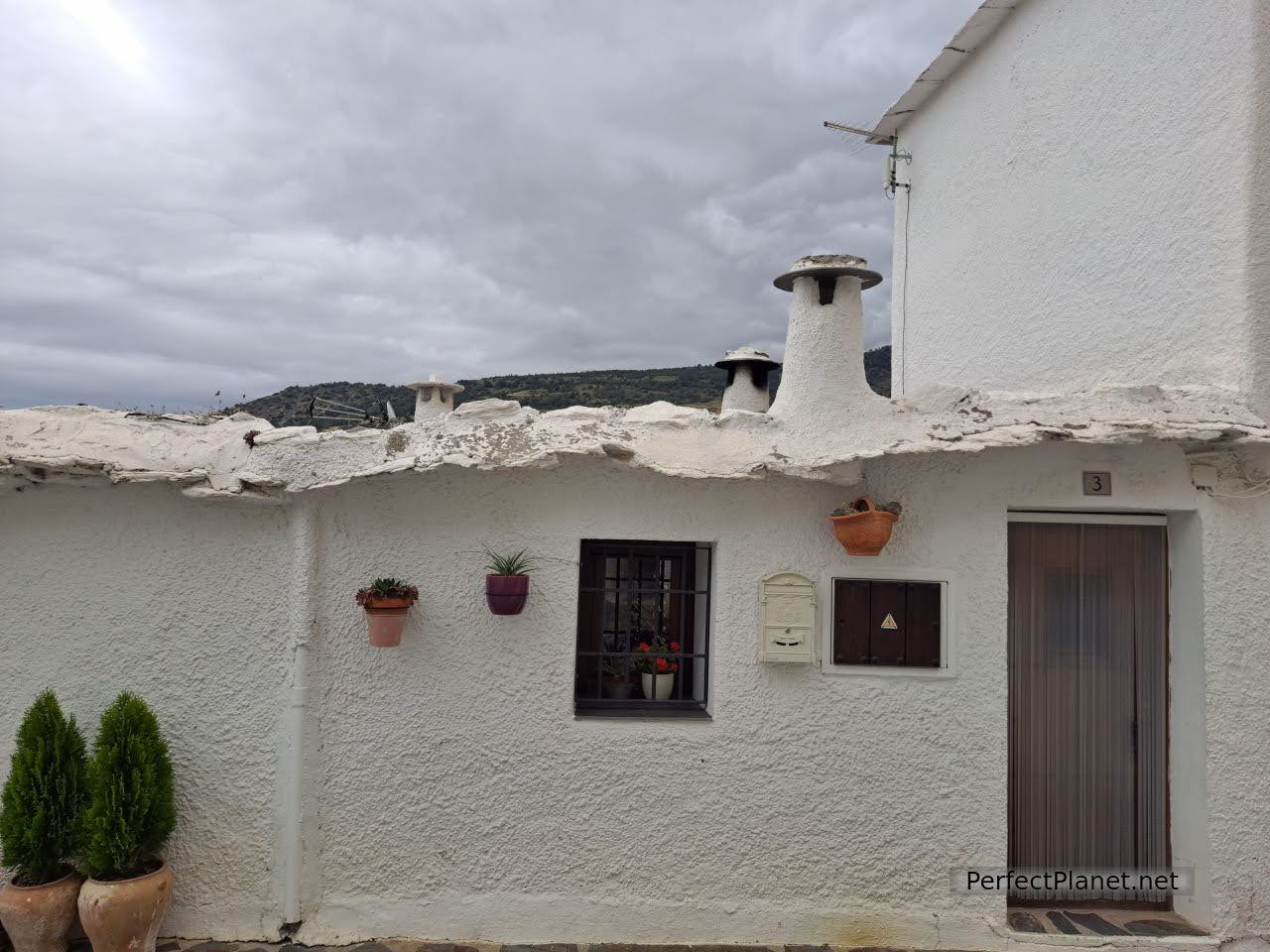
Bubión typical house
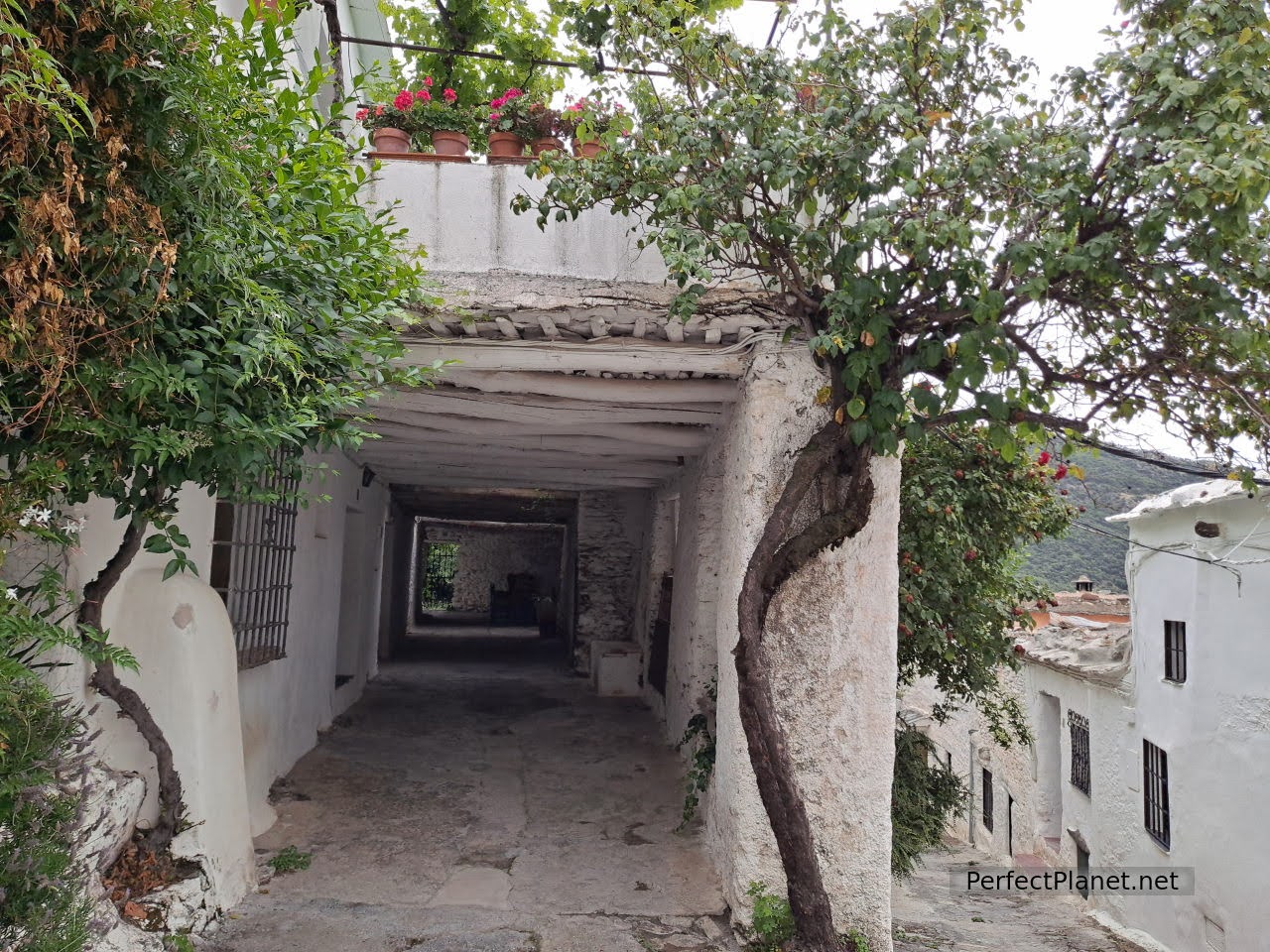
Tinao
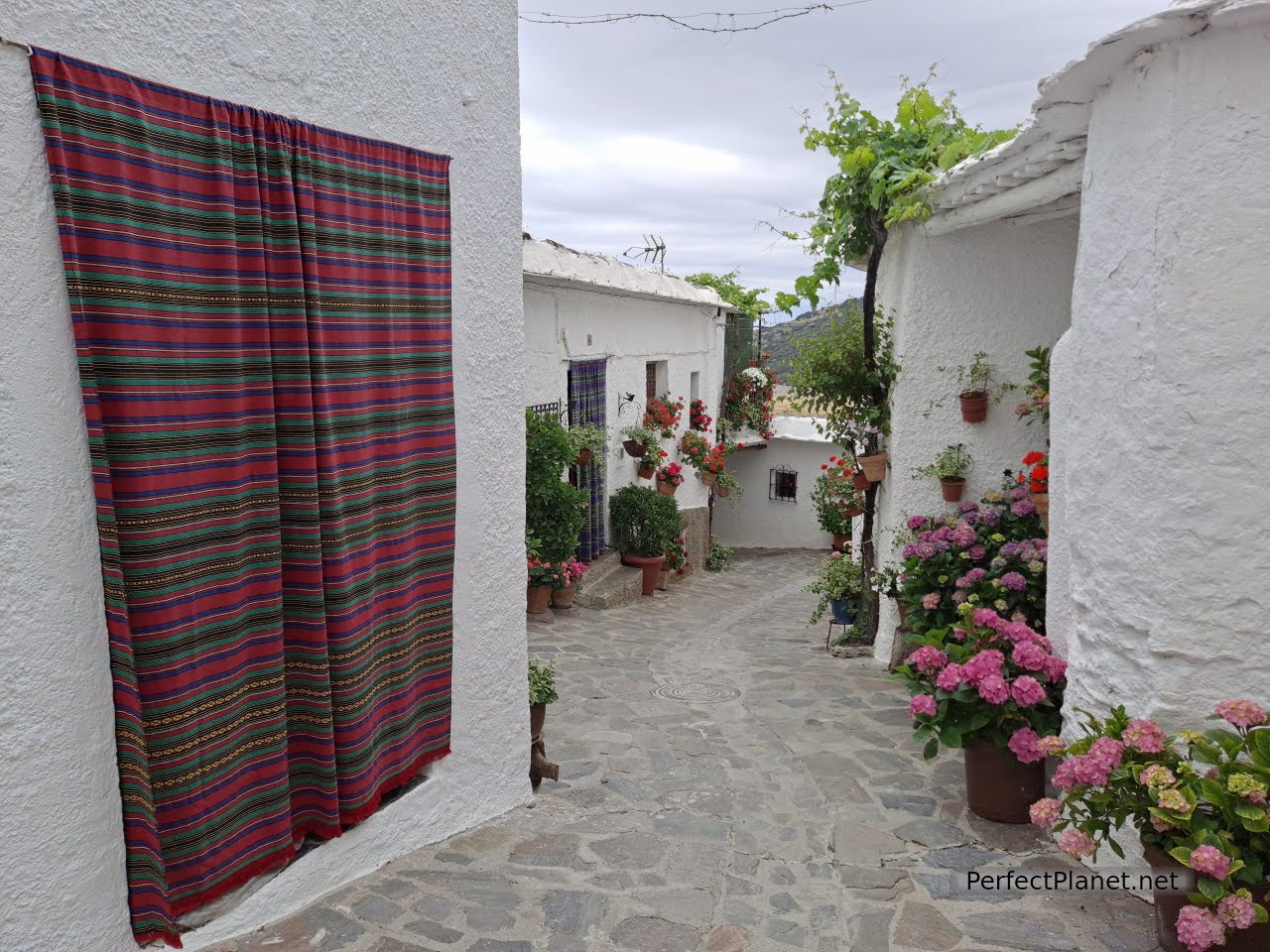
Bubión streets
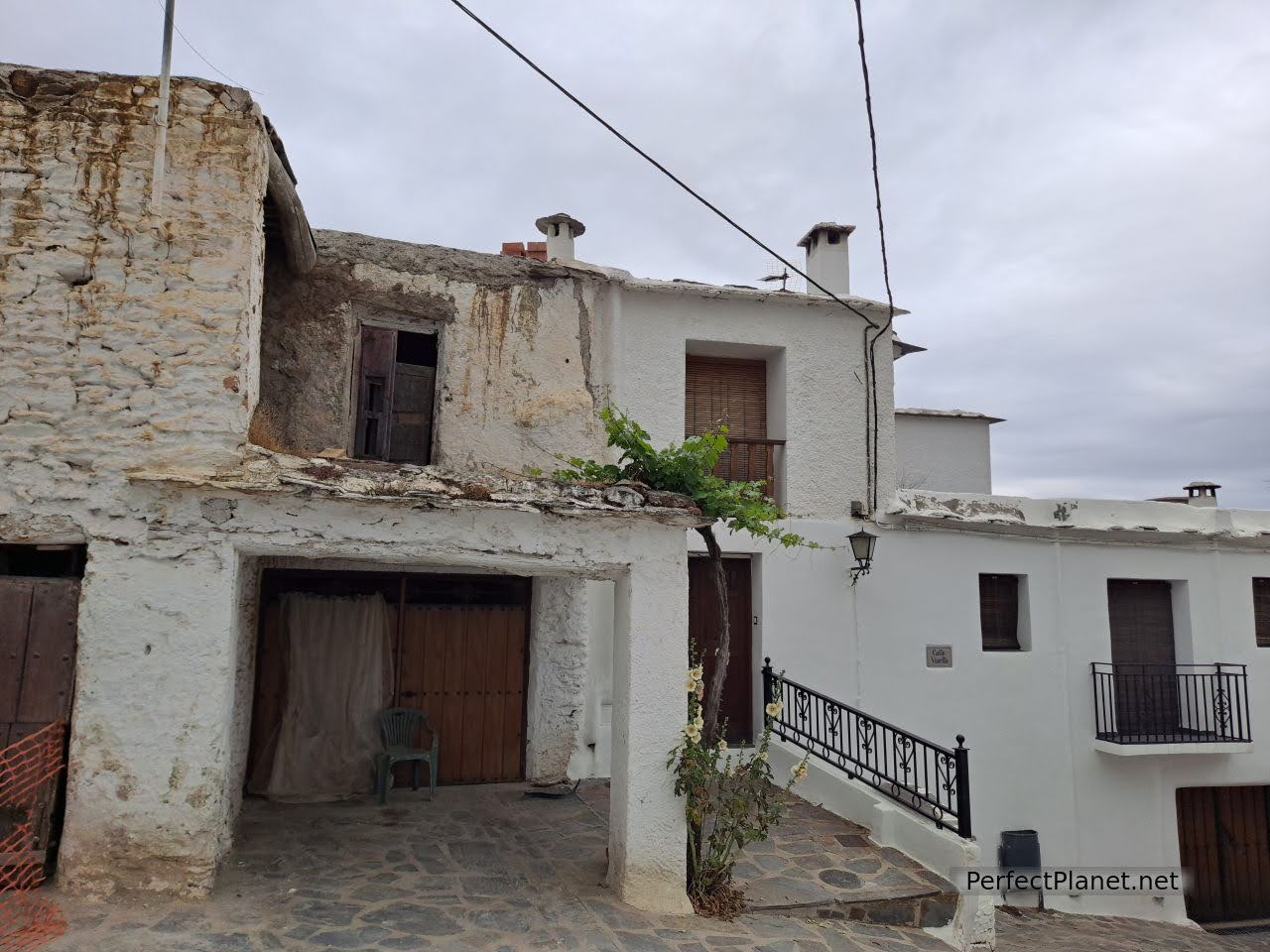
Bubión streets
Talk to the people. We had the good fortune to meet a man who was setting up the farming tools by hand.
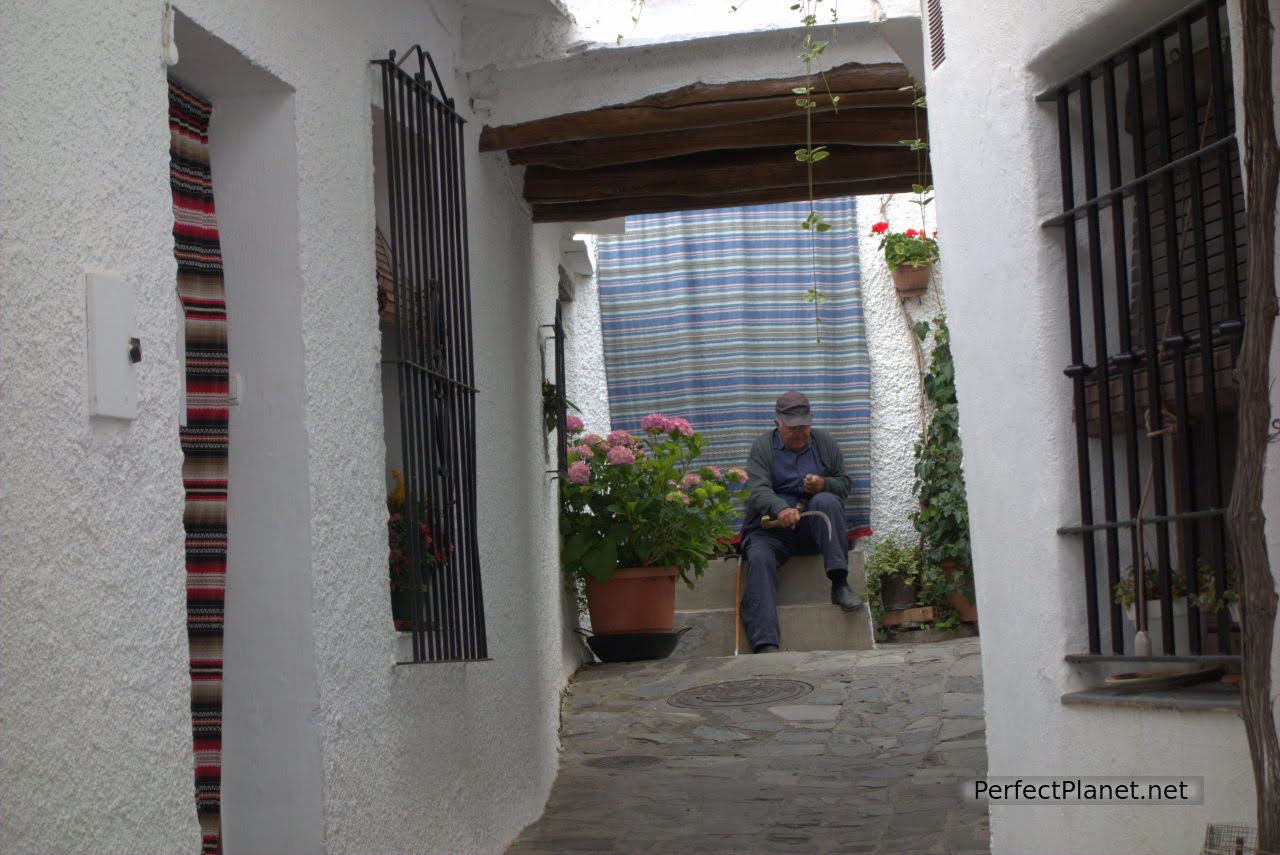
Man fixing tool
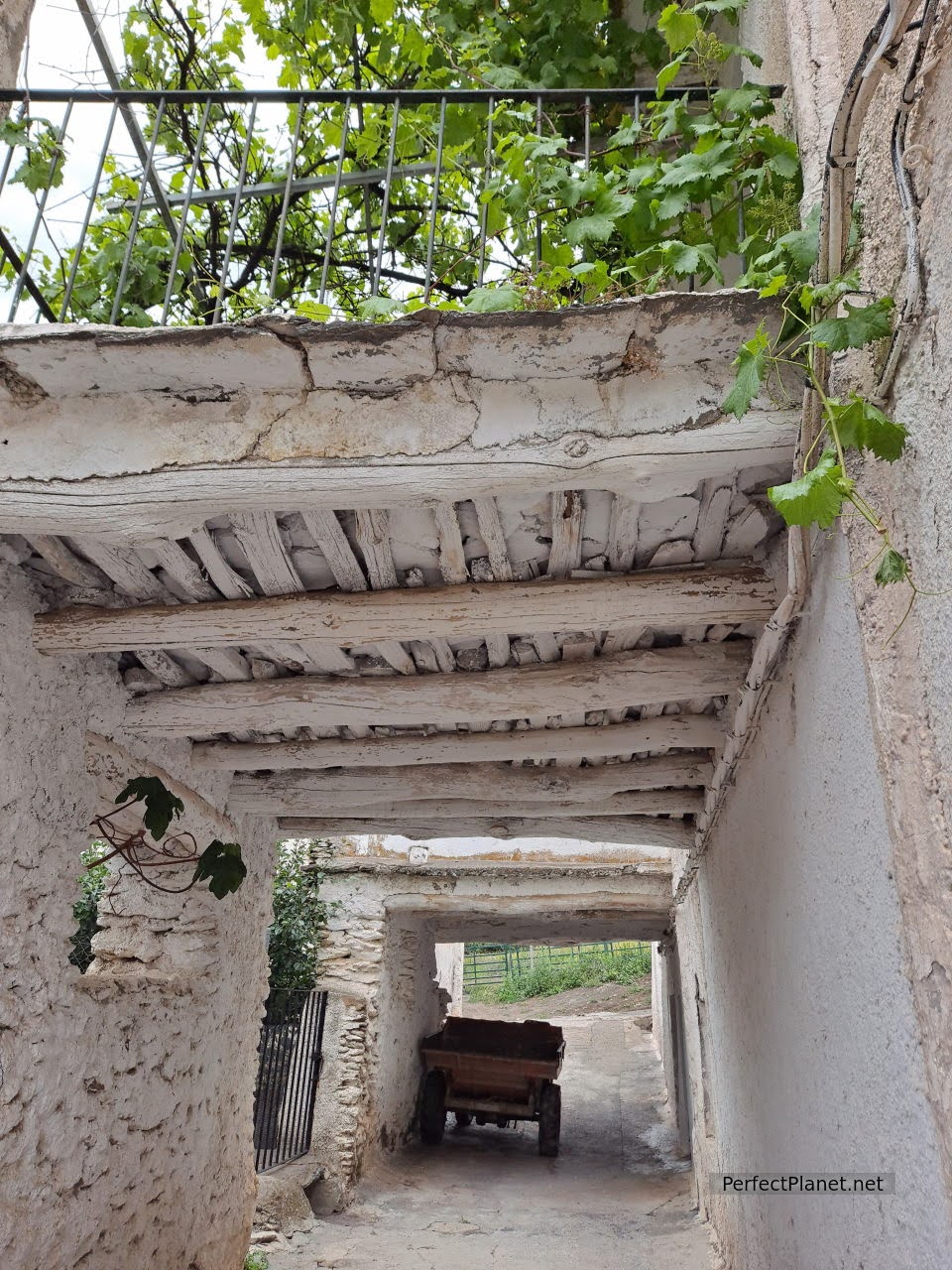
Tinao
As in Capileira it has all the services, supermarket, bars, restaurants, bakery, accommodation. We recommend the restaurant Teide. Brutal.
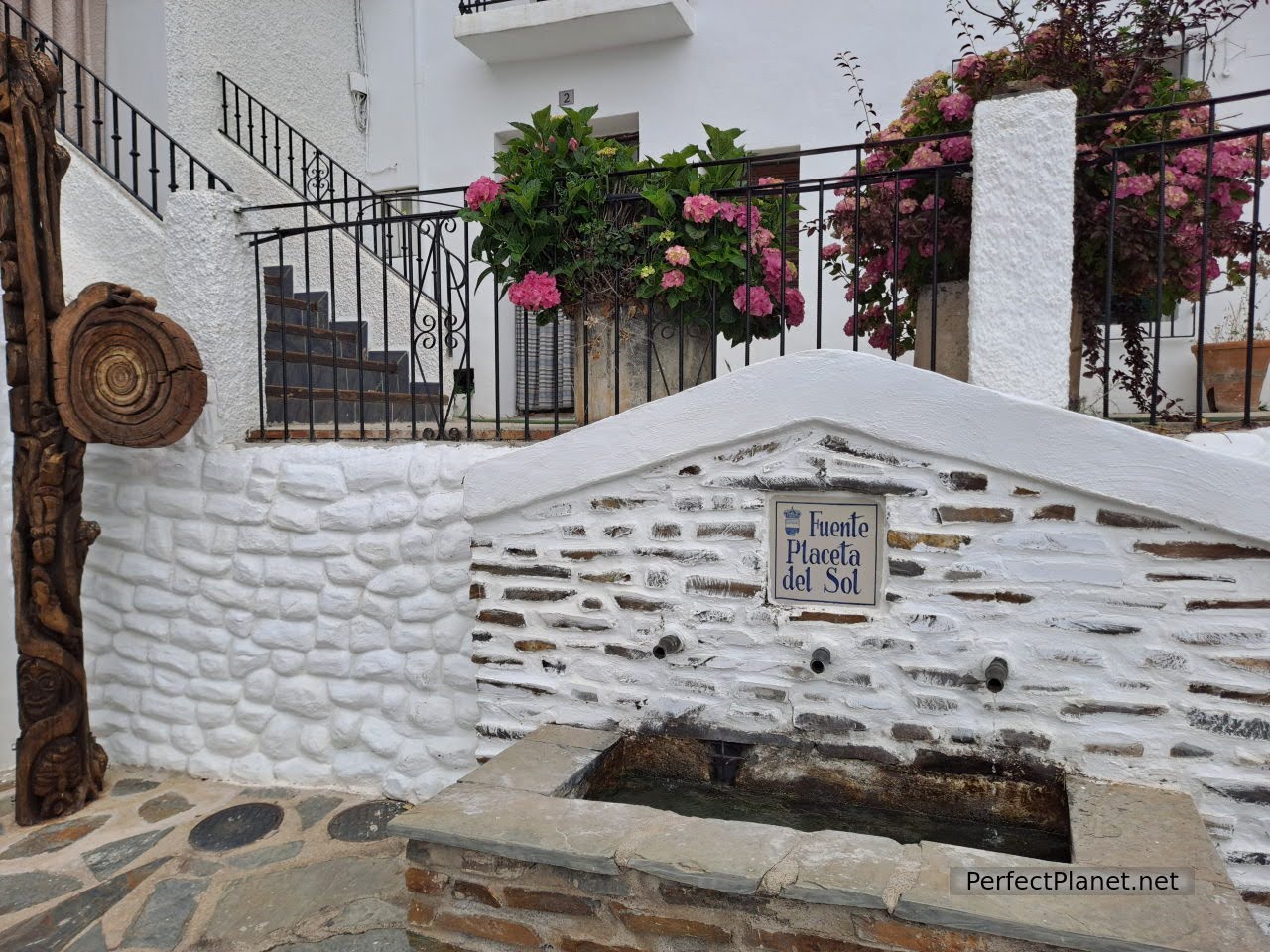
Placeta del Sol Fountain
3. Pampaneira
The beautiful Pampaneira is one of the best known towns in the Alpujarra and also one of the most touristy. Nevertheless, a stop in Pampaneira is a must. It has several free car parks.
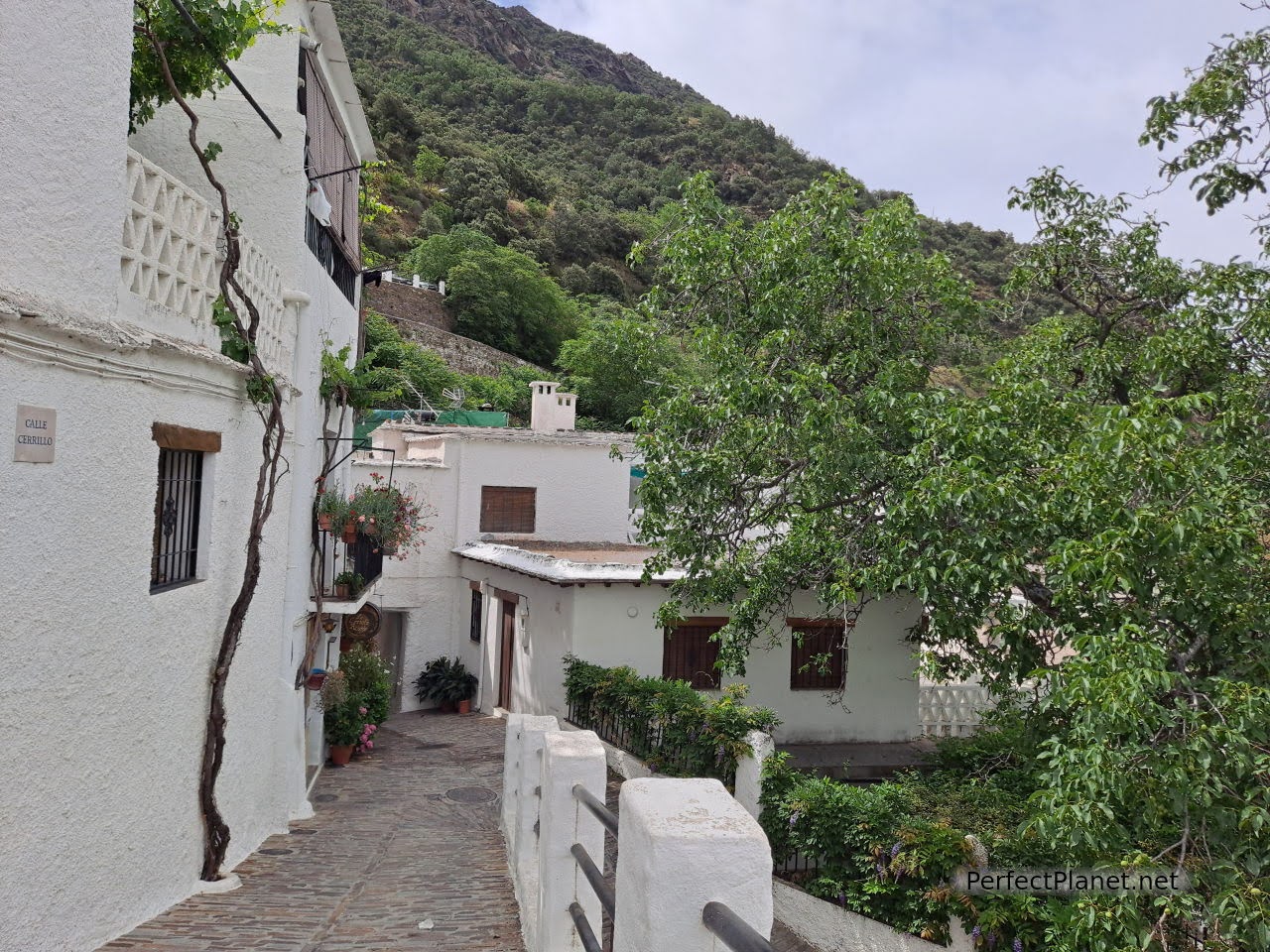
Pampaneira streets
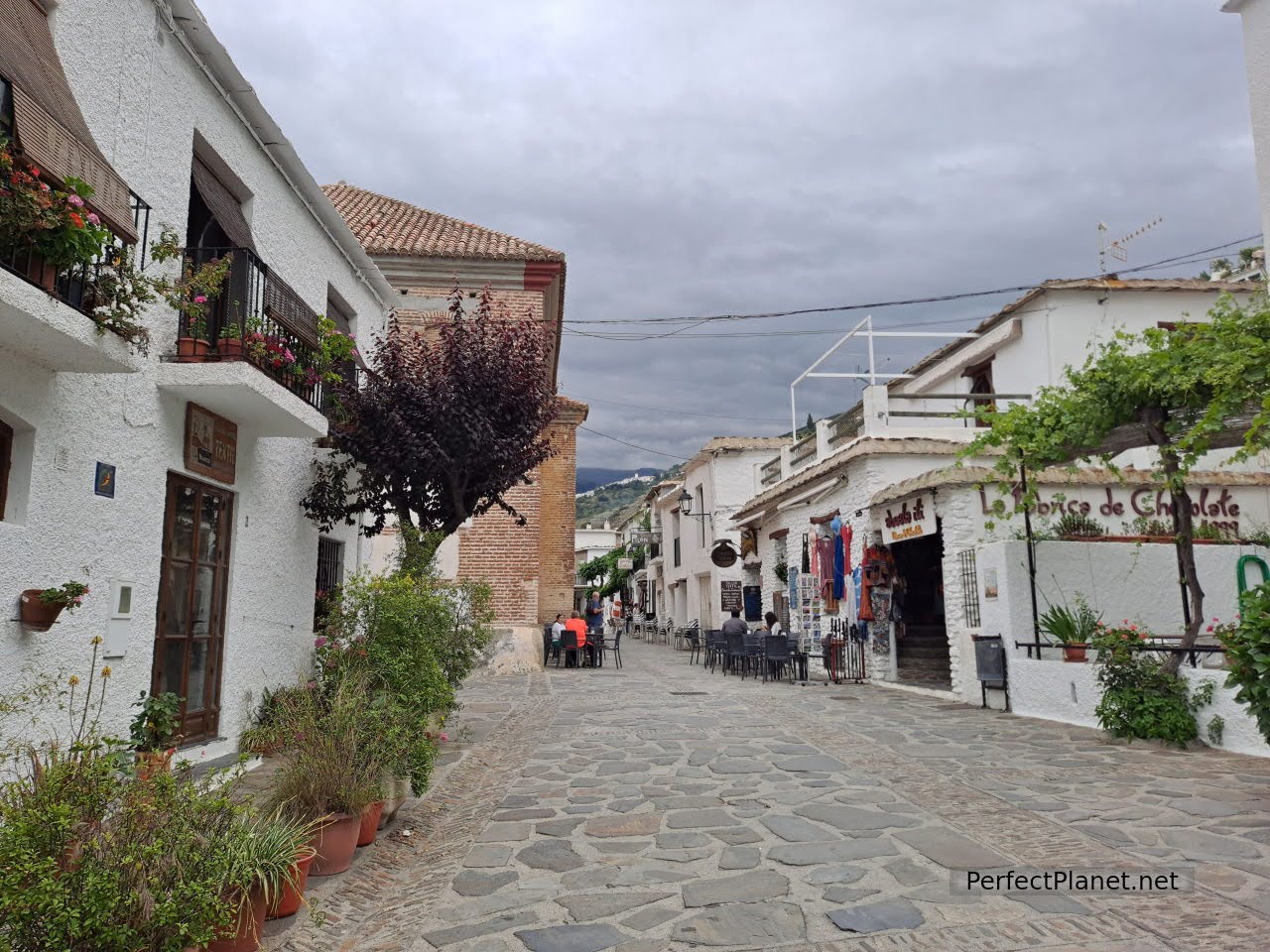
Pampaneira streets
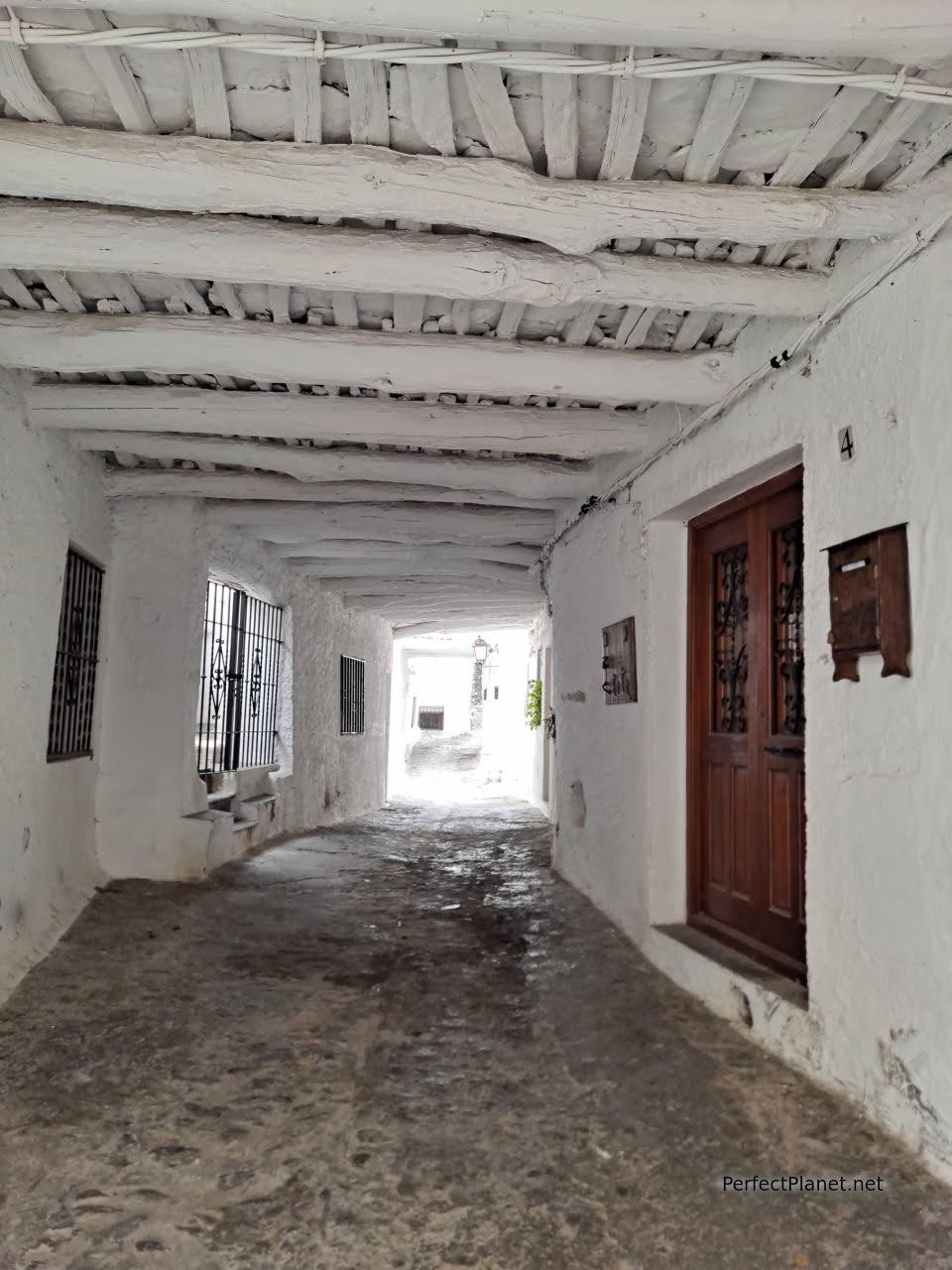
Pampaneira streets
As in its neighbouring villages, wandering through its streets is a delight. It has several points of interest that you can't miss!
1. Santa Cruz Church
Located in the Libertad square, it has a beautiful Mudejar-style coffered ceiling.
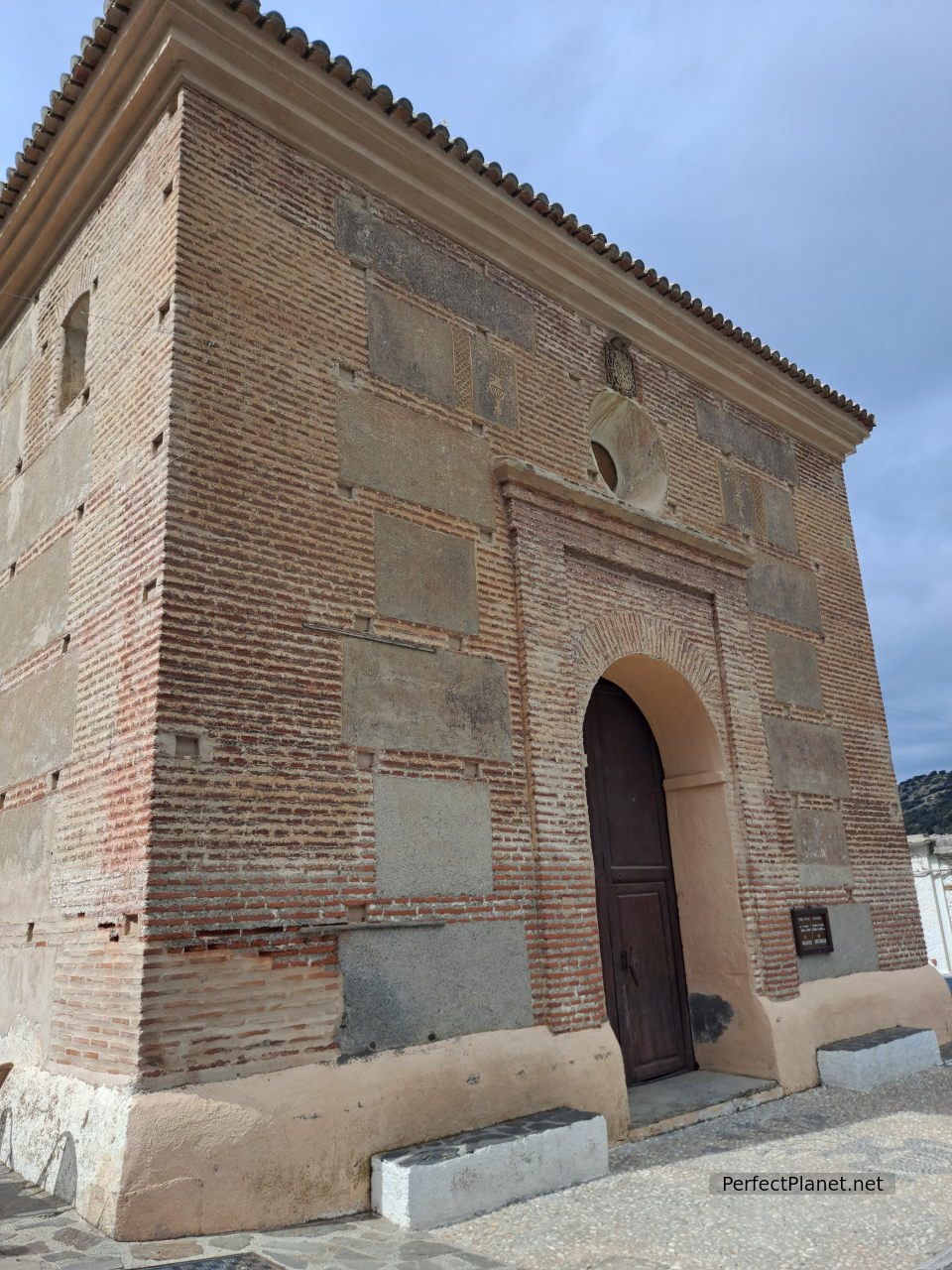
Santa Cruz Church
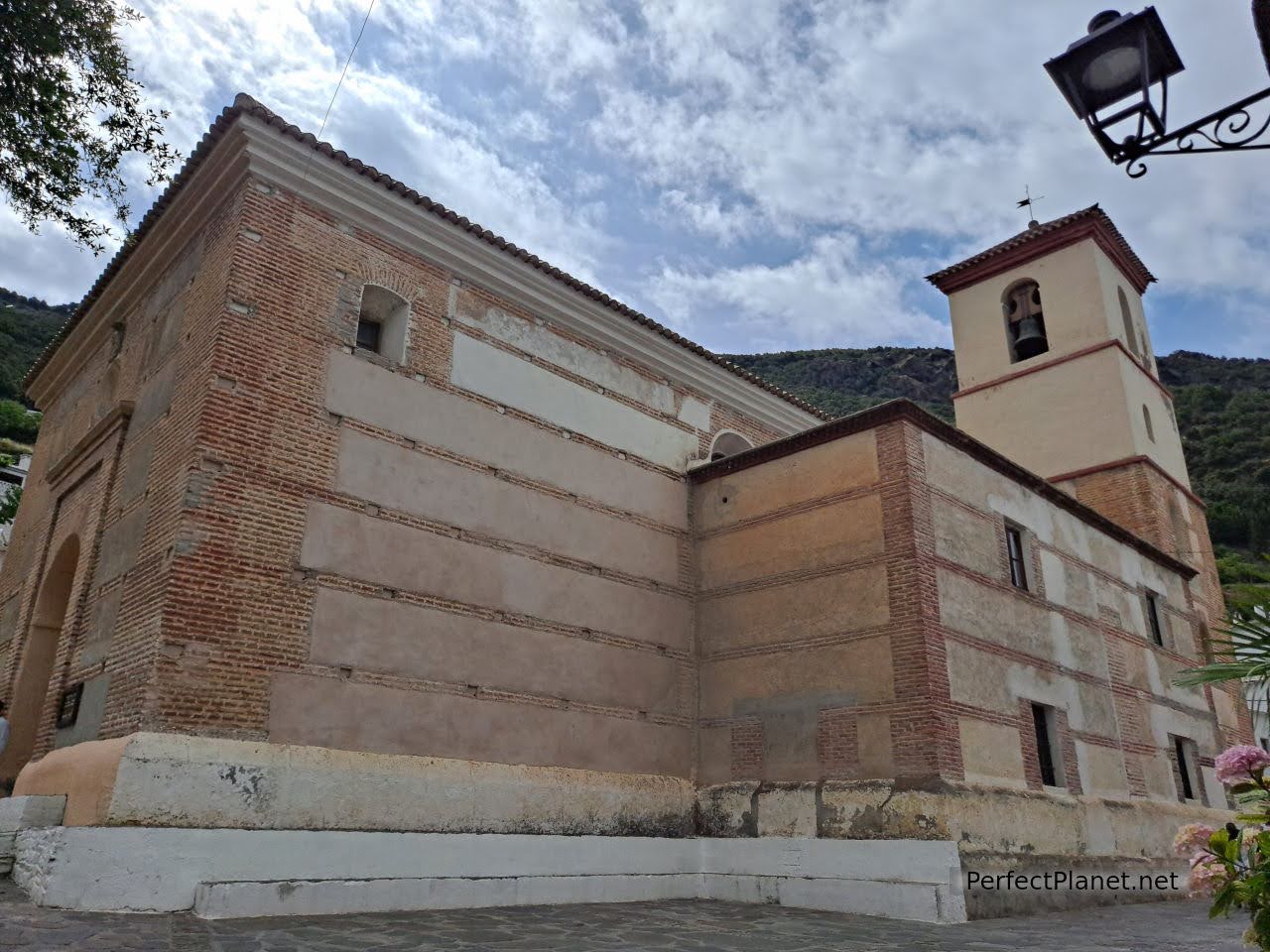
Santa Cruz Church
2. Libertad square
The nerve centre of Pampaneira with bars and restaurants where you can enjoy an aperitif, and craft shops. The fountain of San Antonio stands out.
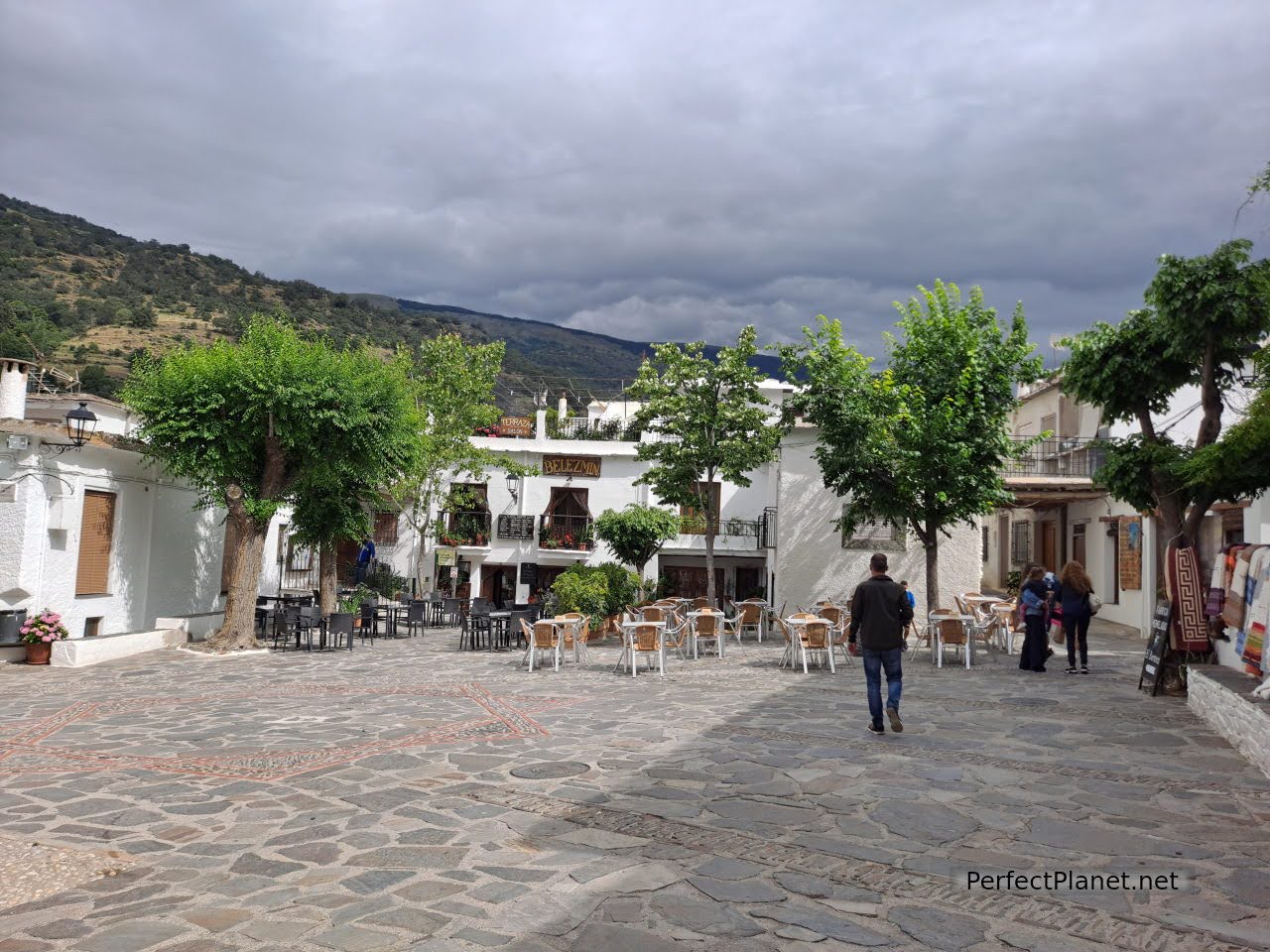
Libertad square
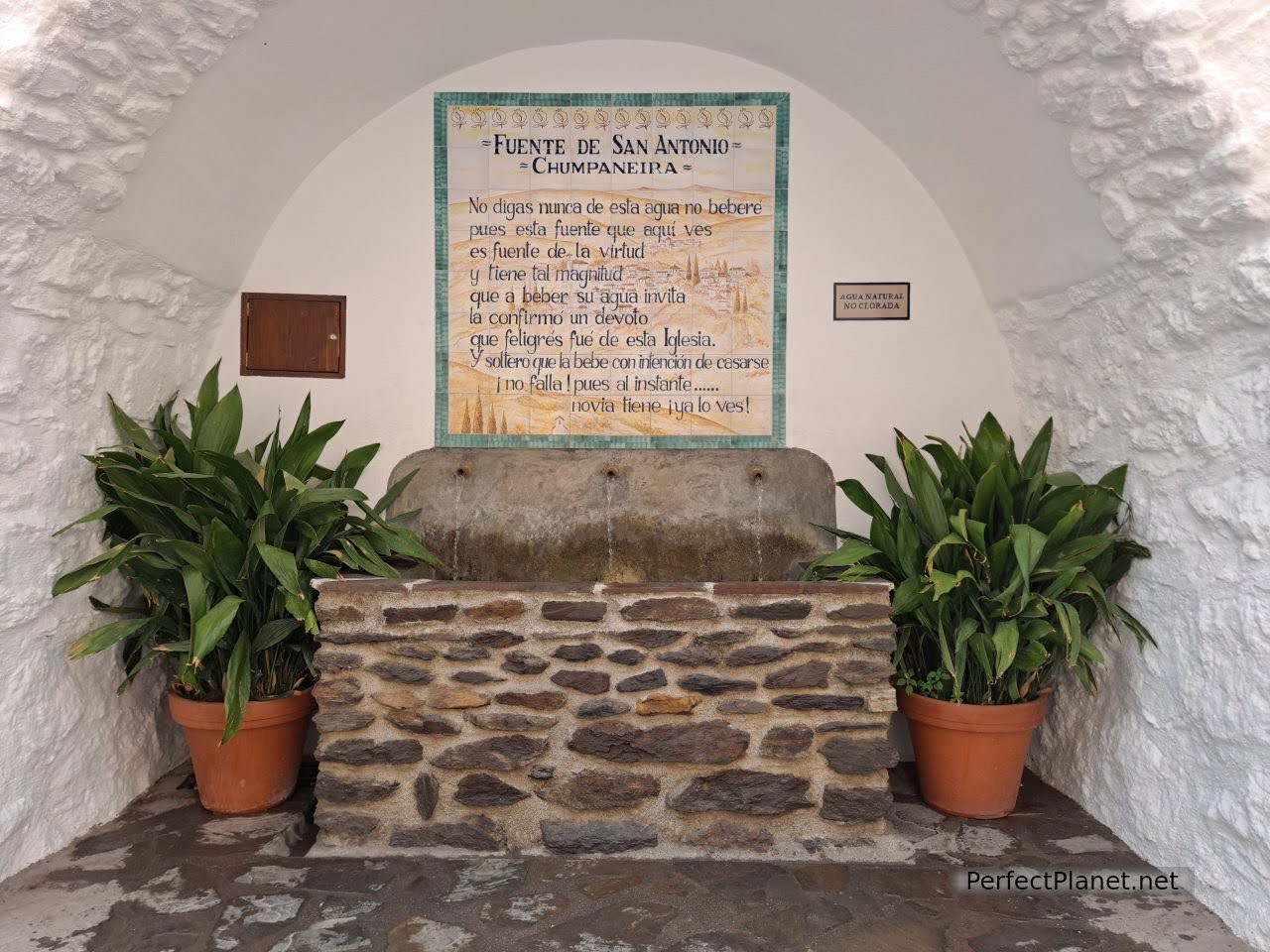
San Antonio fountain
3. Pampaneira streets
One of the highlights is Veronica street, with its ditch dividing the two pavements, a delight for the senses.
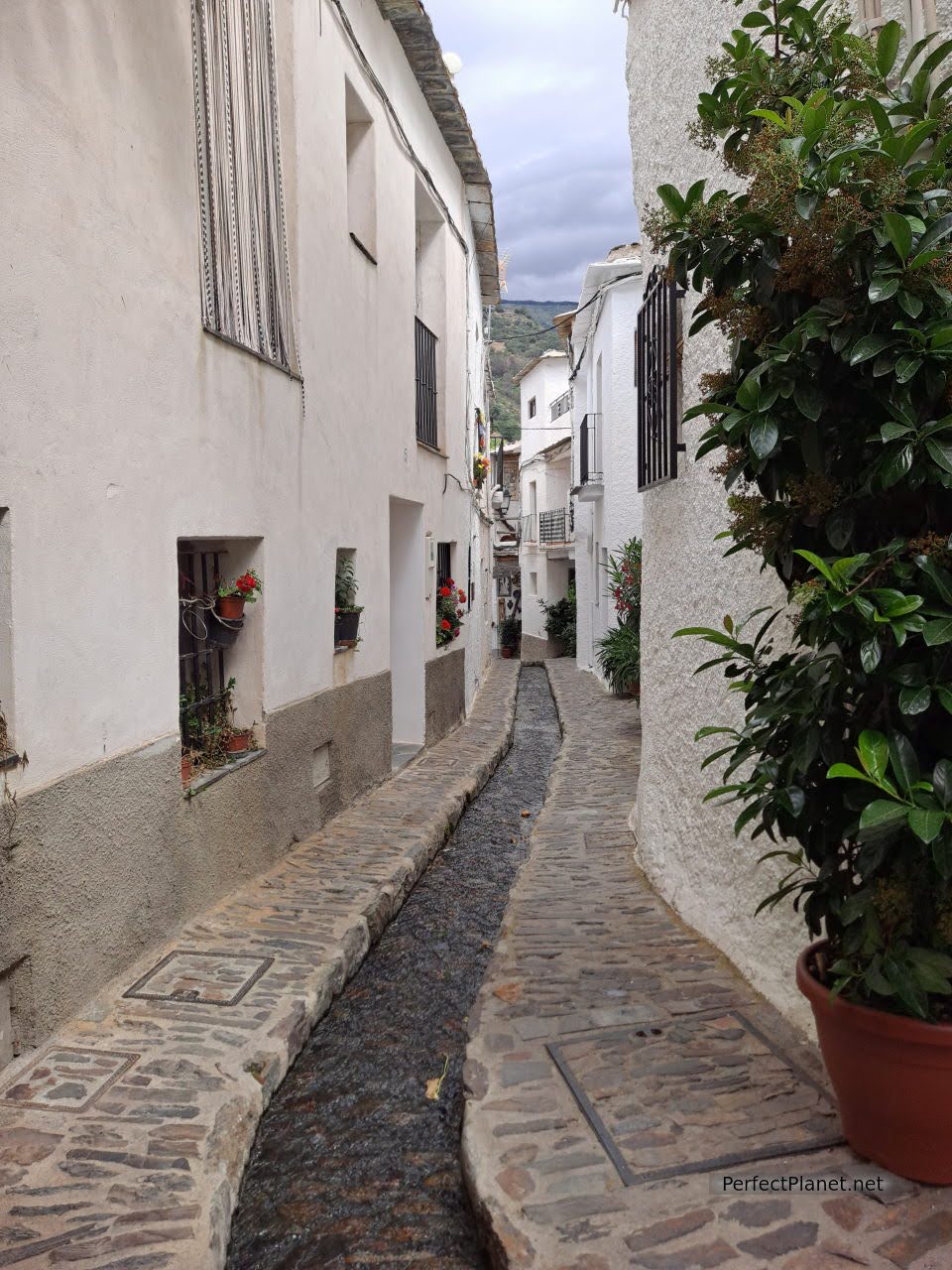
Verónica street
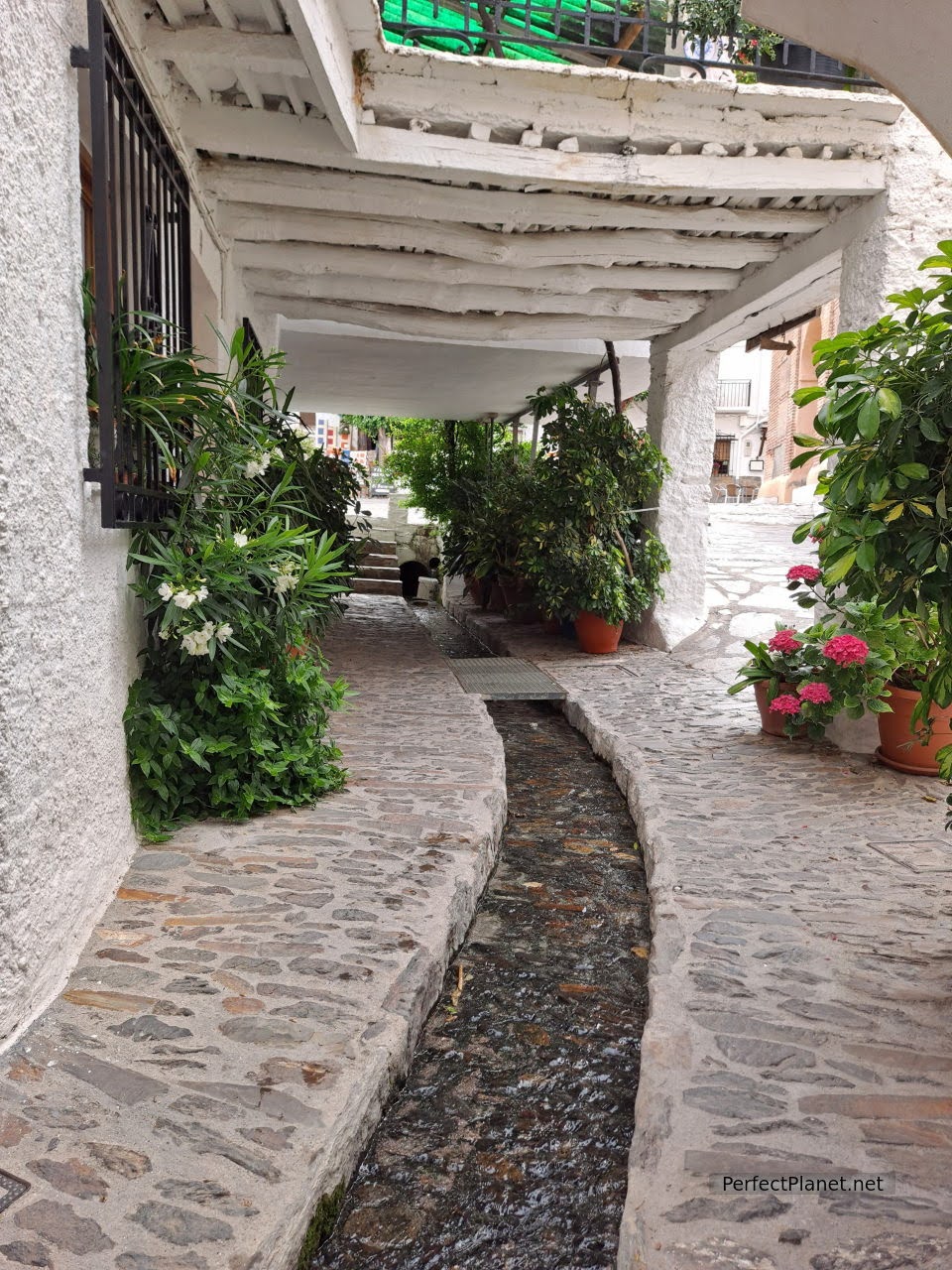
Verónica street
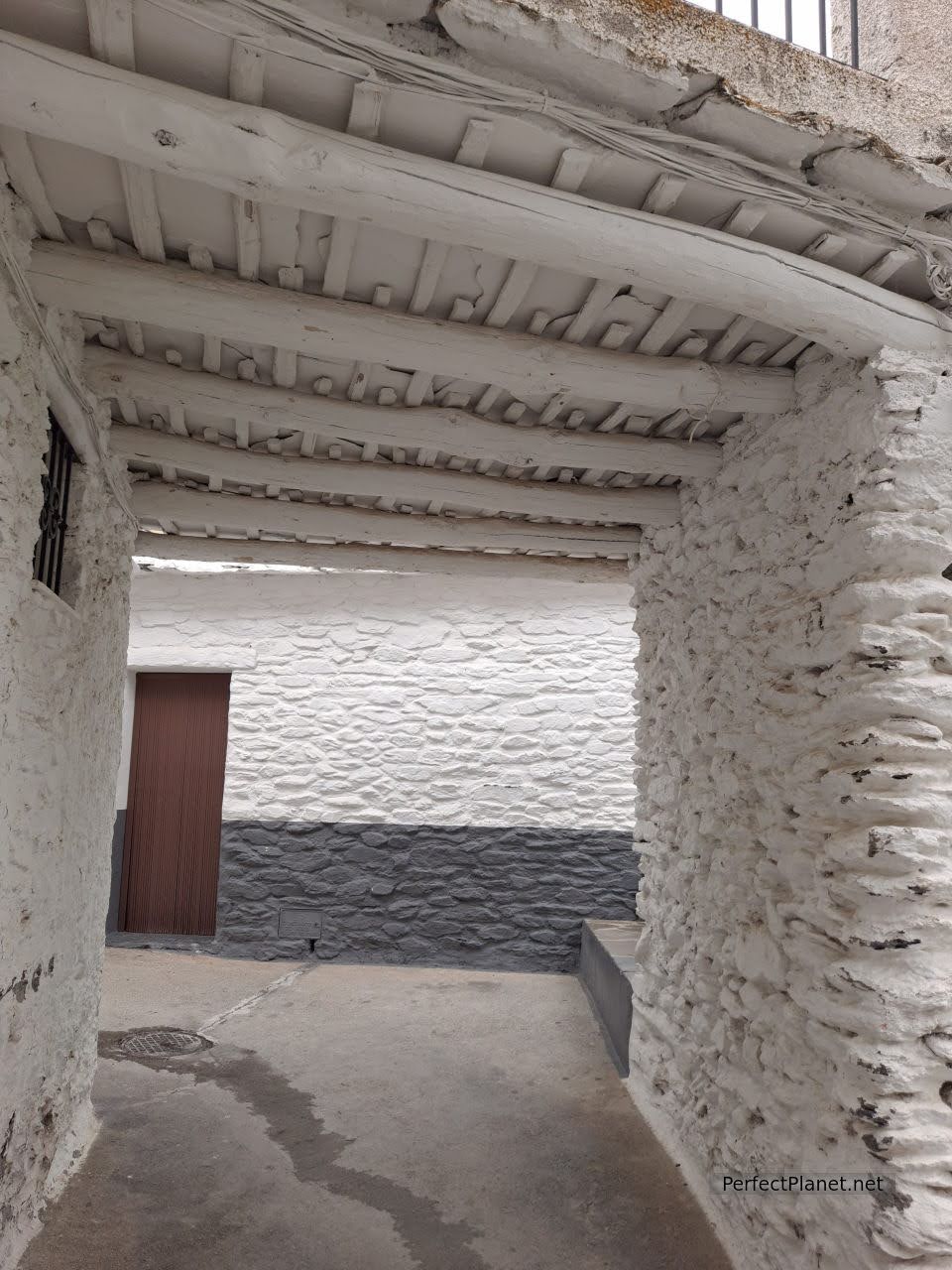
Tinao
Silencio street and Partidero street are also a must. It is worth mentioning the promenade dedicated to Federico García Lorca, decorated with poems by the poet and spectacular views. Tinaos and terraos, houses decorated with jarapas and pots with beautiful flowers.
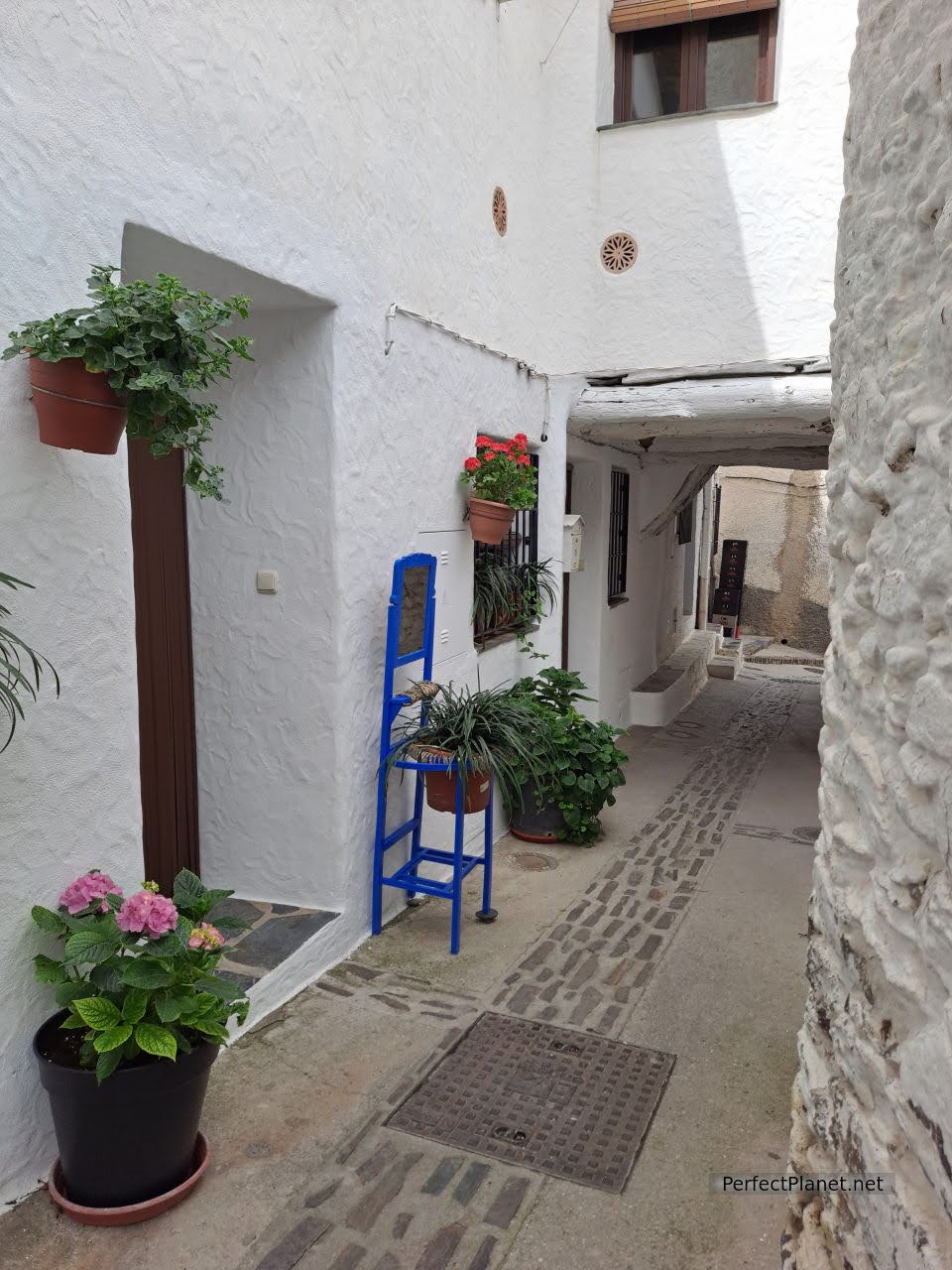
Silencio street
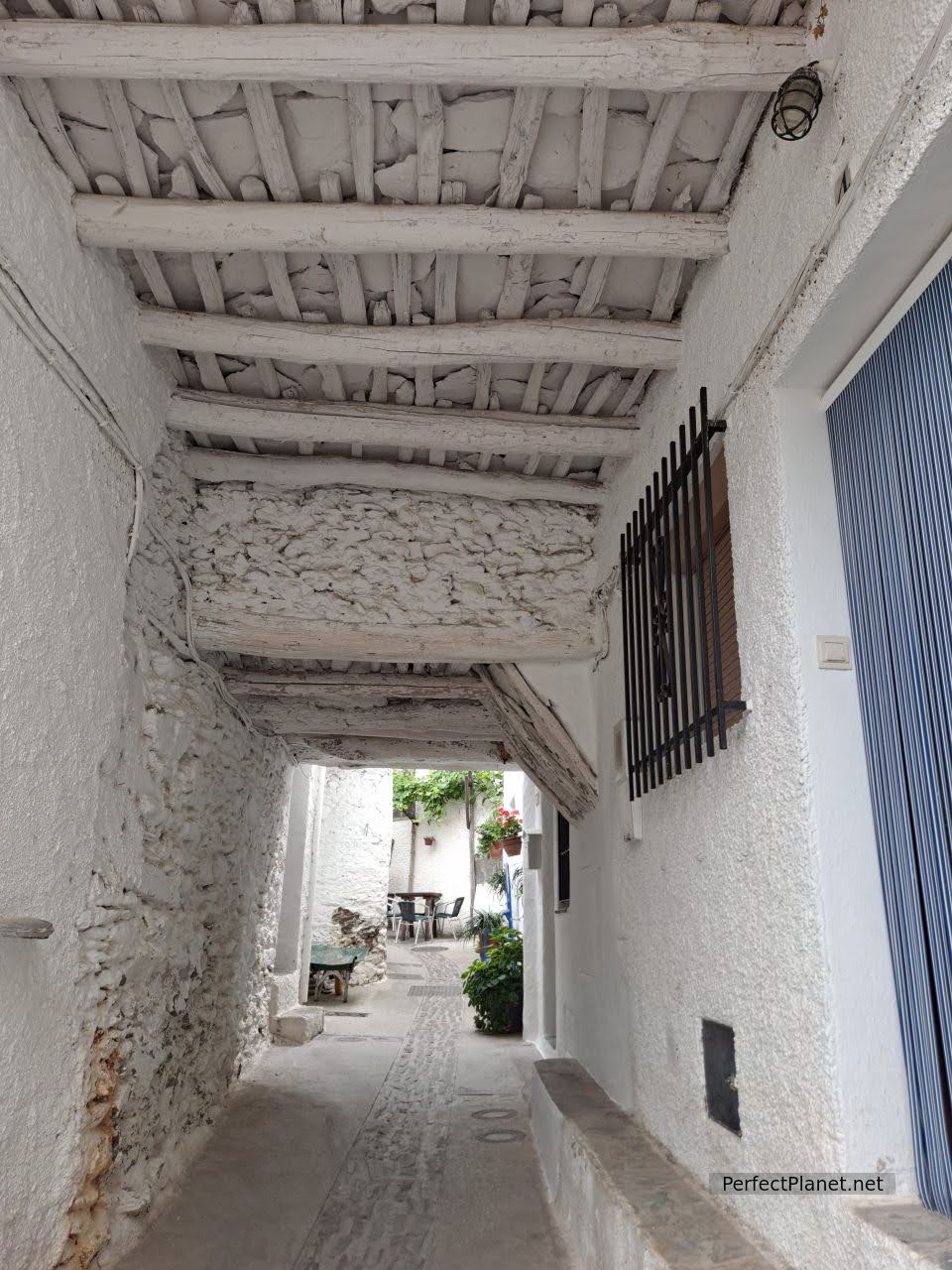
Tinao
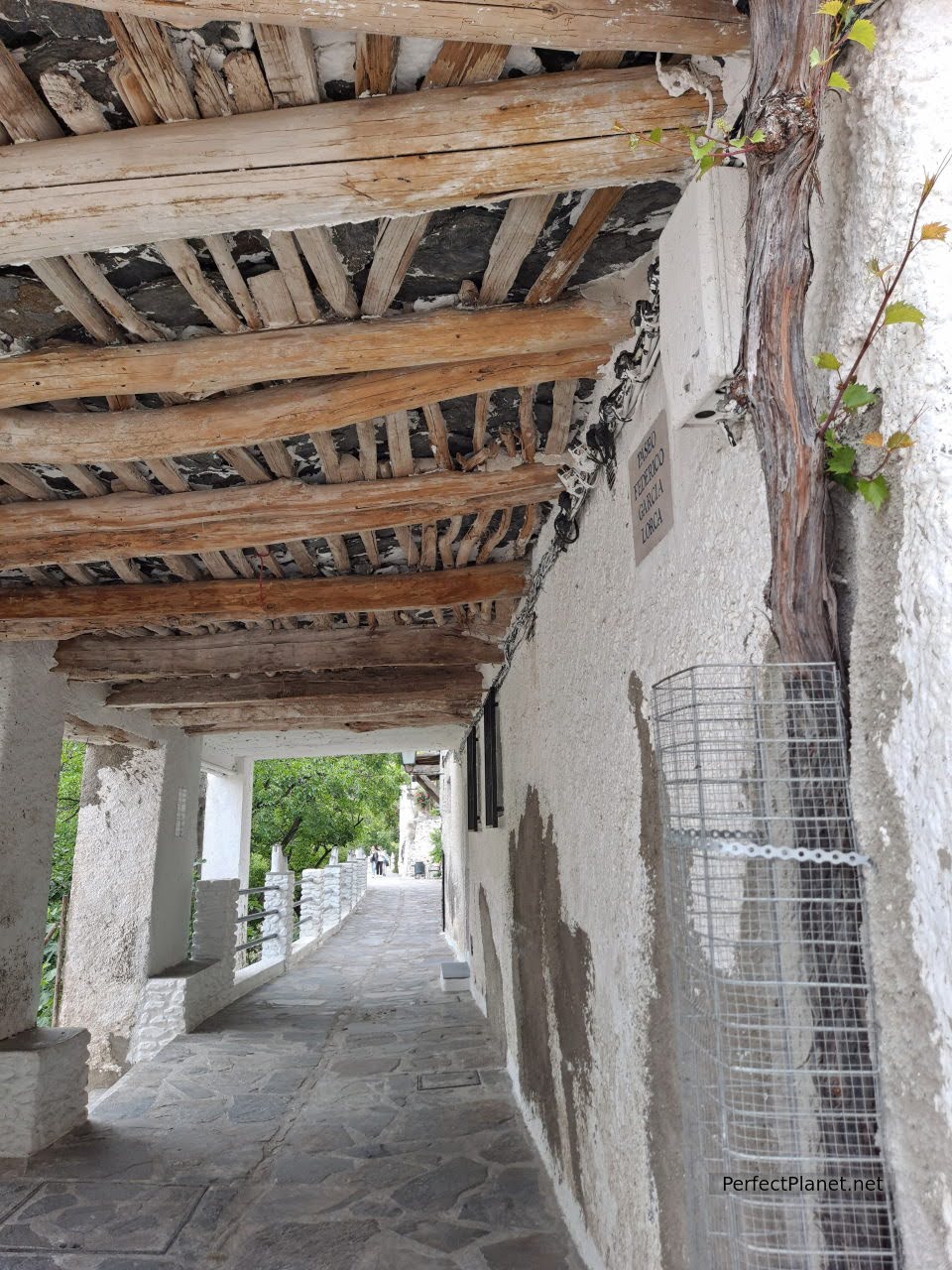
Federico García Lorca promenade
4. Public washhouse
Don't miss this washhouse next to the Cerrillo fountain, which is still in working order.
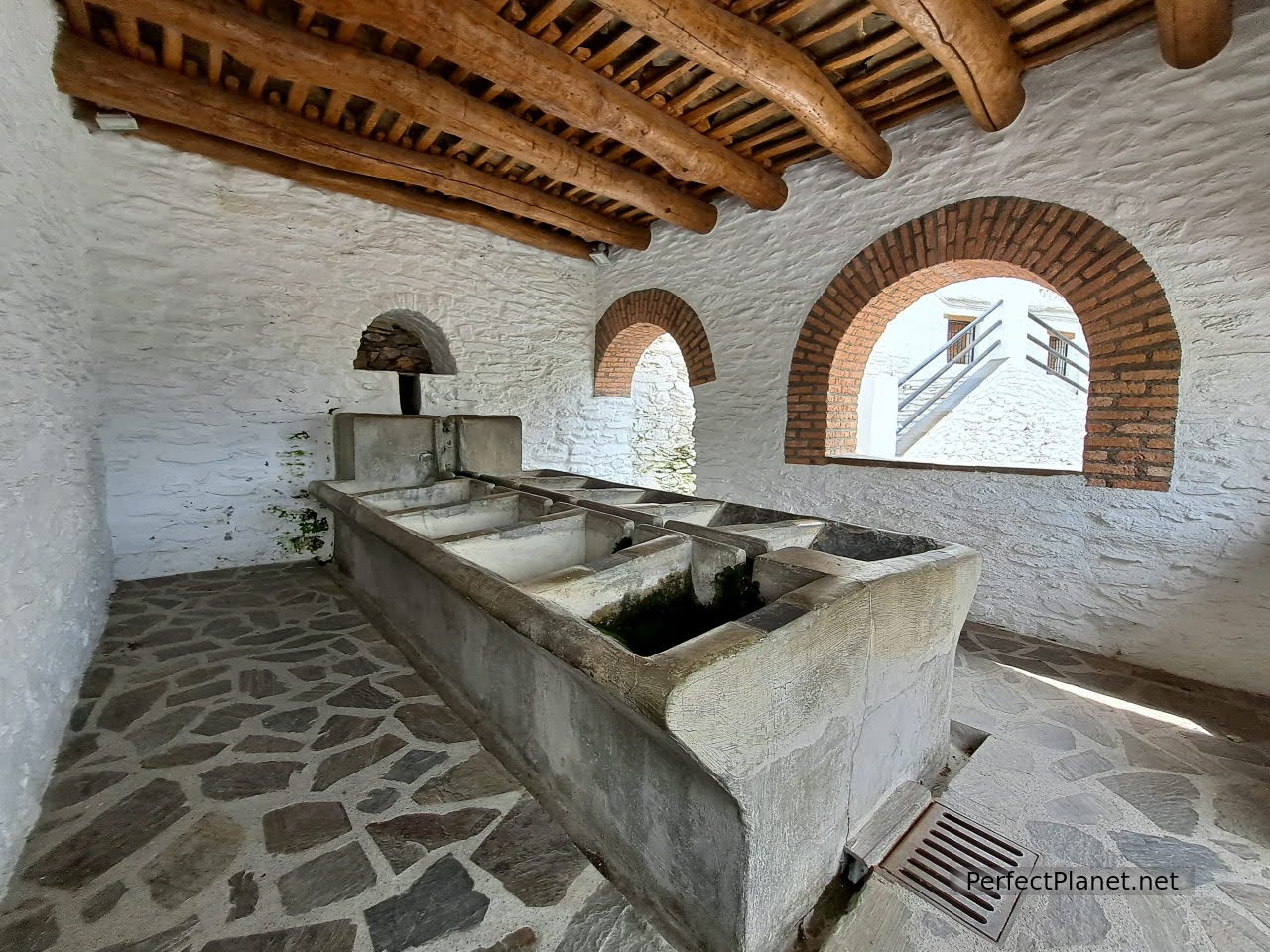
Washhouse
Where to eat in Pampaneira. The truth is that there are many options but we recommend the restaurant Bodega Asador el Lagar. This picturesque place not only offers typical dishes and grilled meats, but you can also buy typical products of the area.
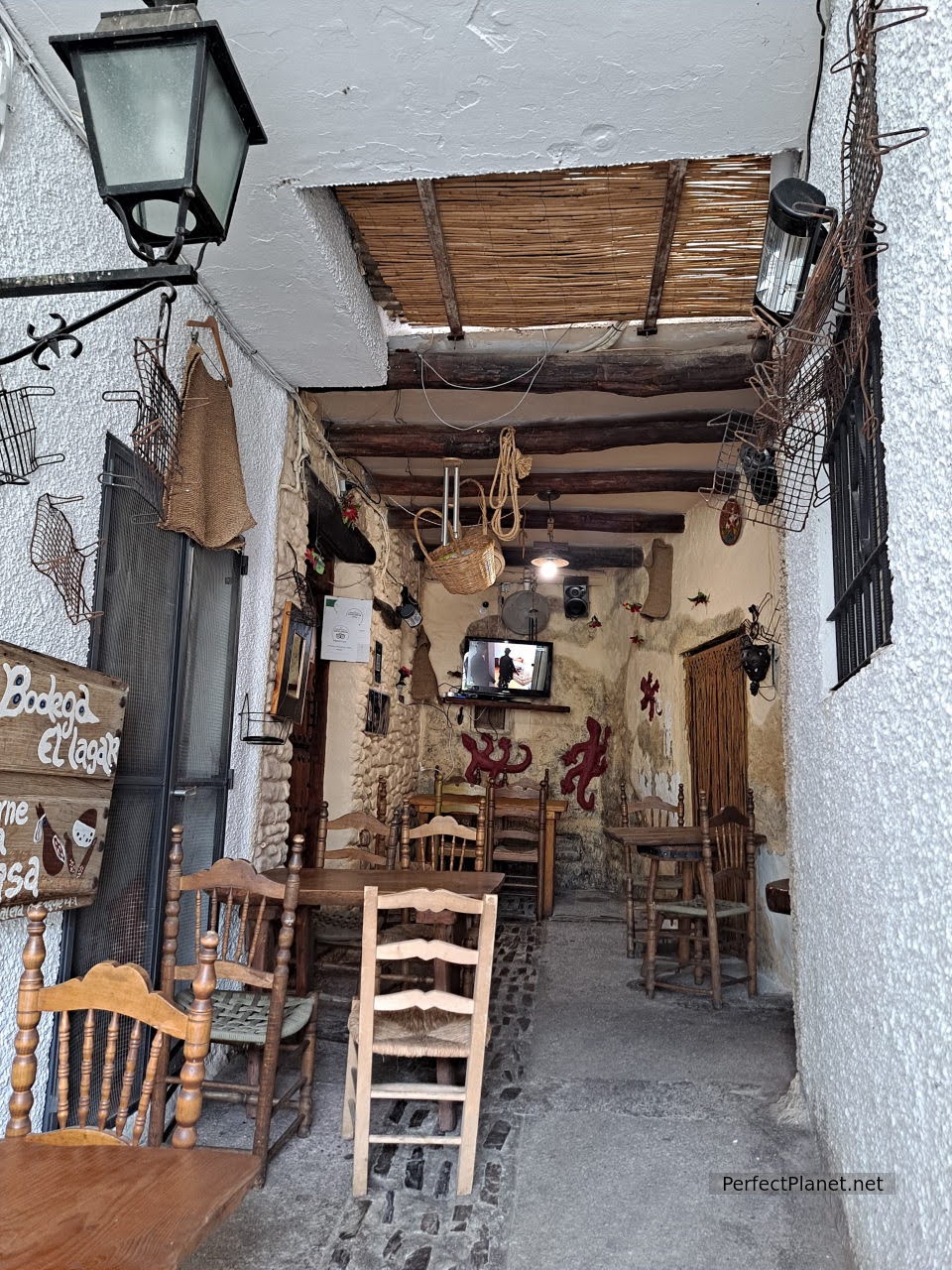
El Lagar restaurant
Another option to buy typical products at a very good price that we recommend is La Alpujarreña located in Aguila street. The service is exceptional, the girl who attends is a sweetheart. We buy our own products made in the region, oil, chocolate, ham, all delicious.
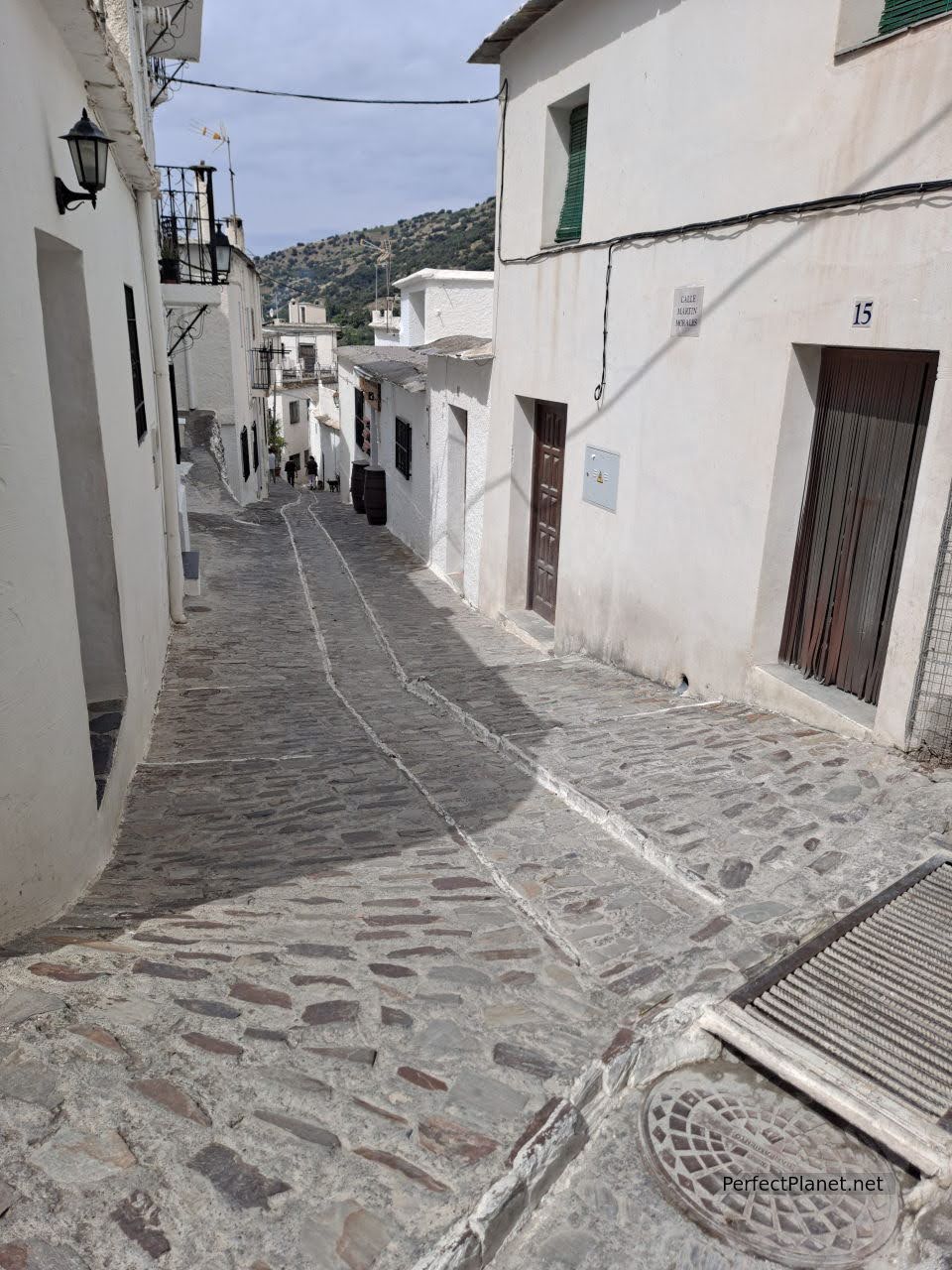
Pampaneiras streets
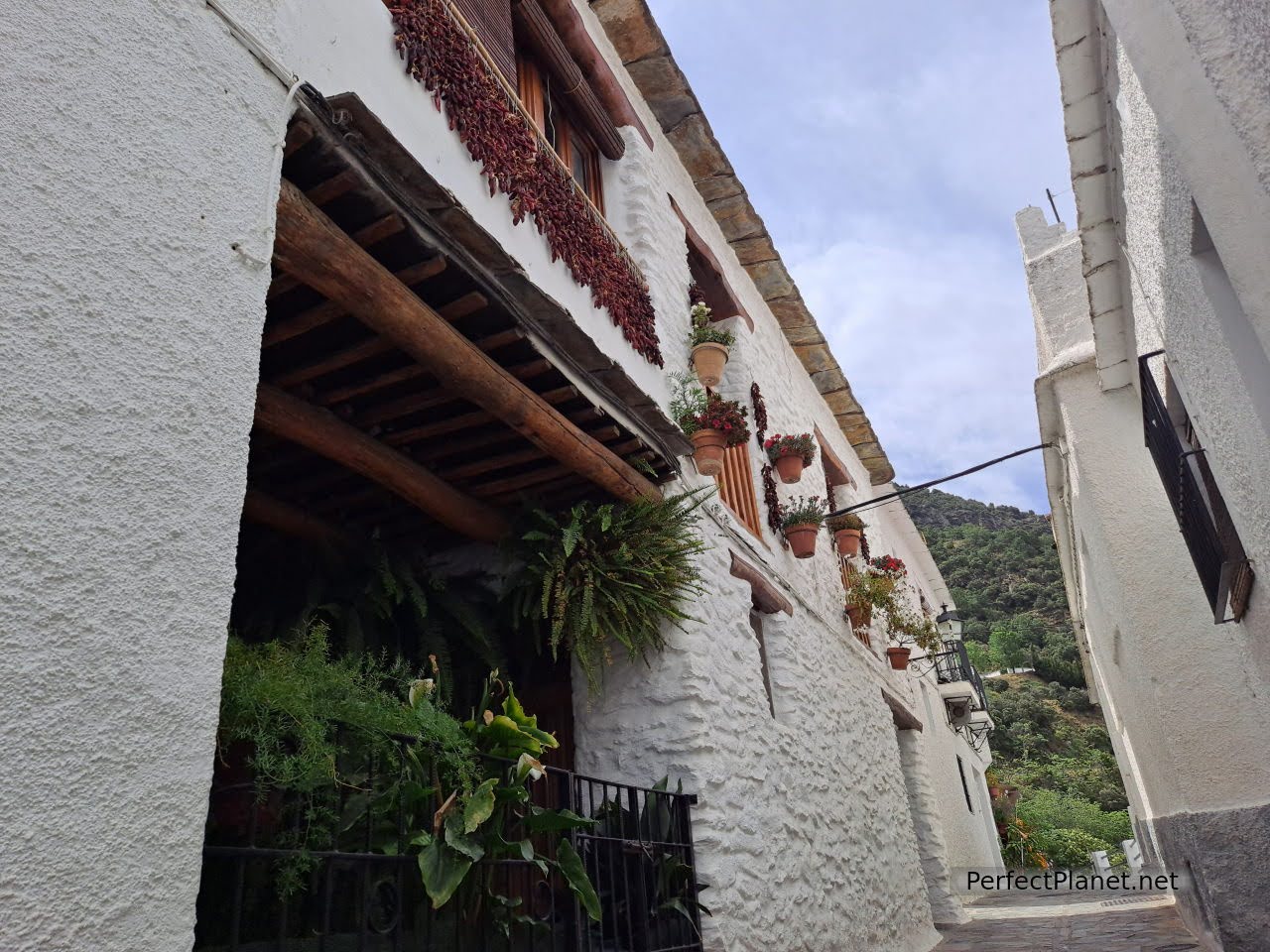
Pampaneiras streets
If you prefer to buy handicrafts or souvenirs in the shop Artesanía y Bodega Desakos you can find beautiful jarapas. They have an antique loom with which they work regularly.
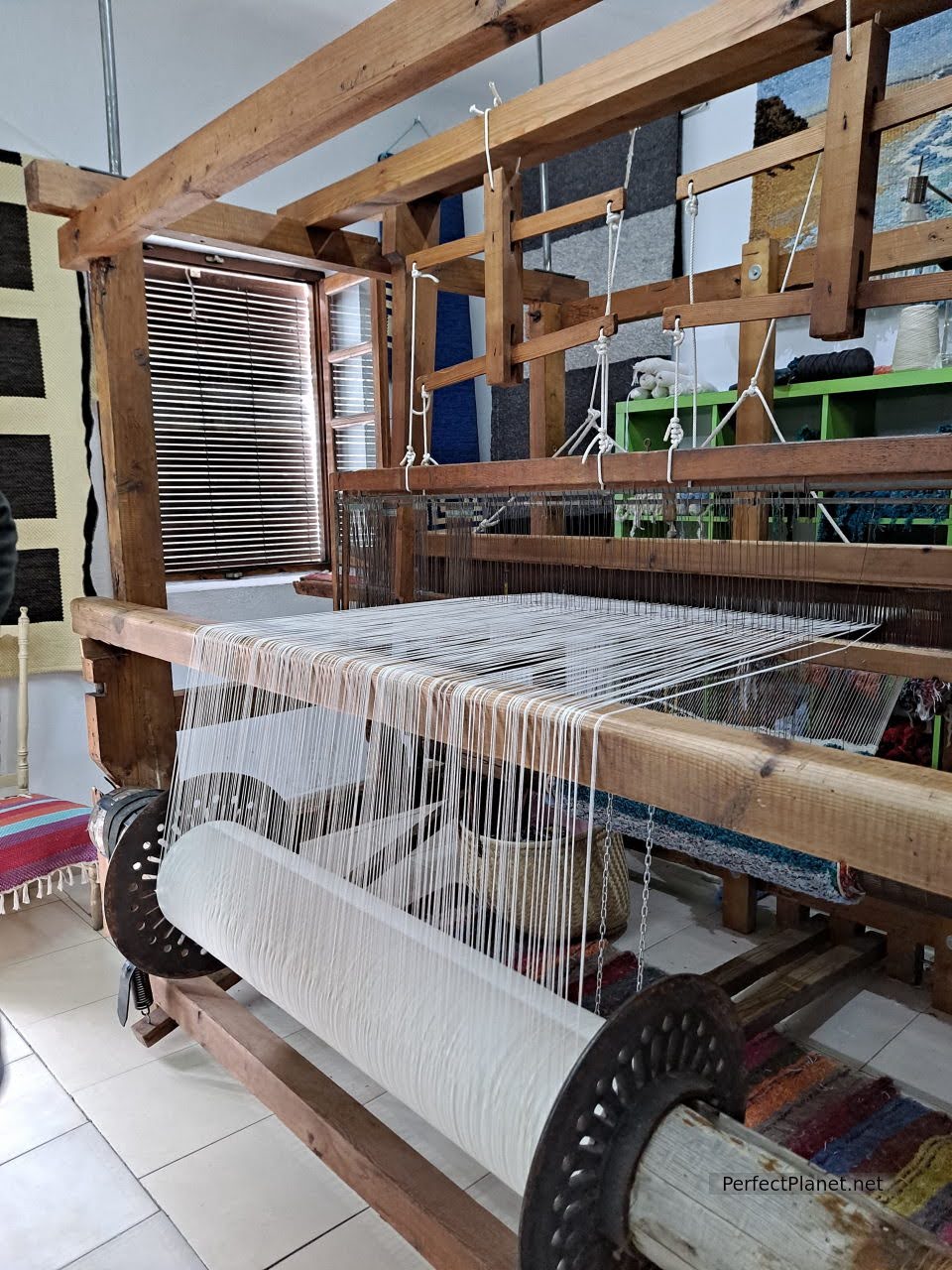
Loom
4. Soportújar
This village in the Alpujarras owes its name to the number of tinaos or arcades it has. Although it is more famous for being known as the village of the witches and the truth is that they have exploited it very well as it has become a kind of theme park very fun for the little ones and fans of magical stories or Harry Potter.
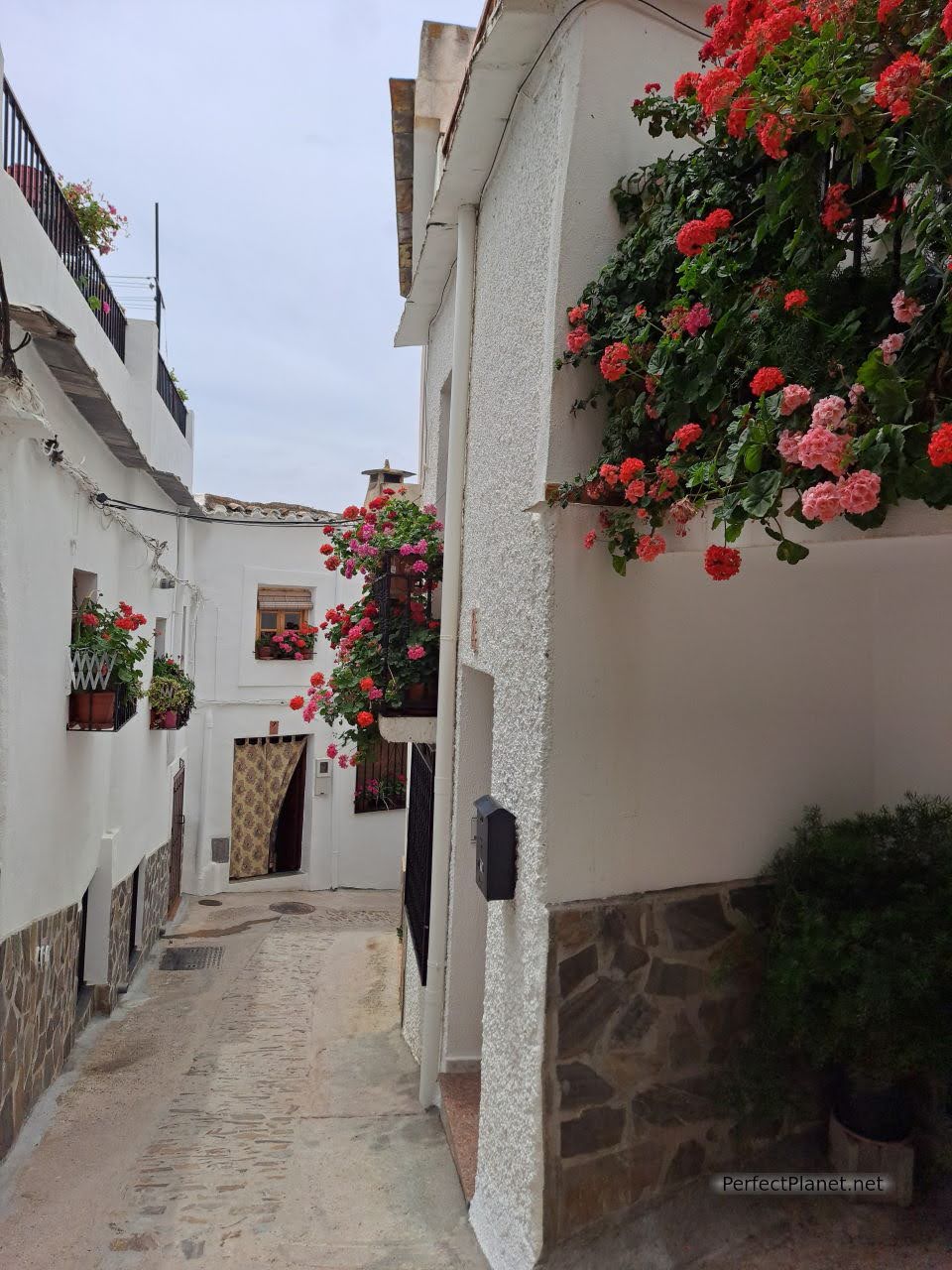
Soportújar
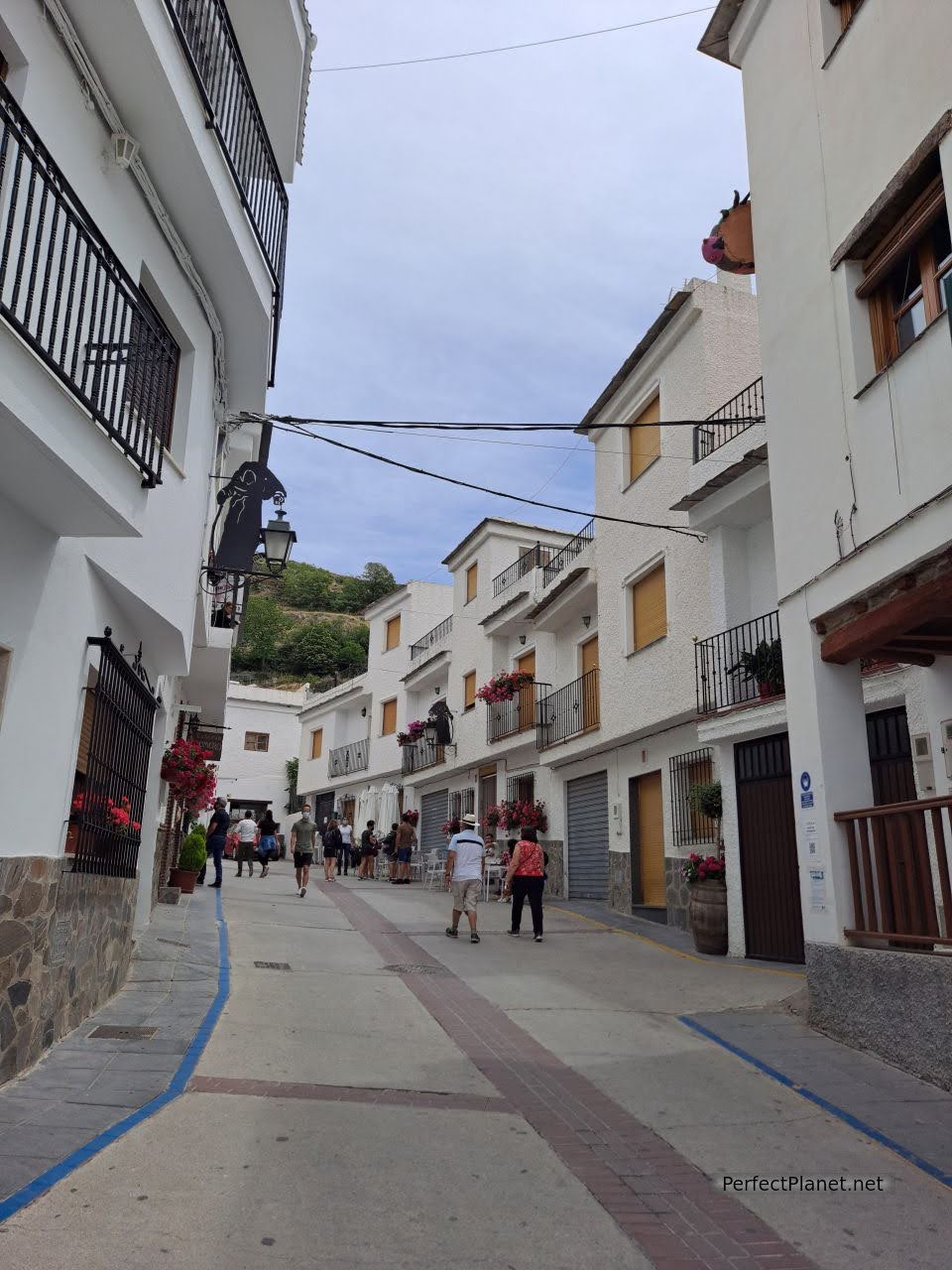
Soportújar
As we are told, after the rebellion of the Alpujarras Soportújar was practically empty and was repopulated with people from the north of the Peninsula, specifically Galician families who brought with them their customs and remedies. The inhabitants of the nearby villages began to speak of meigas and witches' sabbaths and began to accuse them of witchcraft, hence the origin of the legend.
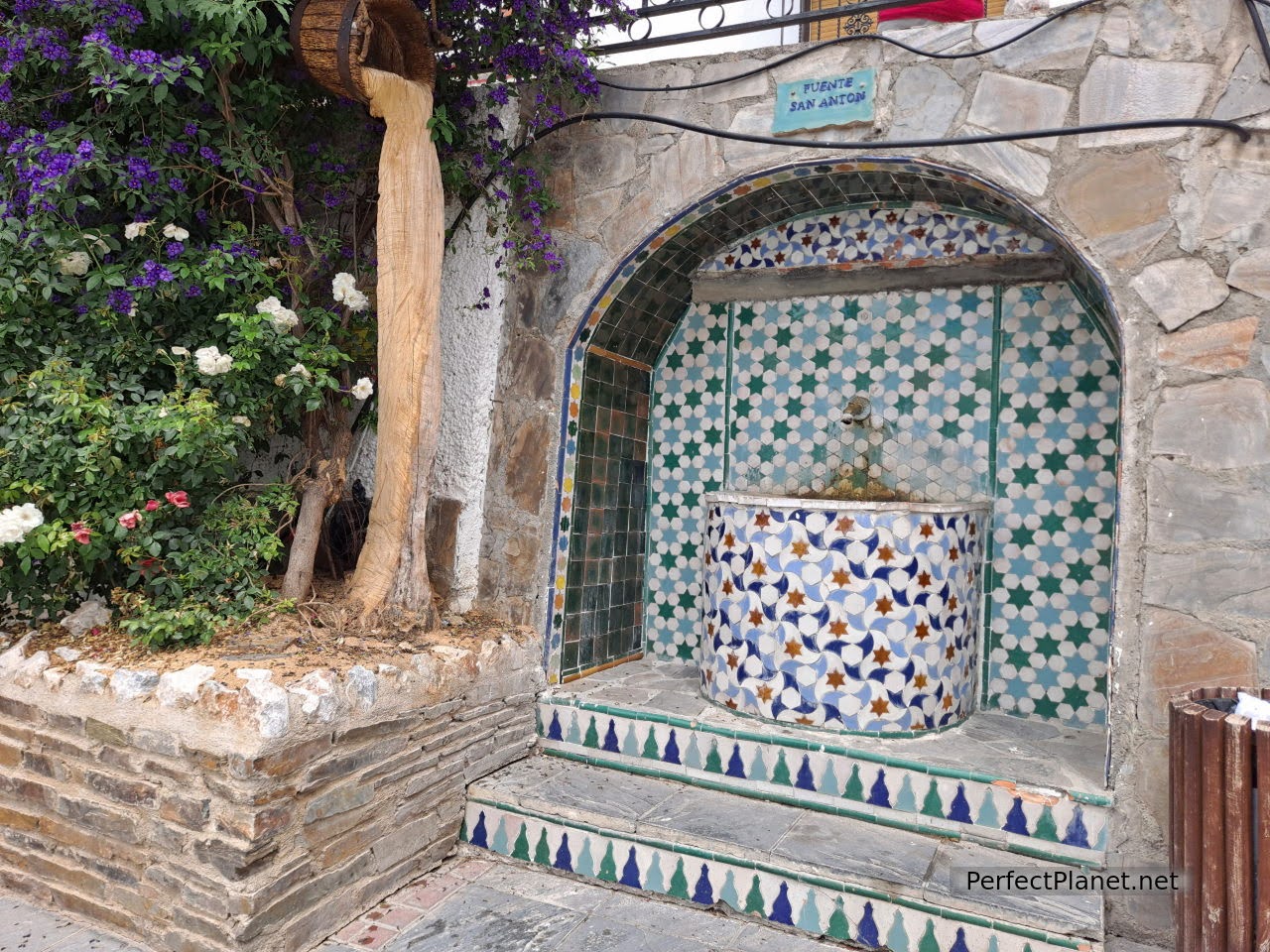
Fountain
What to see in Soportújar:
1. Fountain of the Witches and Embrujo Viewpoint
Located in the Abastos square, it offers beautiful views of the Alpujarra. In the same square you can find the Town Hall and the Church of Santa María la Mayor.
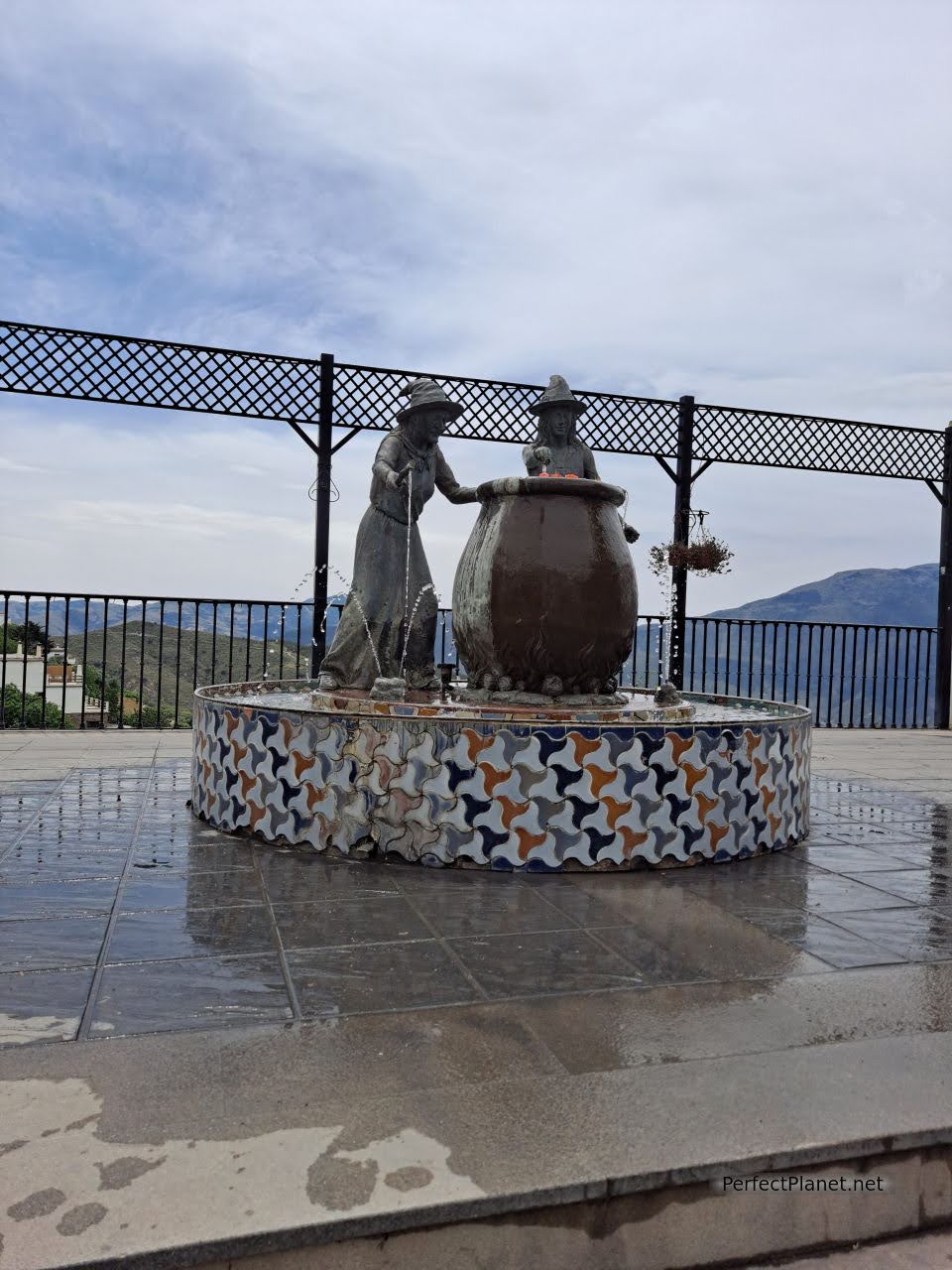
Fountain of the Witches and Embrujo Viewpoint
2. The Wishing Well
Look out if you dare! Next to it is one of the narrowest streets in Spain, Zanjilla street.
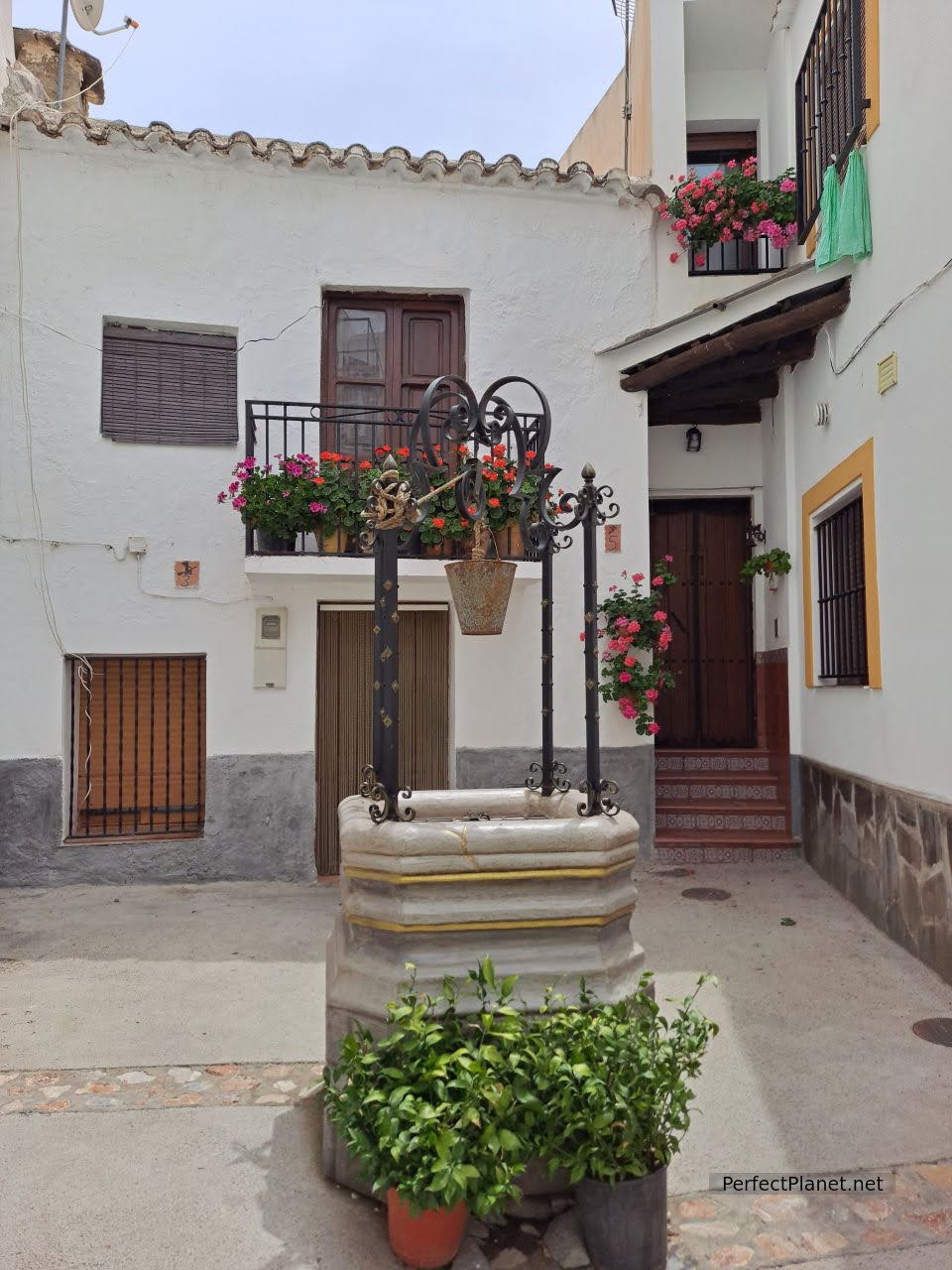
The Wishing Well
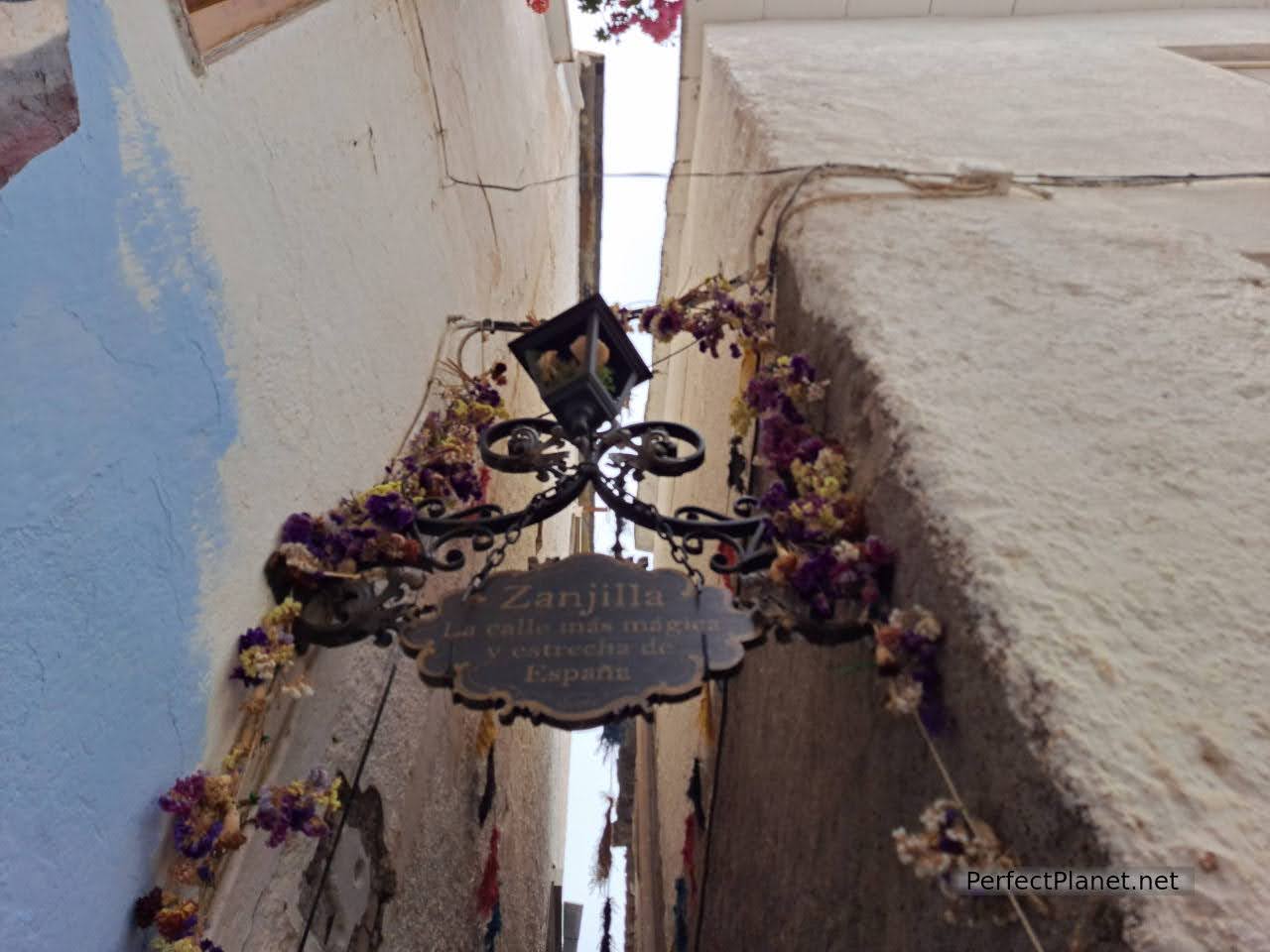
Zanjilla street
3. The source of the dragon
Its waters are said to stimulate fertility.
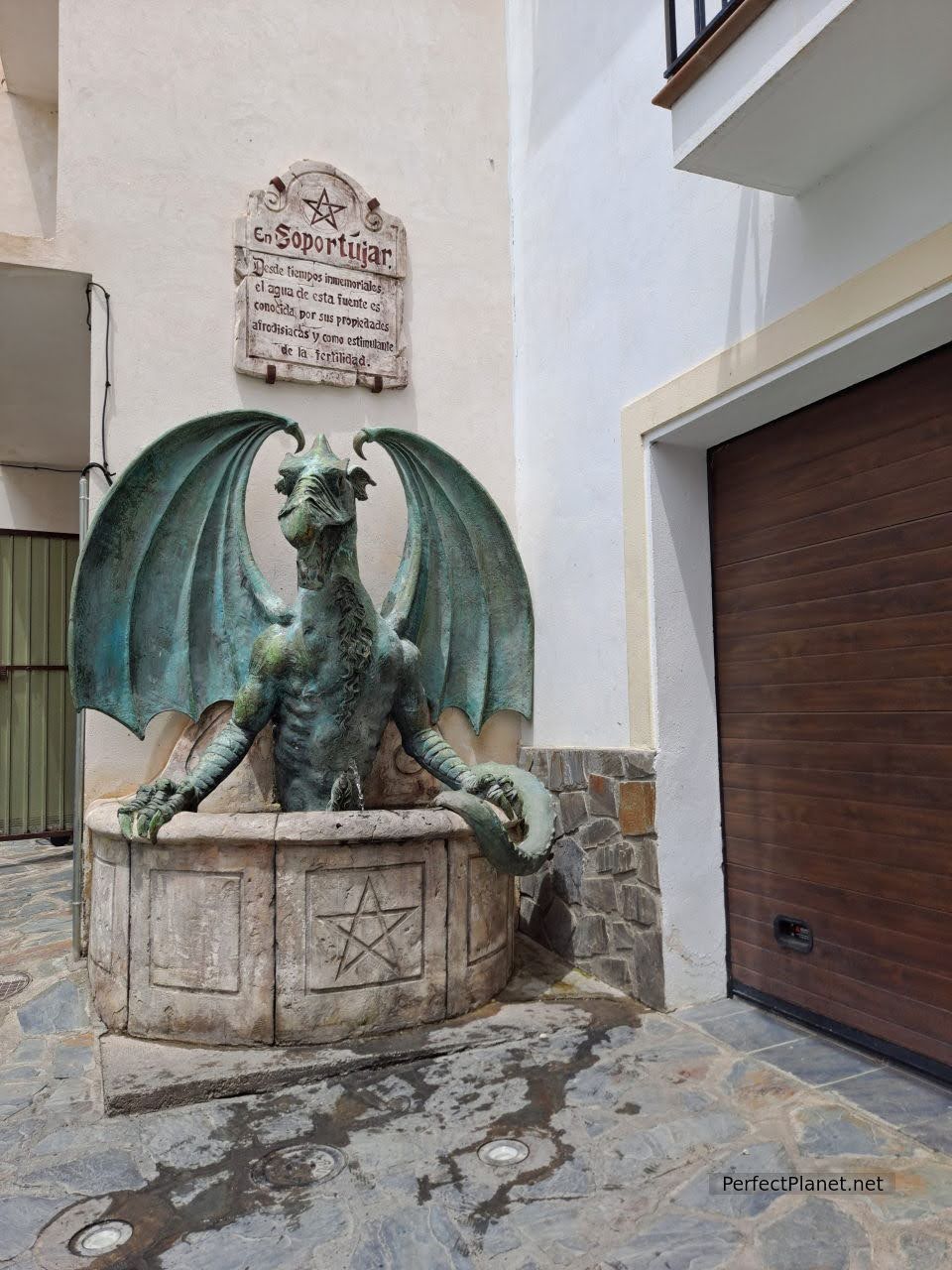
The source of the dragon
4. Snake
Crossing a tinao.
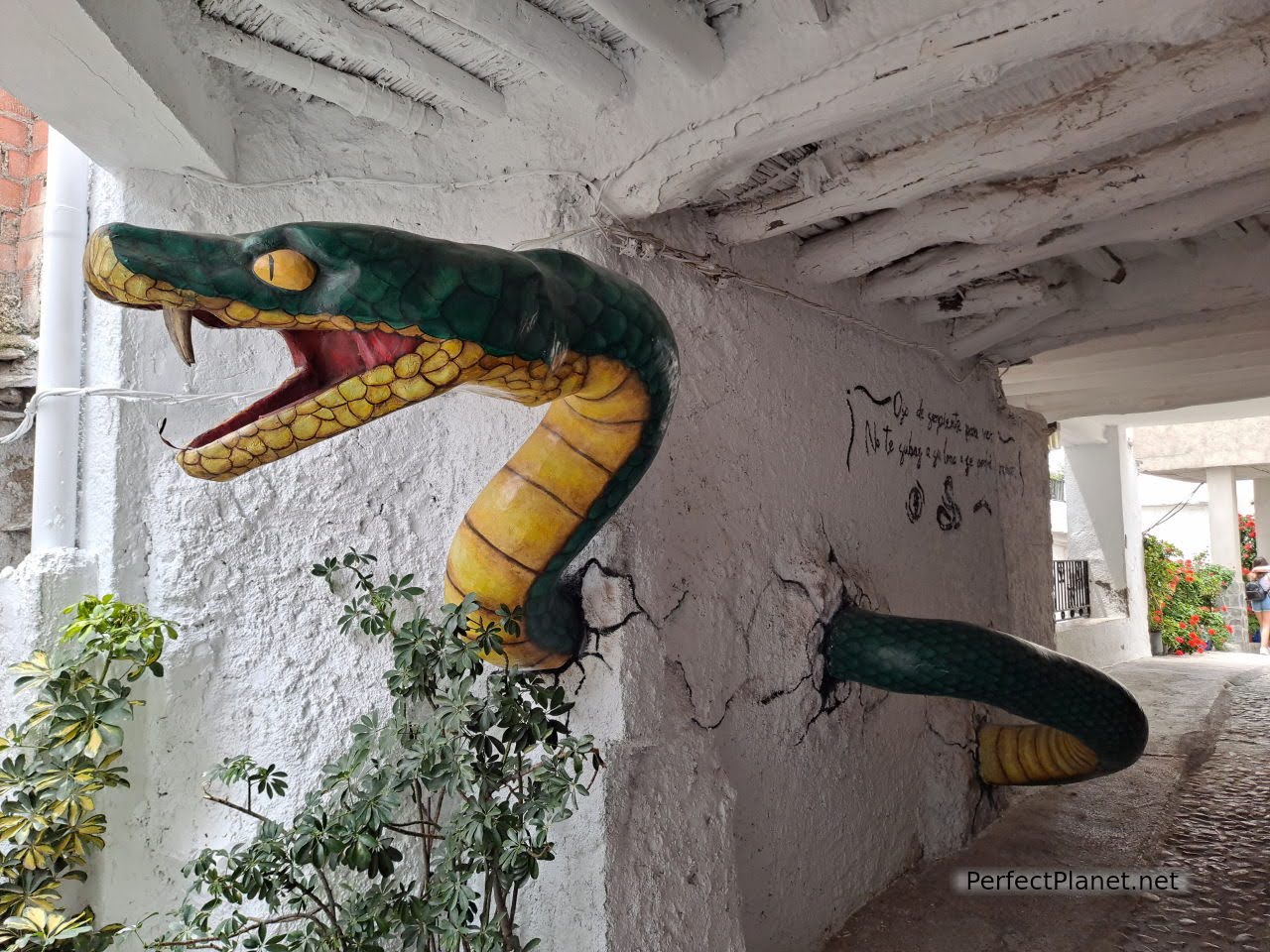
Snake
5. The House of Baba Yaga
A house with chicken legs.
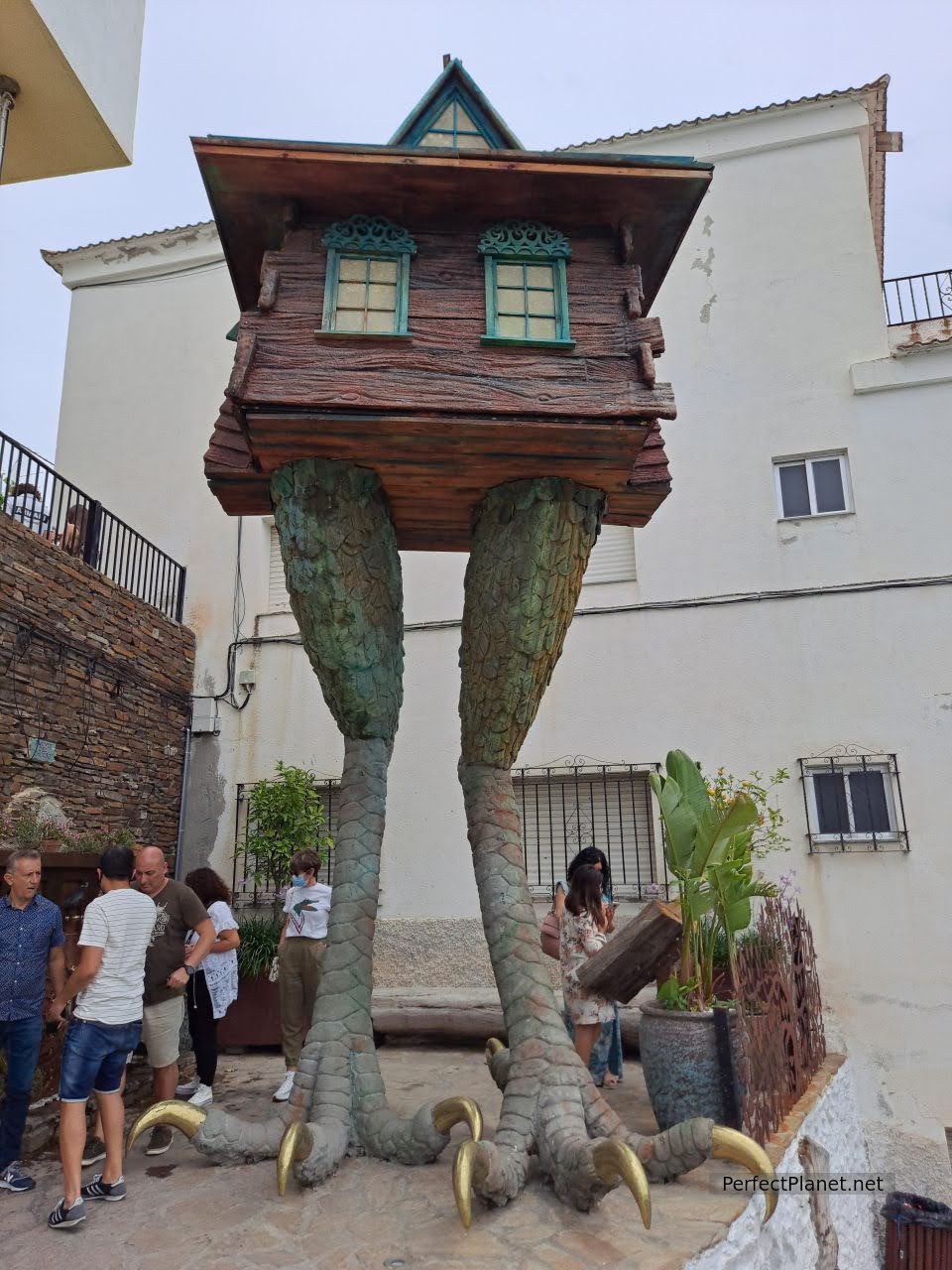
The House of Baba Yaga
6. The Stacked Cauldrons
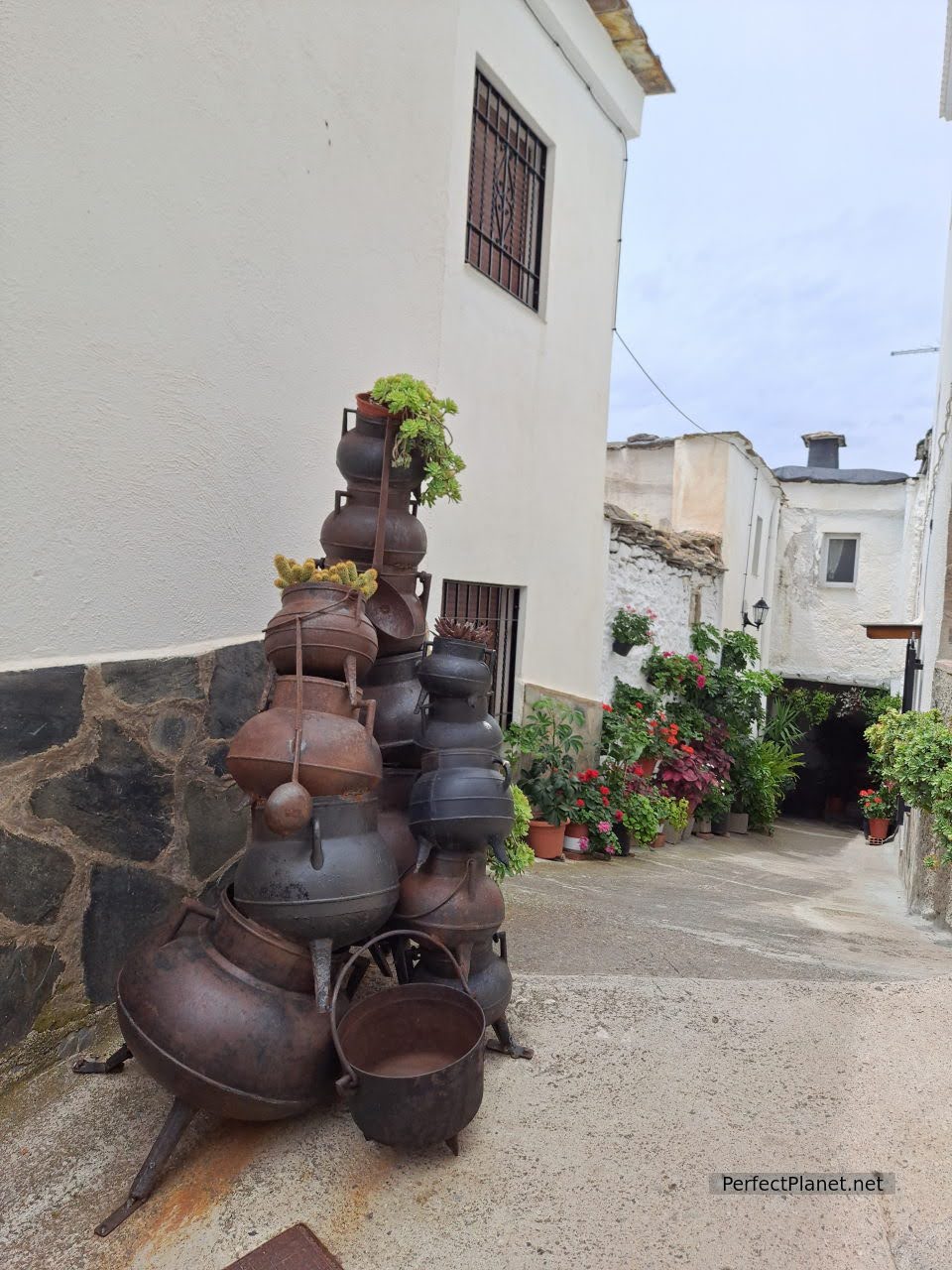
The Stacked Cauldrons
7. The spider on the wall
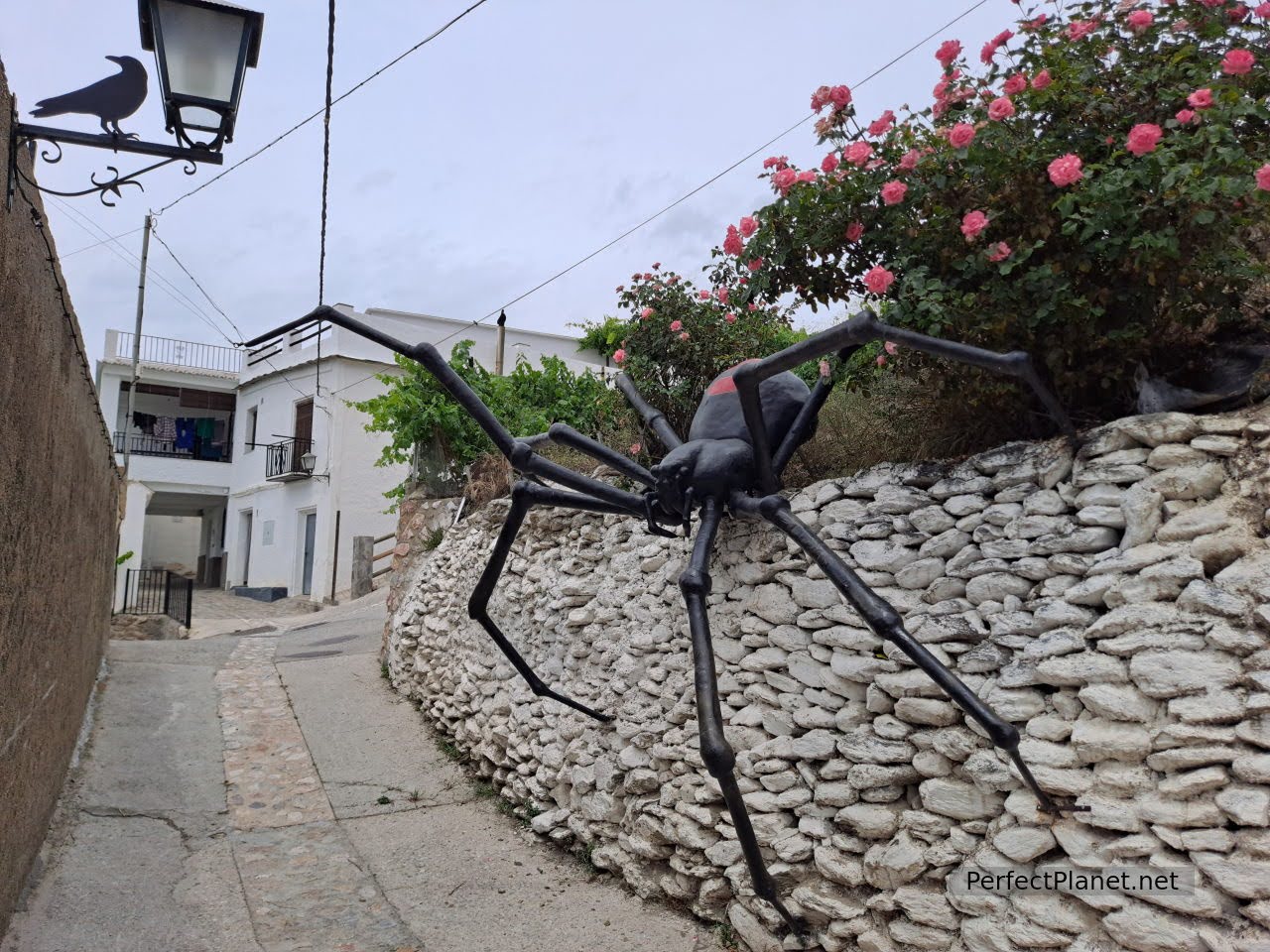
The spider on the wall
8. Hansel and Gretel's house
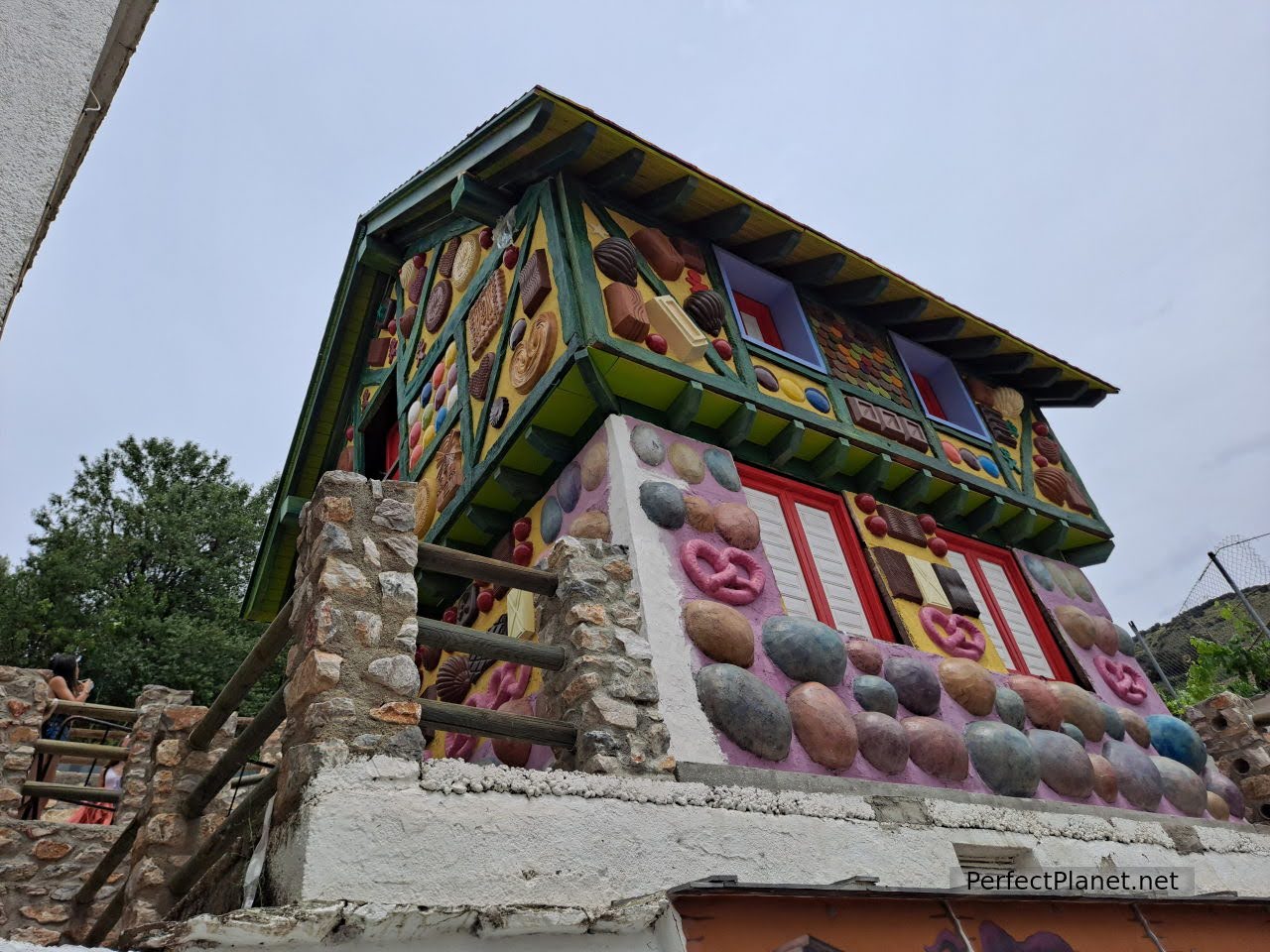
Hansel and Gretel's house
9. The Era dof Aquelarre
A viewpoint with impressive views.
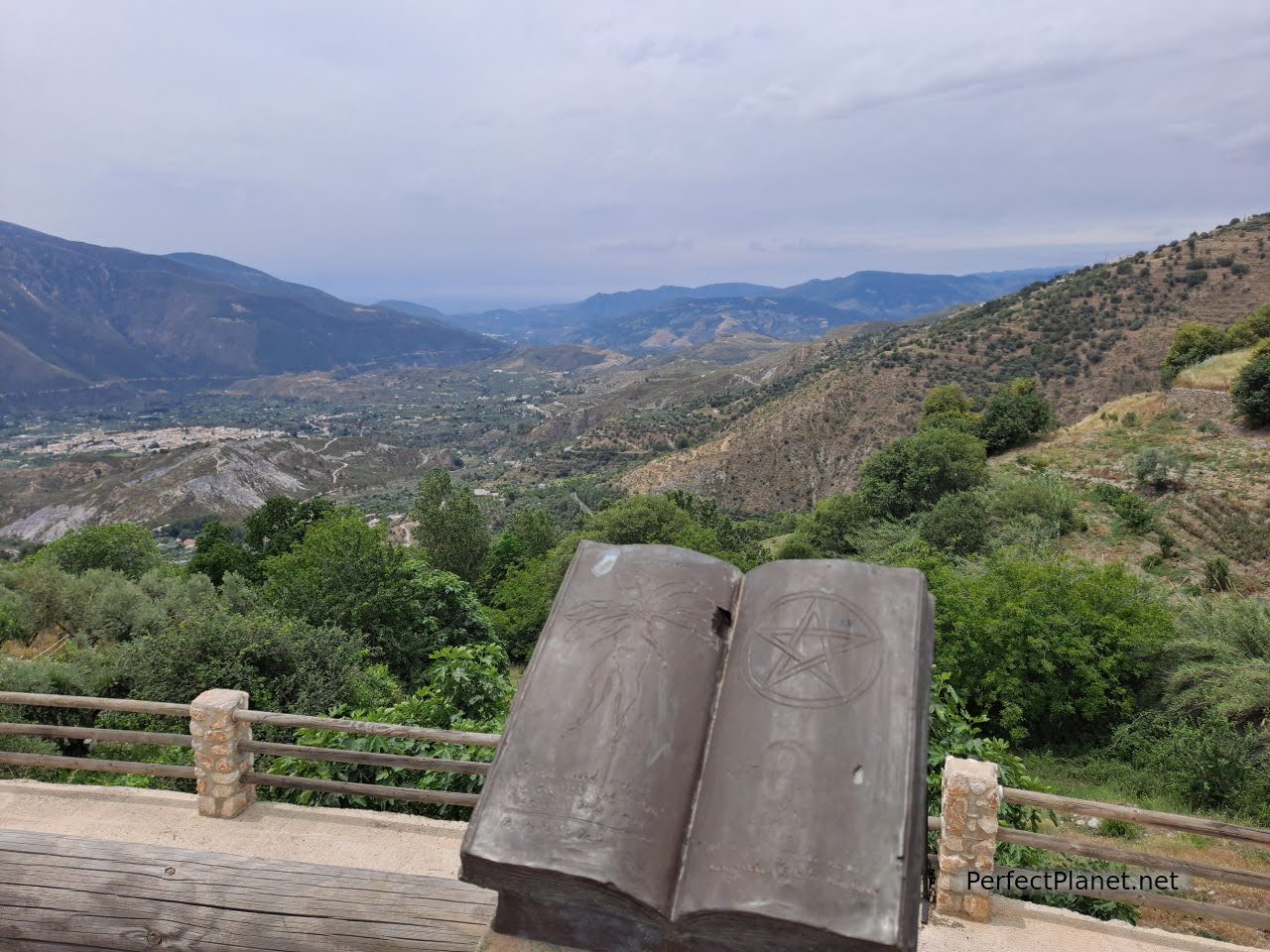
The Era of Aquelarre
10. The Magic Broom
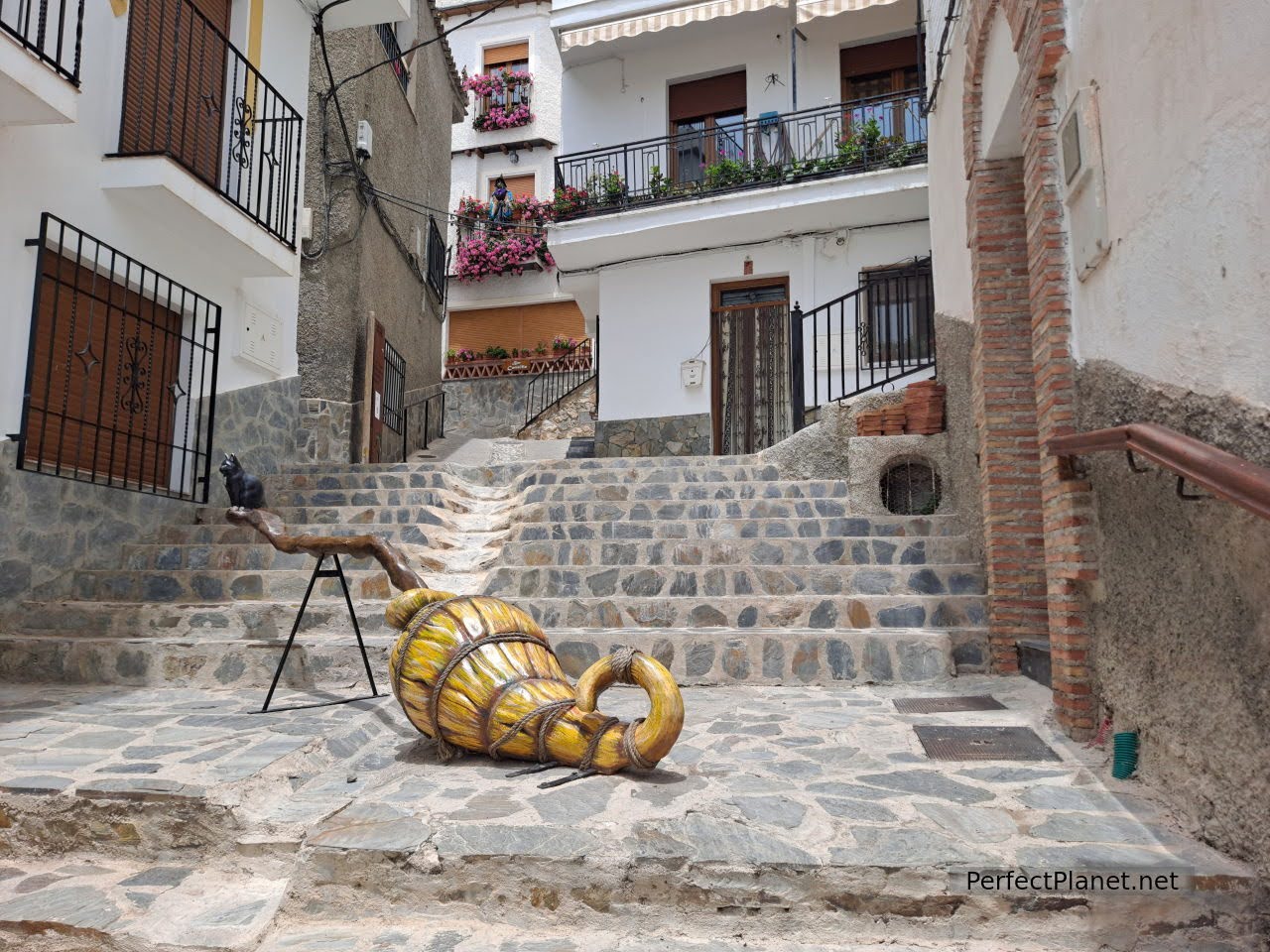
The Magic Broom
Don't forget to look at the façades of the houses, you can find cats, dragonflies and even starry witches.
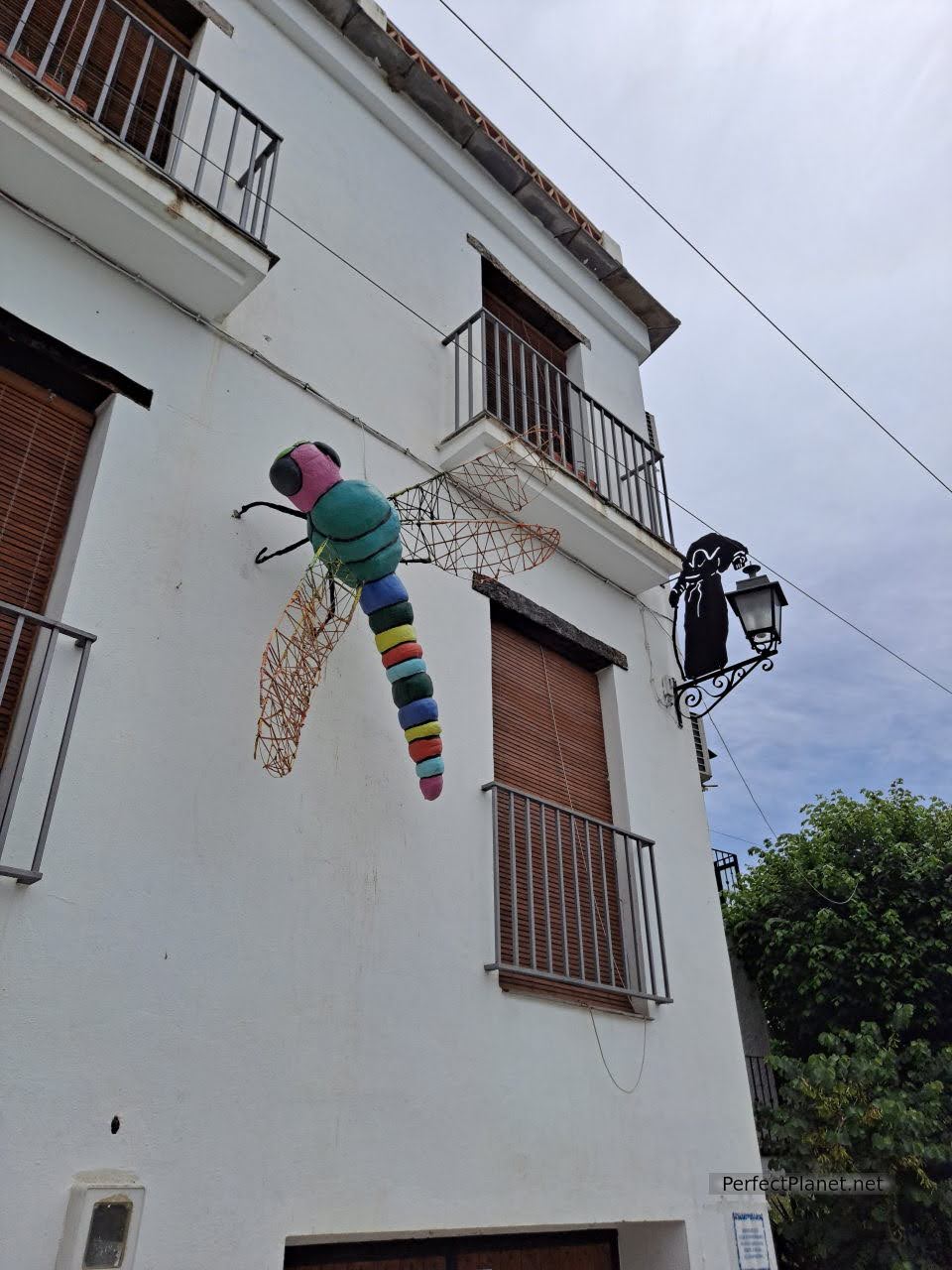
Dragonfly
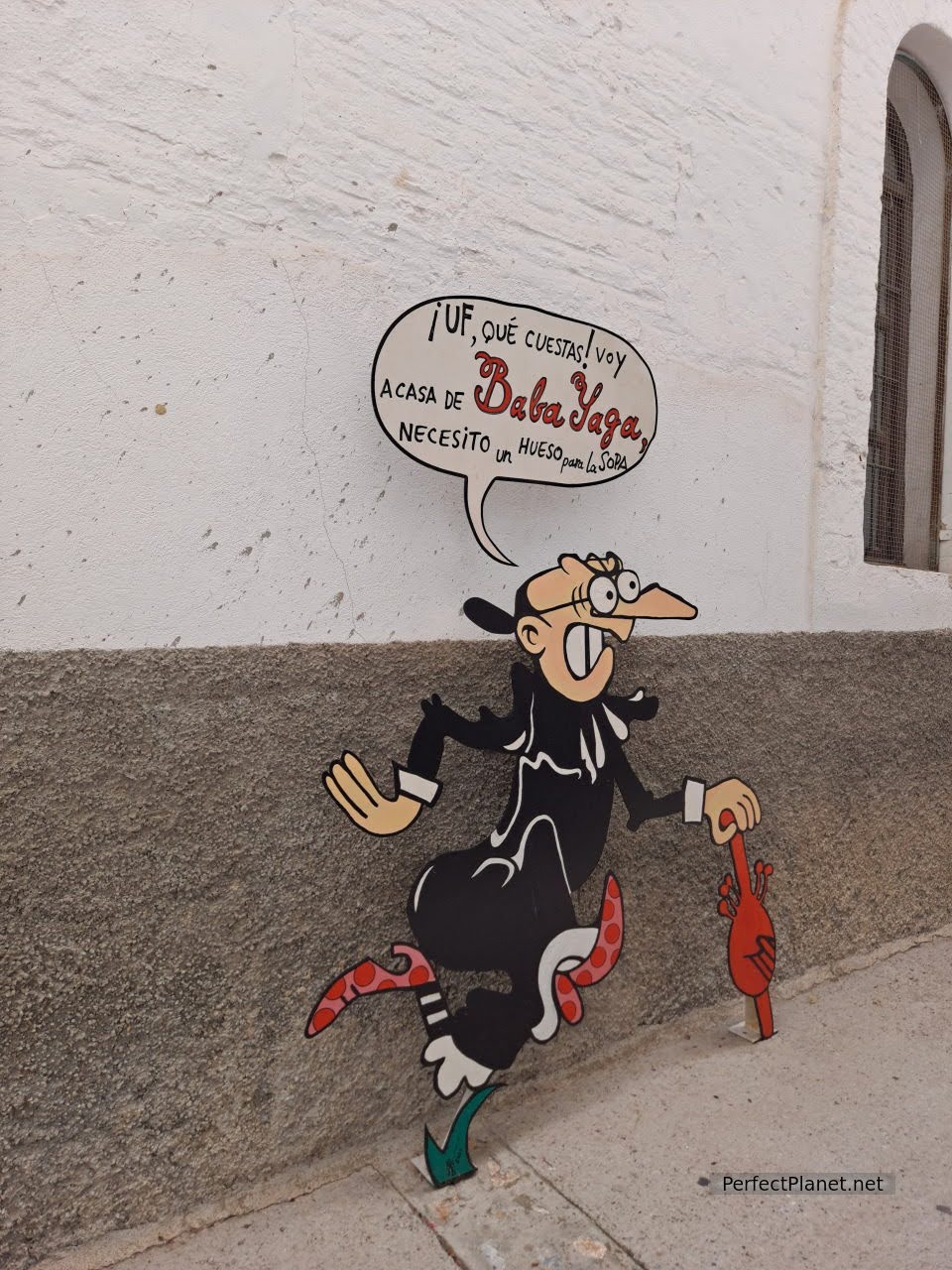
Soportújar
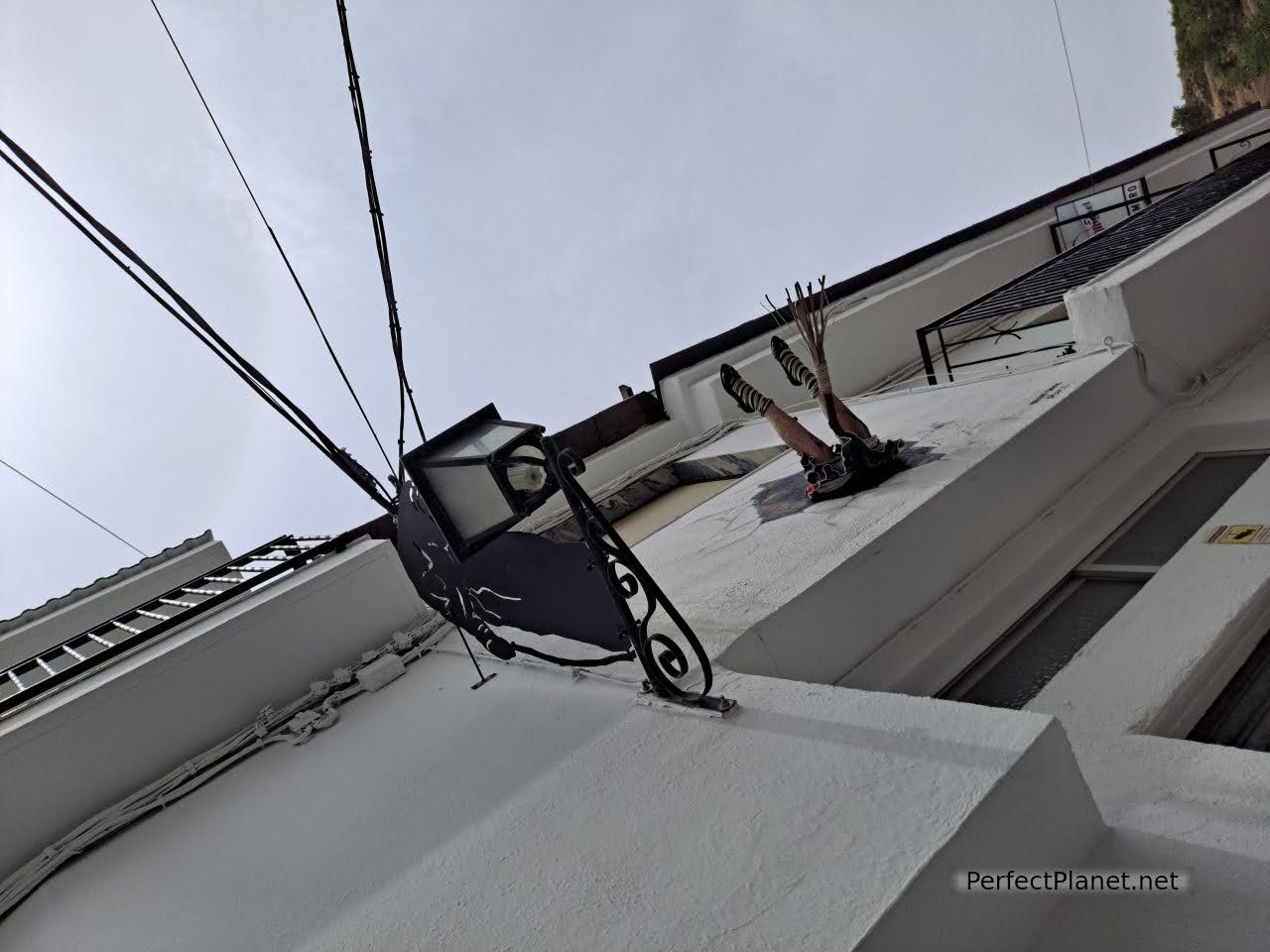
Soportújar
On the outskirts of Soportújar you have to visit the Giant Head of Baba Yaga and the Cave of the Witch's Eye and the magic bridge. Entrance to the cave is 50 euro cents per person.
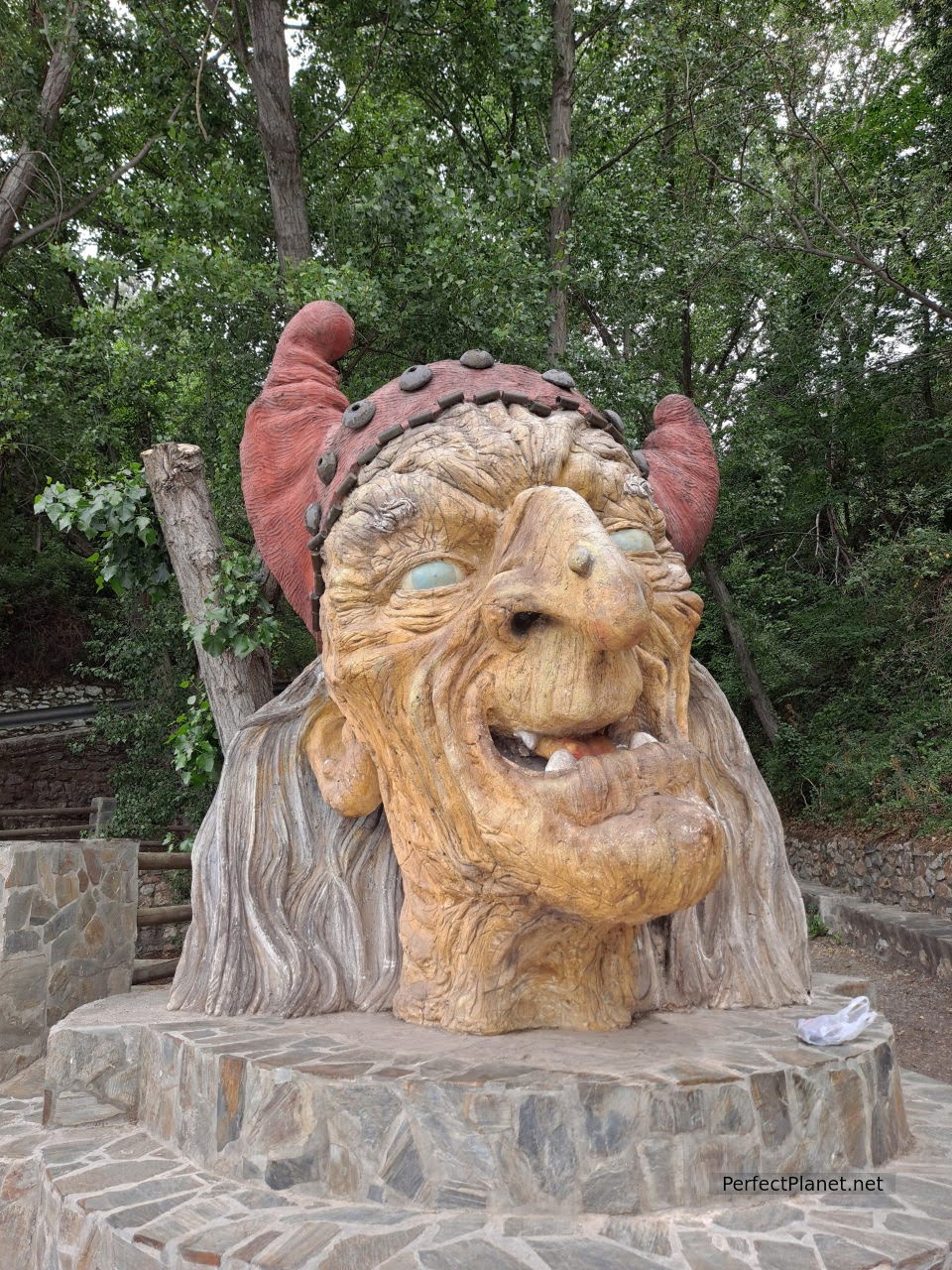
Giant Head of Baba Yaga
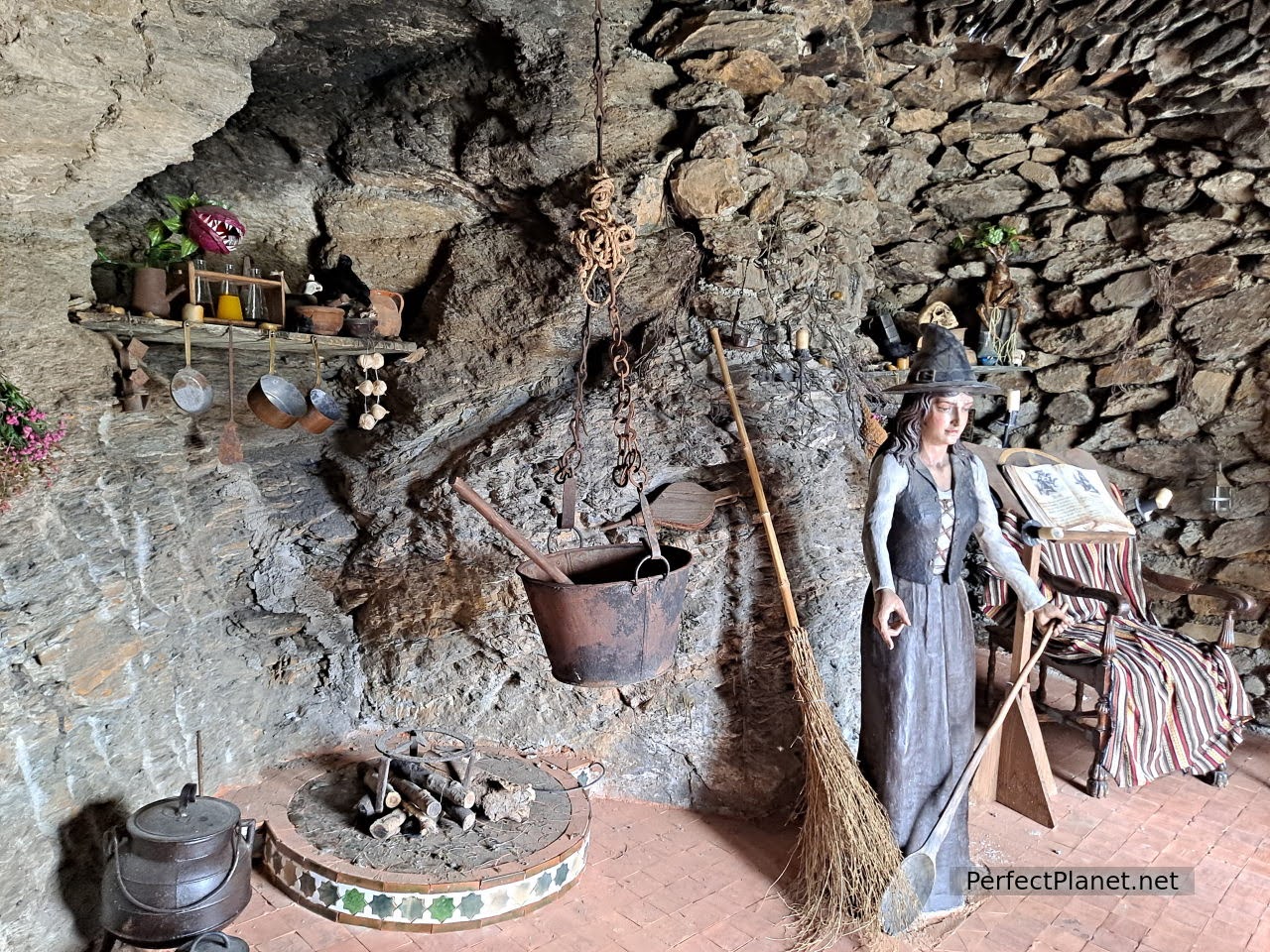
Cave of the Witch's Eye
Parking. There are two public car parks in Soportújar, one of which is pay parking. There is not a lot of parking so if you want to visit the town, get up early.
Bars and restaurants. There are currently two restaurants and two bars open. We recommend Taberna Romero. It is always best to book.
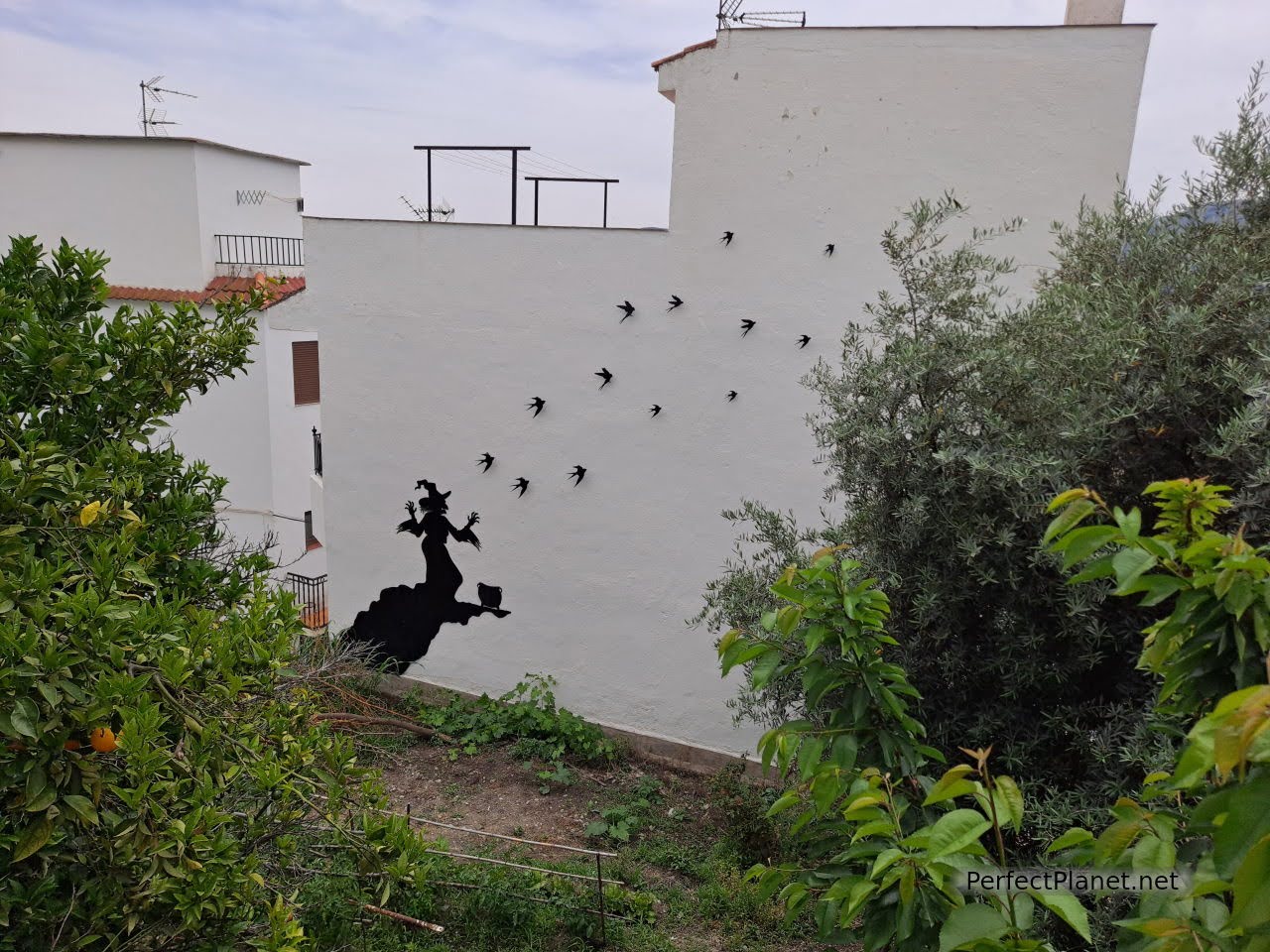
Soportújar
5. Órgiva
Órgiva is the capital of the western Alpujarra and as such has a multitude of services and life.
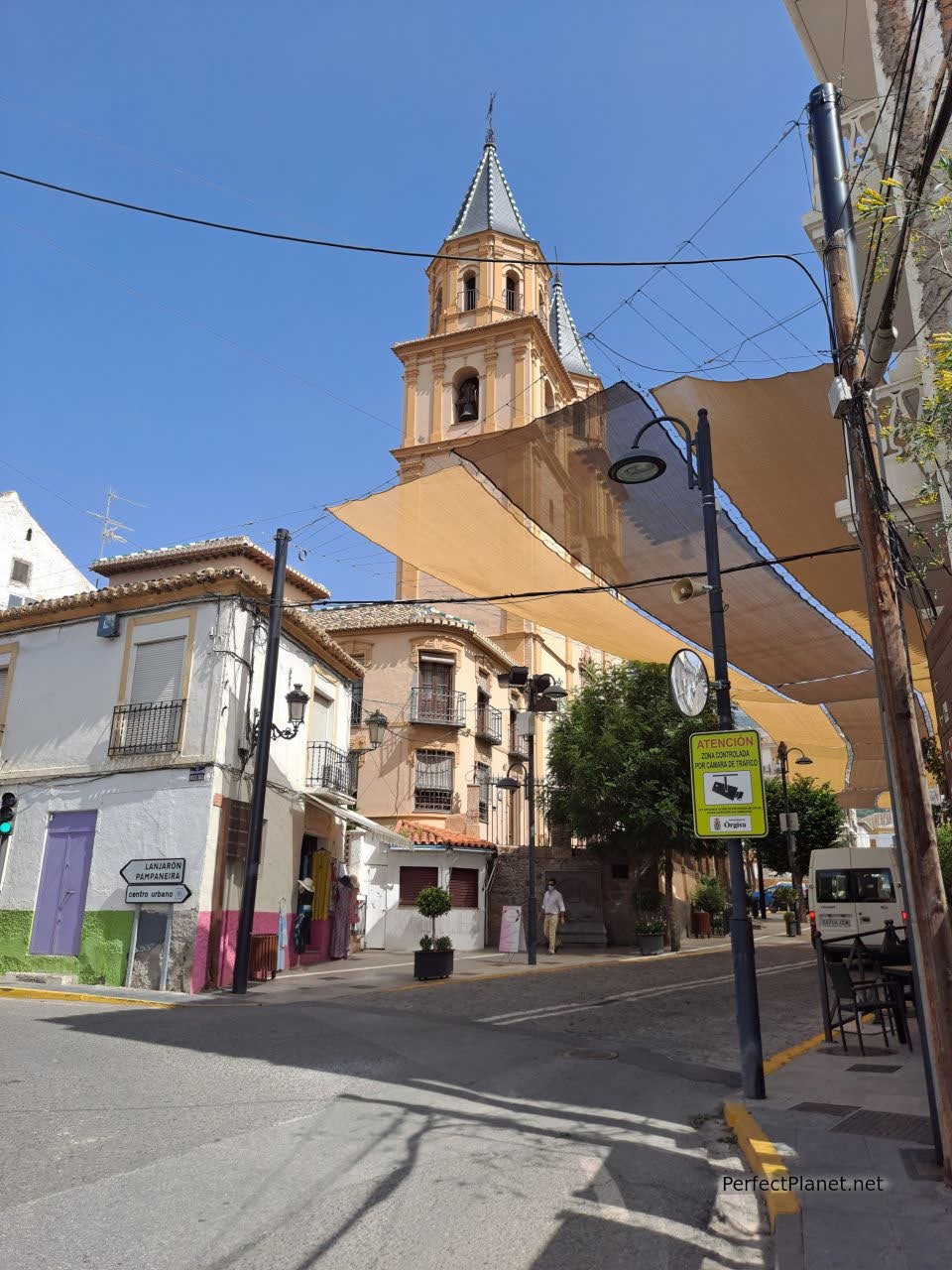
Expectacion Church
In its historic centre you will find the Church of Nuestra Señora de la Expectación, the House Palace of Condes de Sástago and the Hurtado de Mendoza library where you can find a large collection of Quijotes in more than fifty languages.
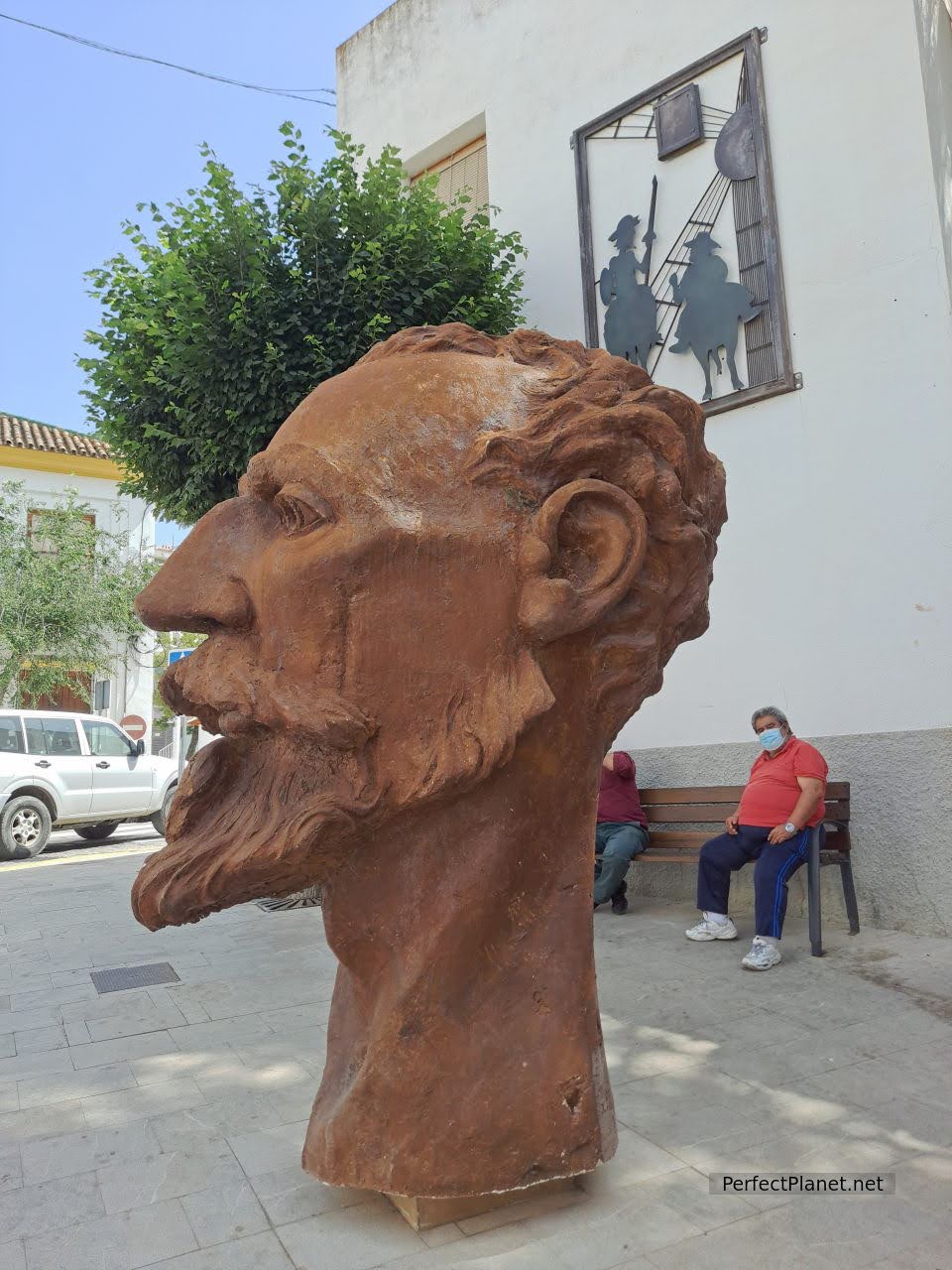
Cervantes
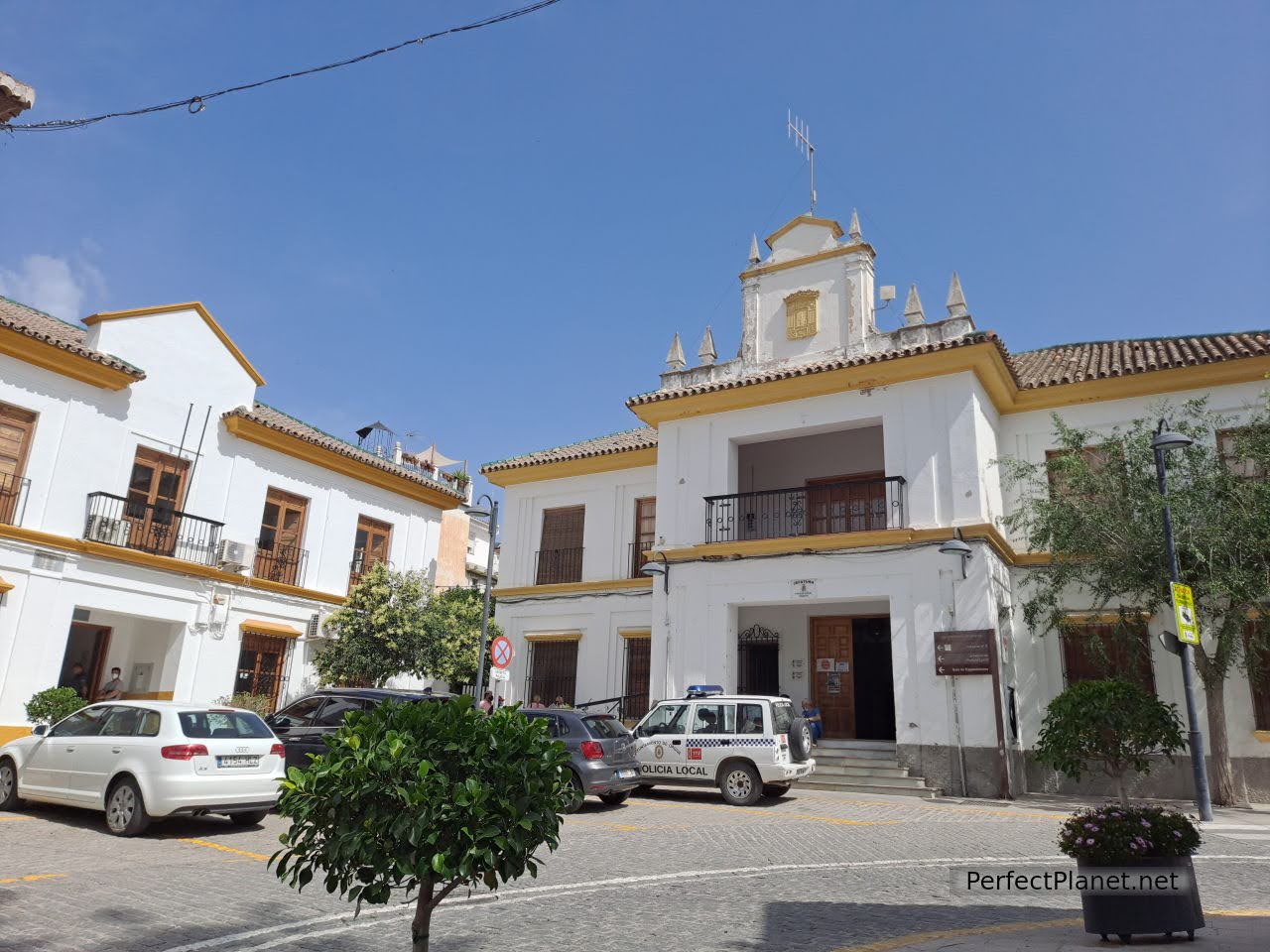
Council
If you are passing through, the Tahona de los Galindos is perfect for breakfast, delicious sweets and bread.
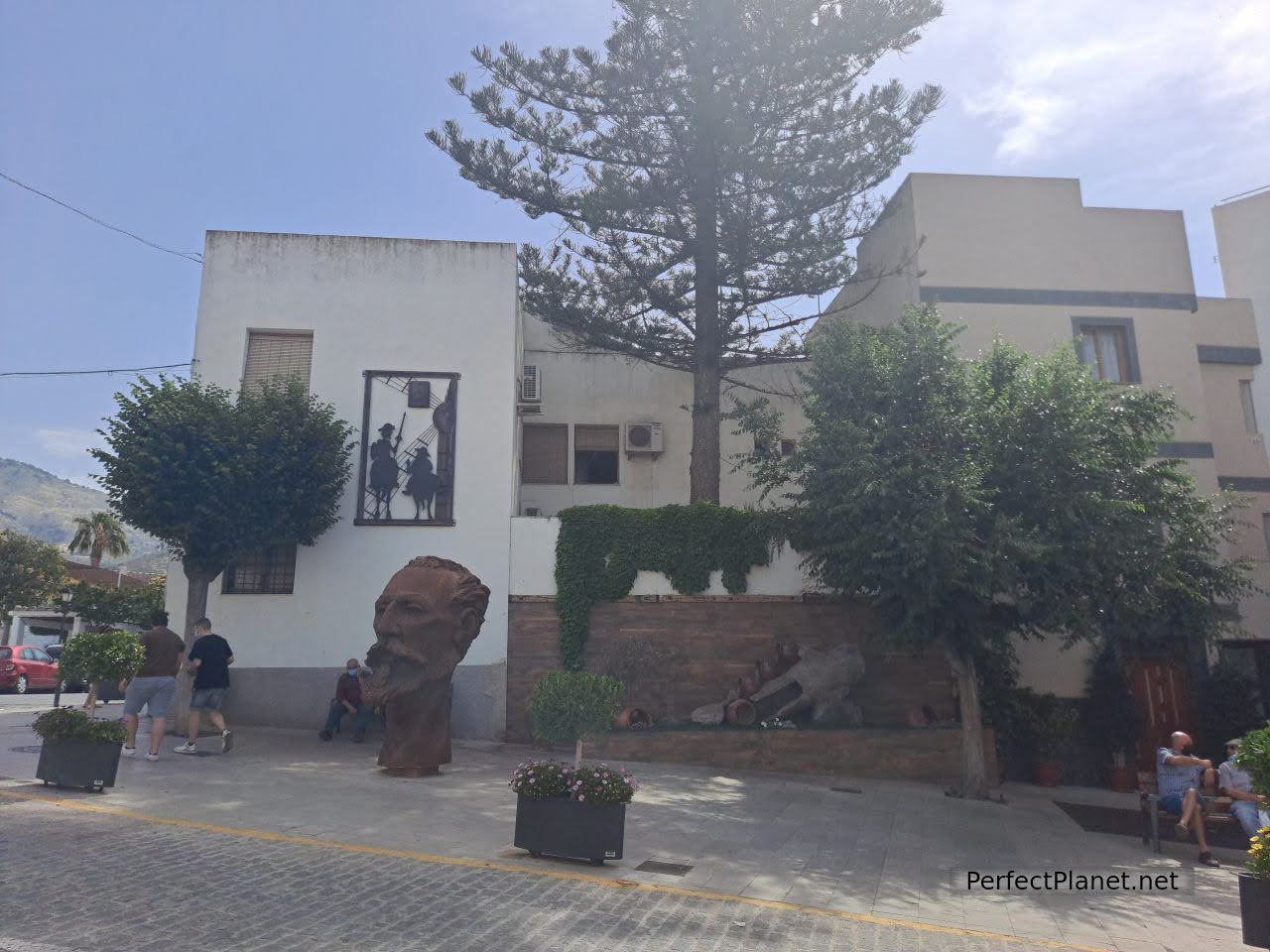
Library
In the restaurant of the Puerta de la Alpujarra Campsite, menus and tapas at good prices.
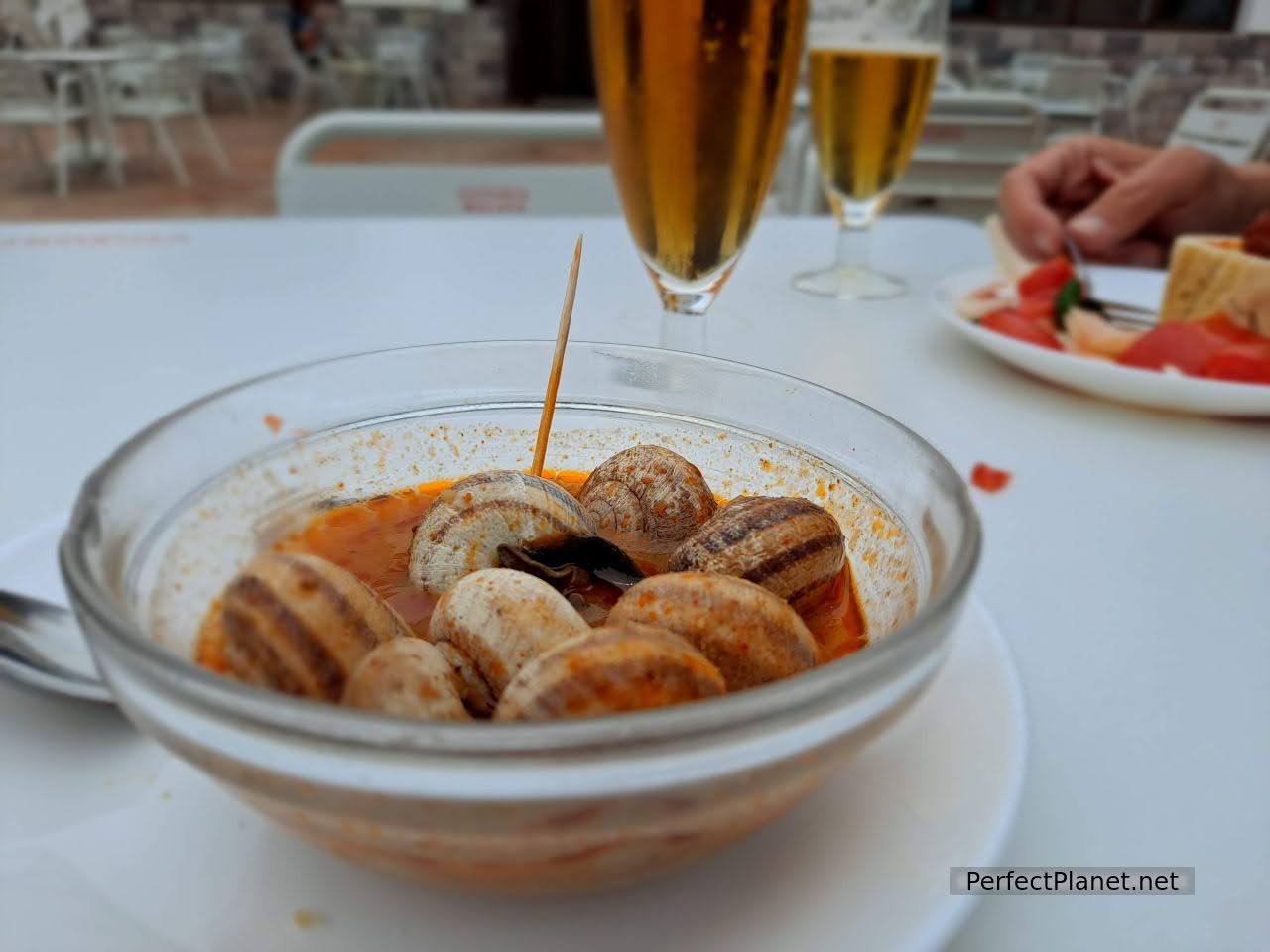
Snails tapa
6. Lanjarón
Known for its hot springs, Lanjarón is one of the largest towns in the Alpujarra region. The most outstanding features are the Moorish castle and the Hondillo quarter.
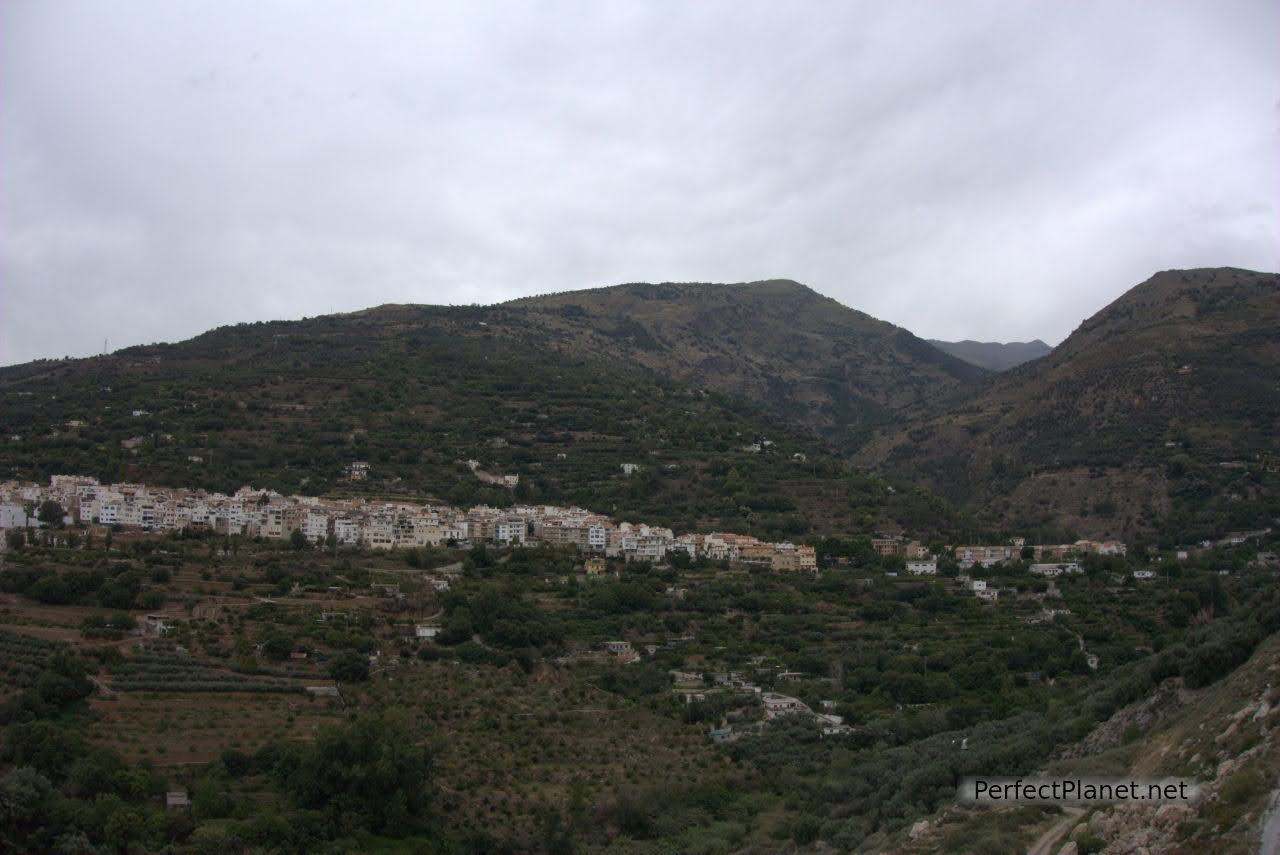
Lanjarón from Visillo viewpoint
From the Visillo viewpoint you have exceptional views of the town.
7. Acequias de careo
This ancient irrigation network is considered one of the oldest in Europe. Together with the irrigation ditches, the irrigation channels stand out because they are located in the High Mountains. Thanks to them, the water that comes from the thawing is filtered and fills the aquifers.
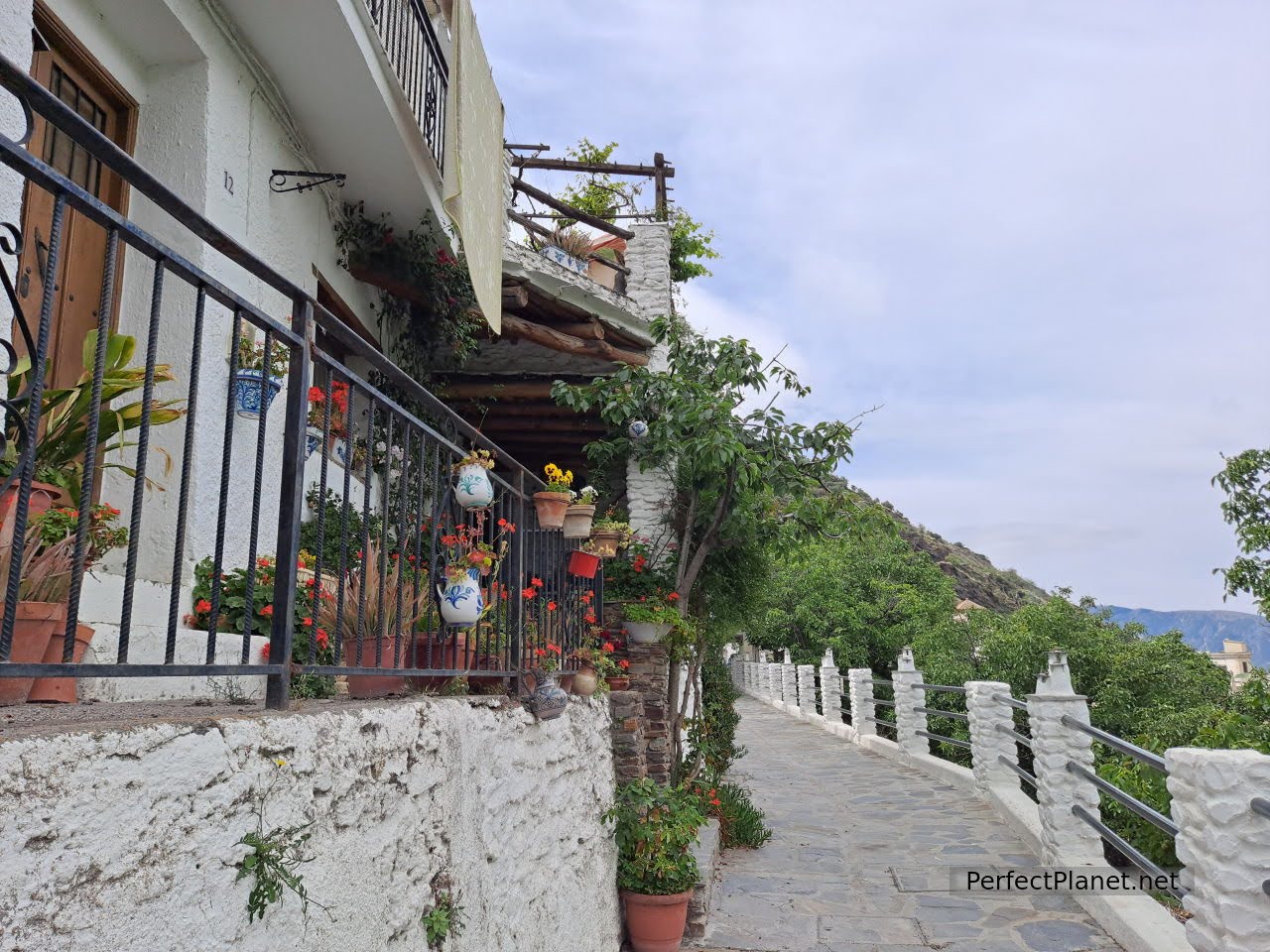
Alpujarra
This irrigation system has been abandoned due to the rural exodus, but fortunately it is being recovered. It is an artisanal work that is passed on from generation to generation, preventing the desertification of the area.
The RTVE 2 programme El Escarabajo Verde (The Green Beetle) in the chapter Sembrando Agua is fascinating. Don't miss it.
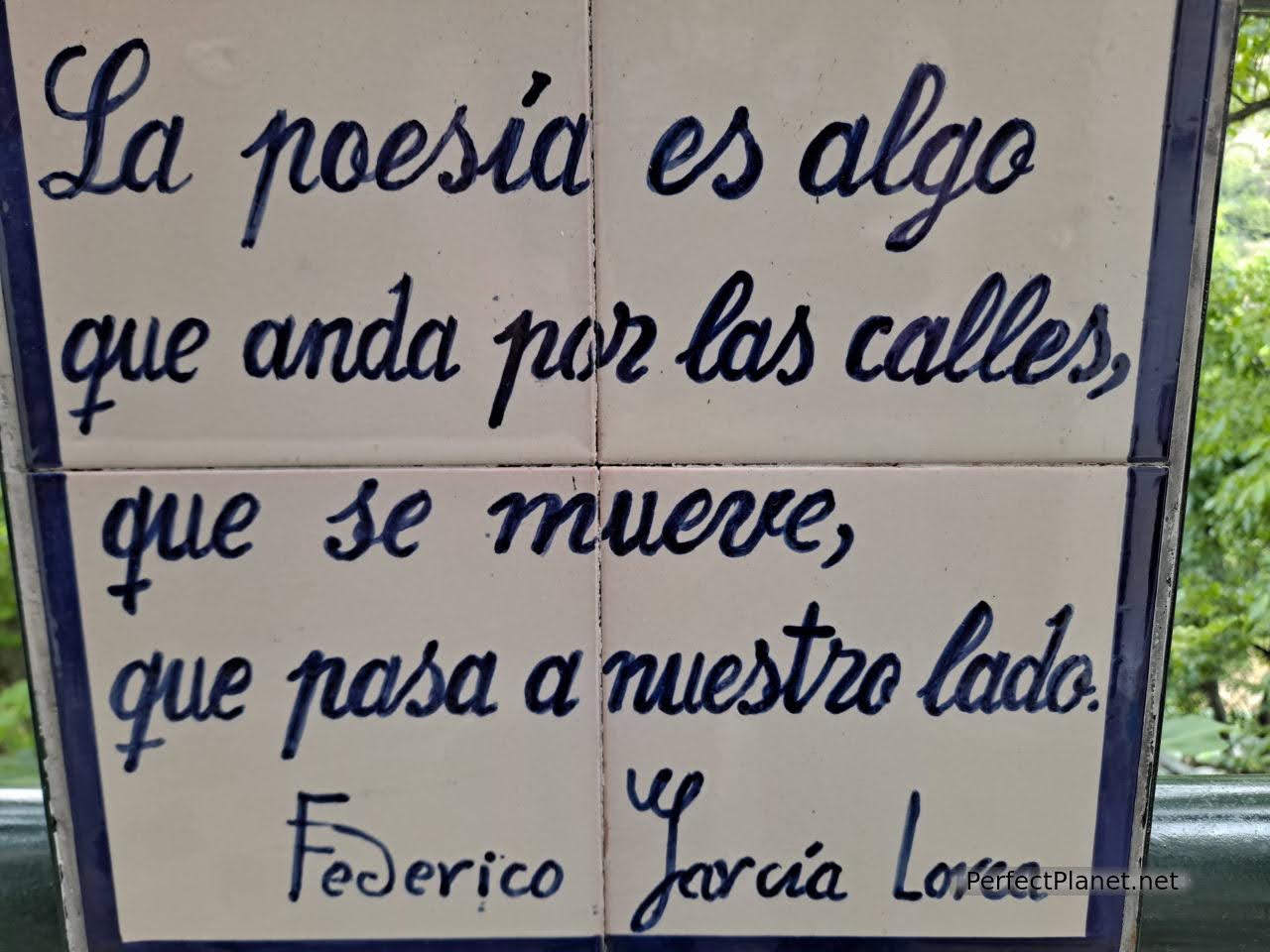
Lorca poem
- Log in to post comments

